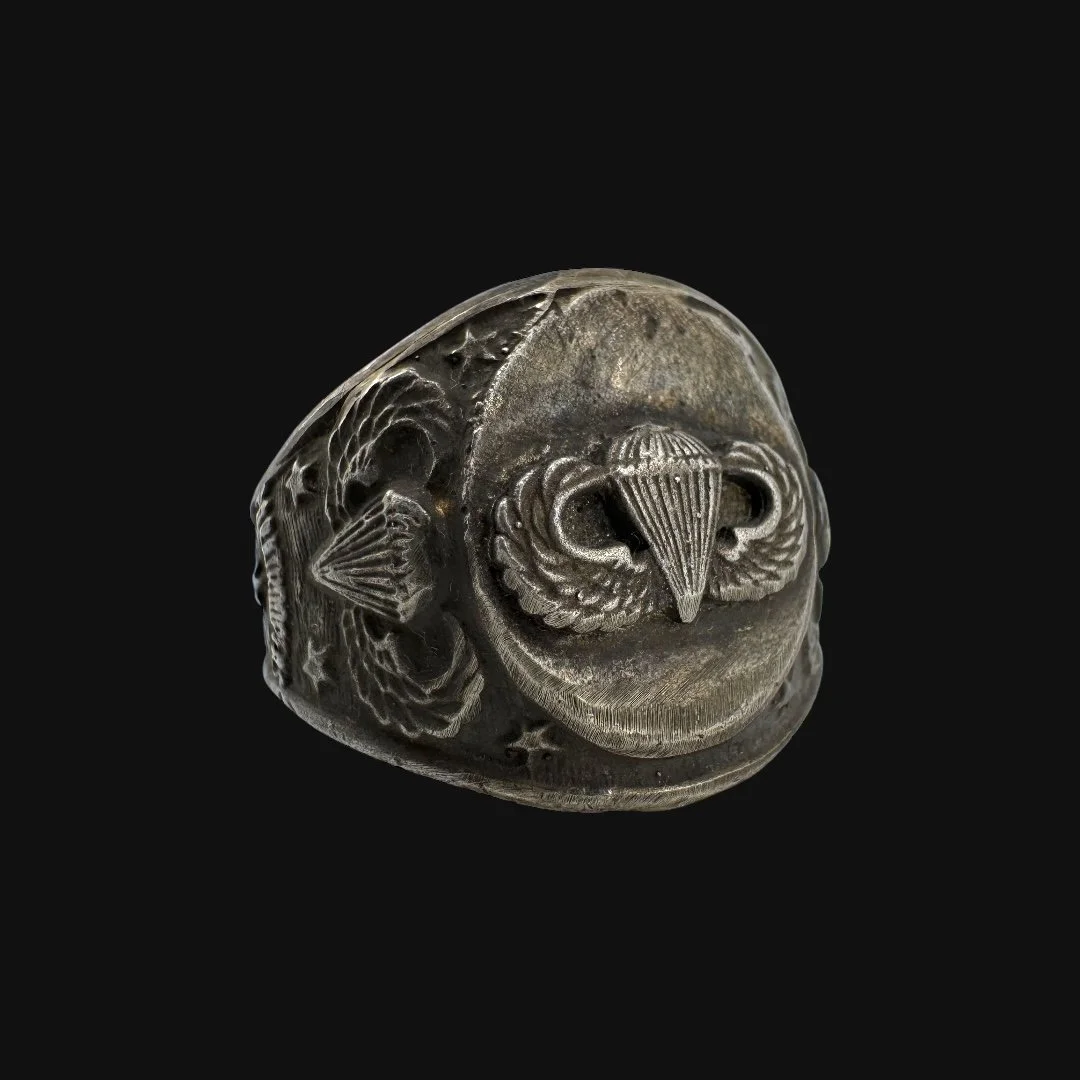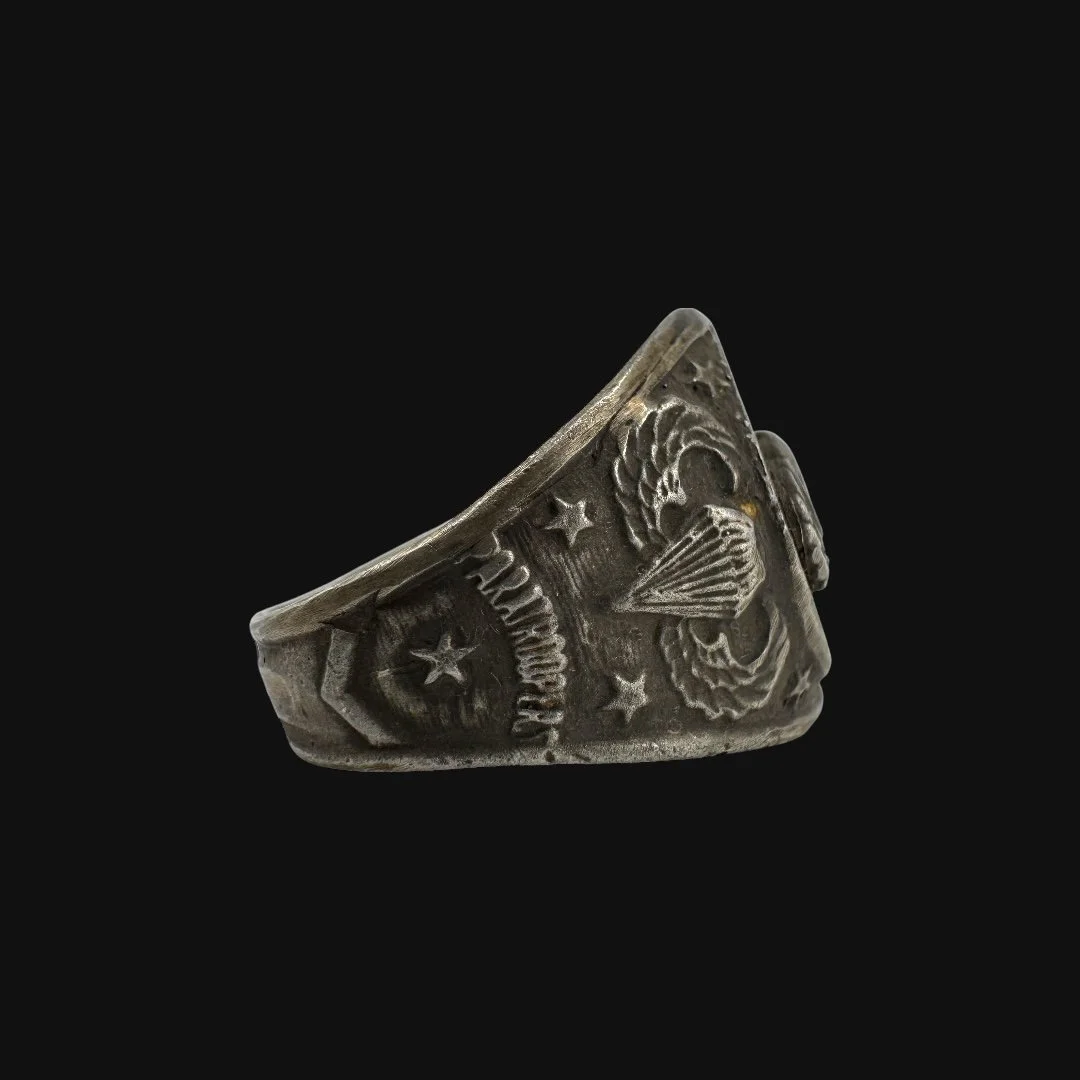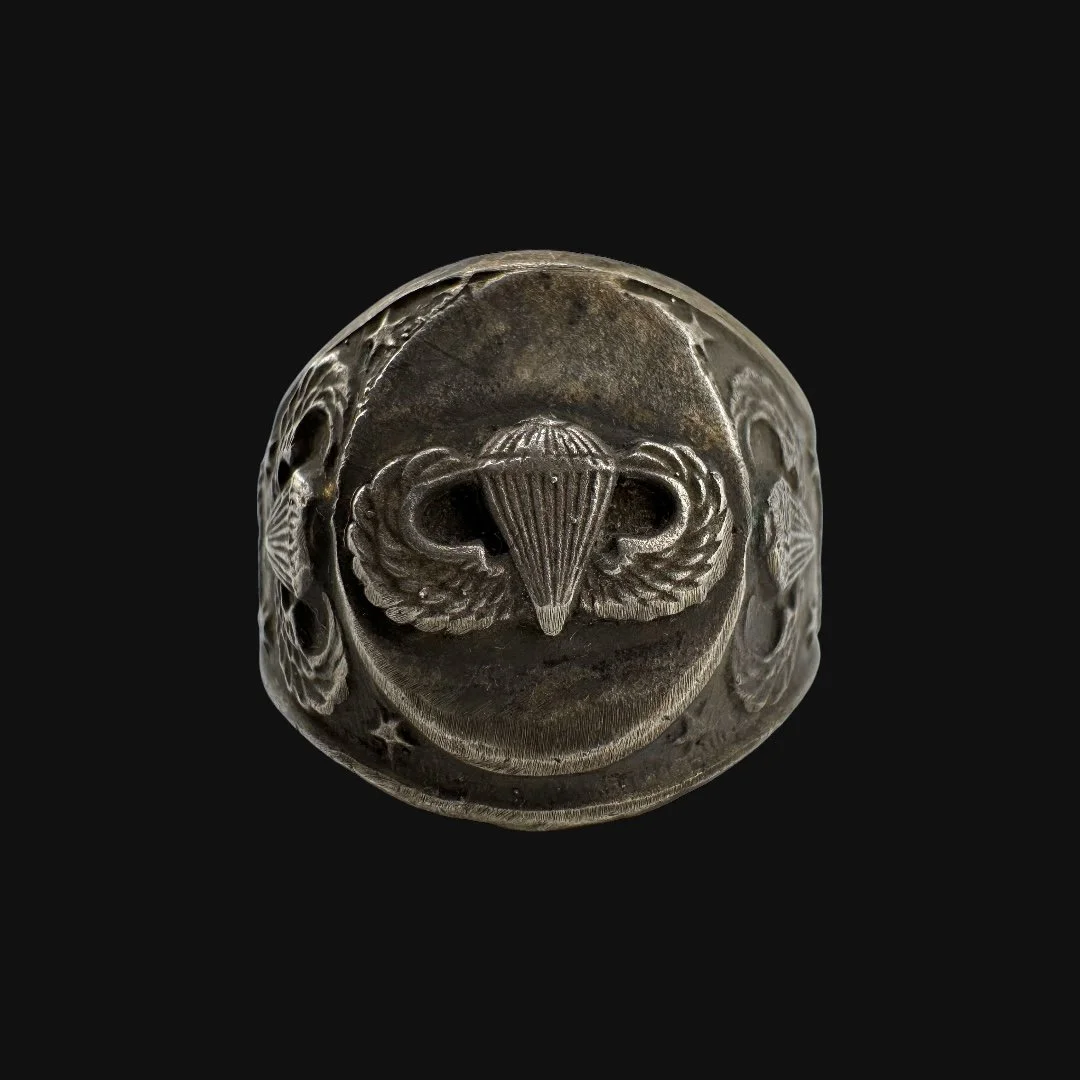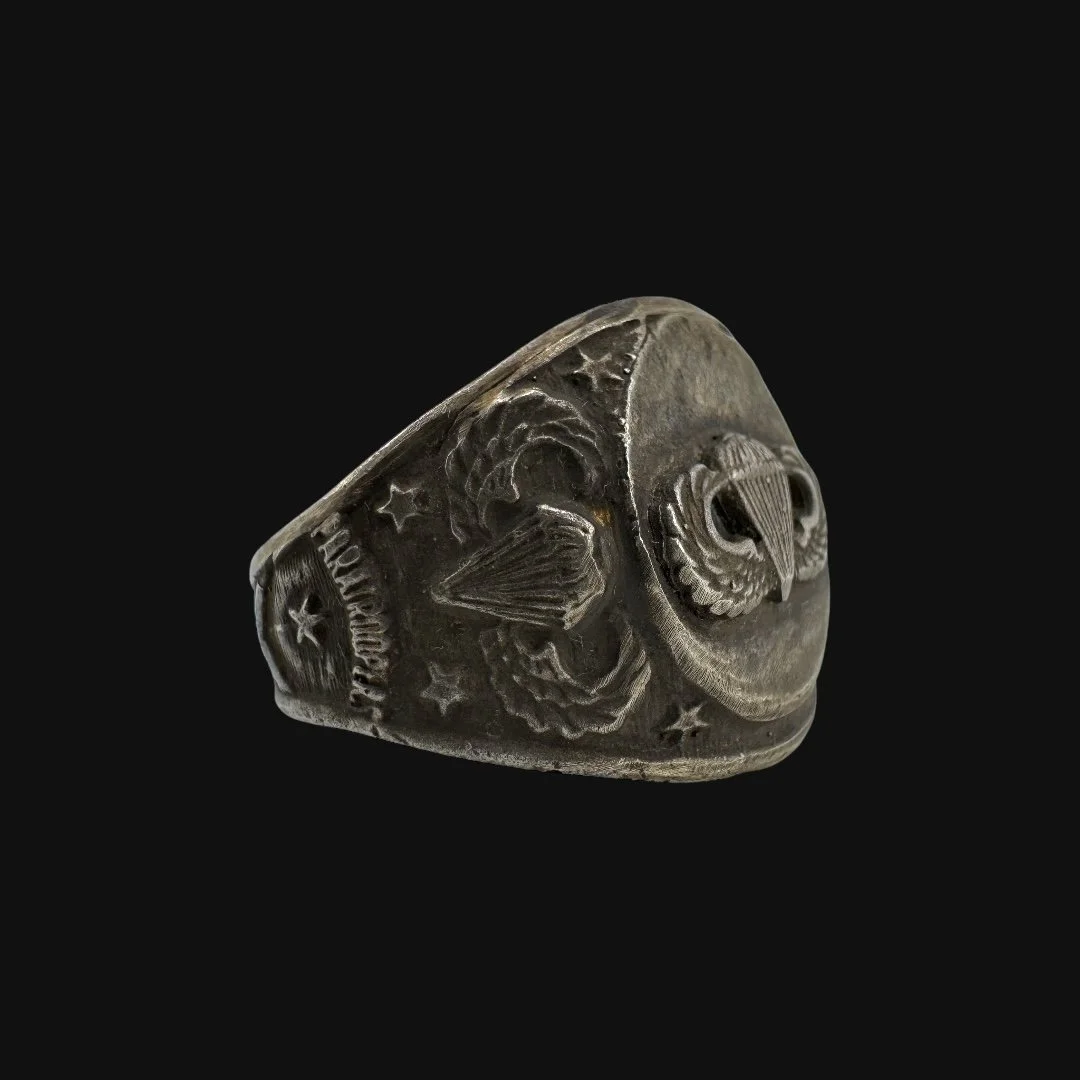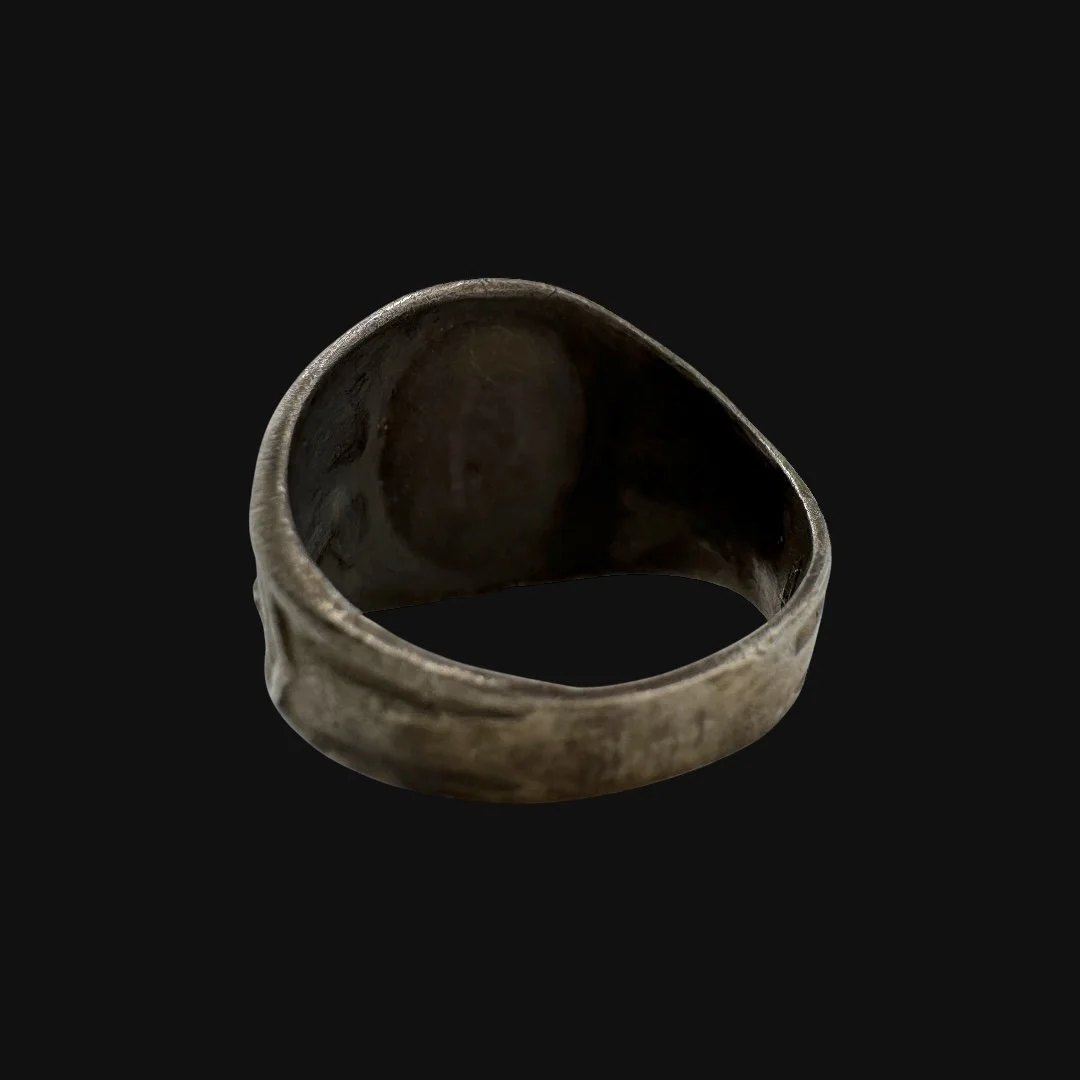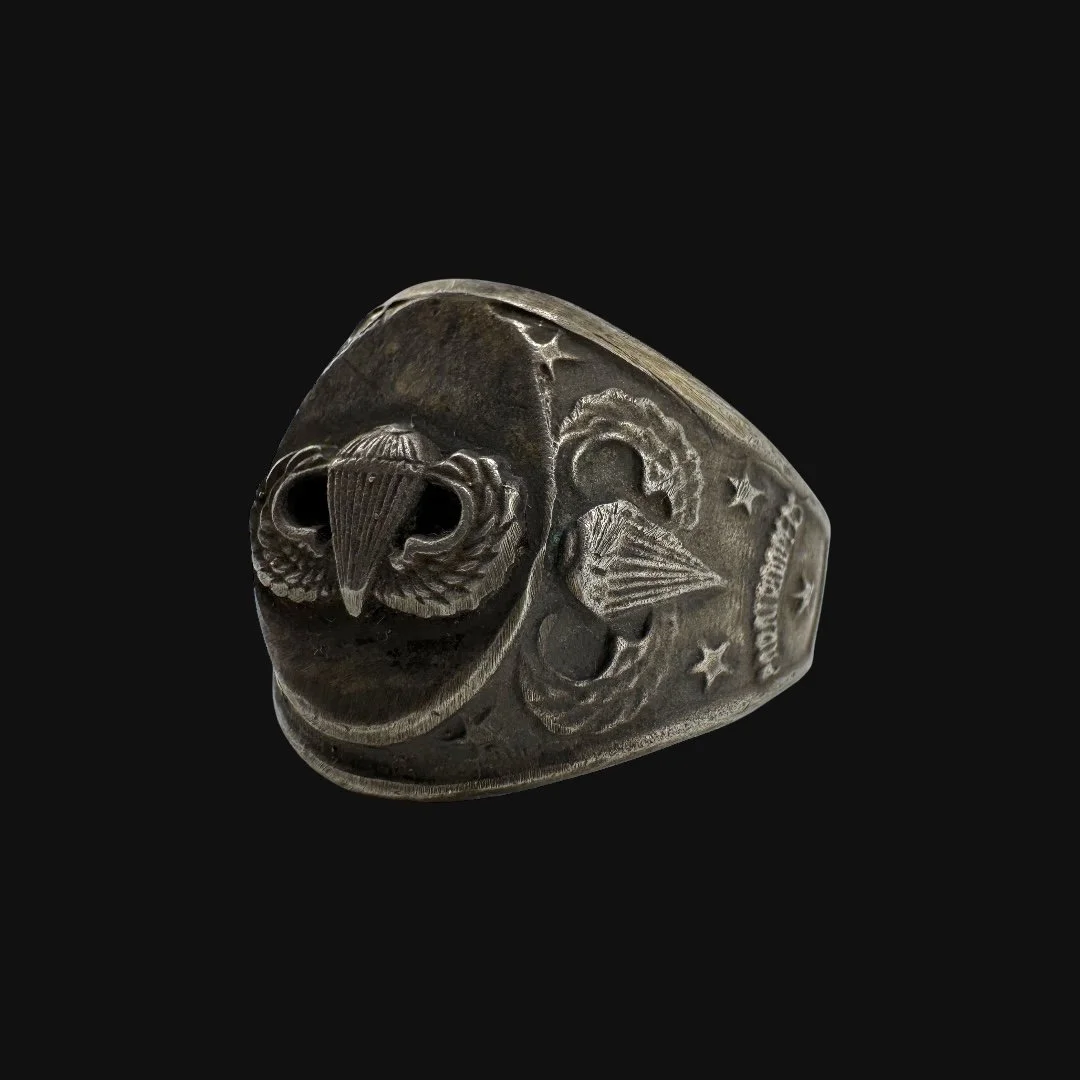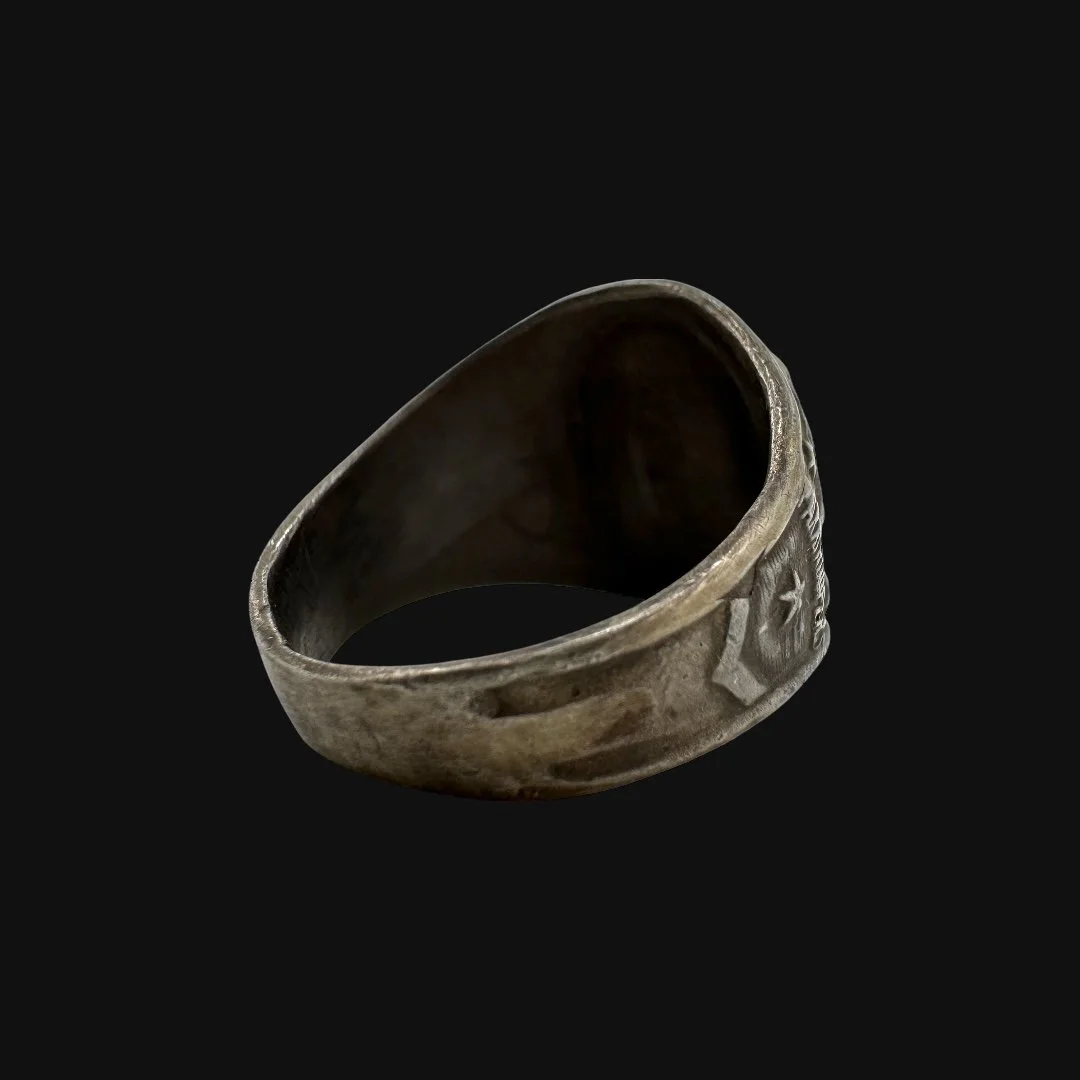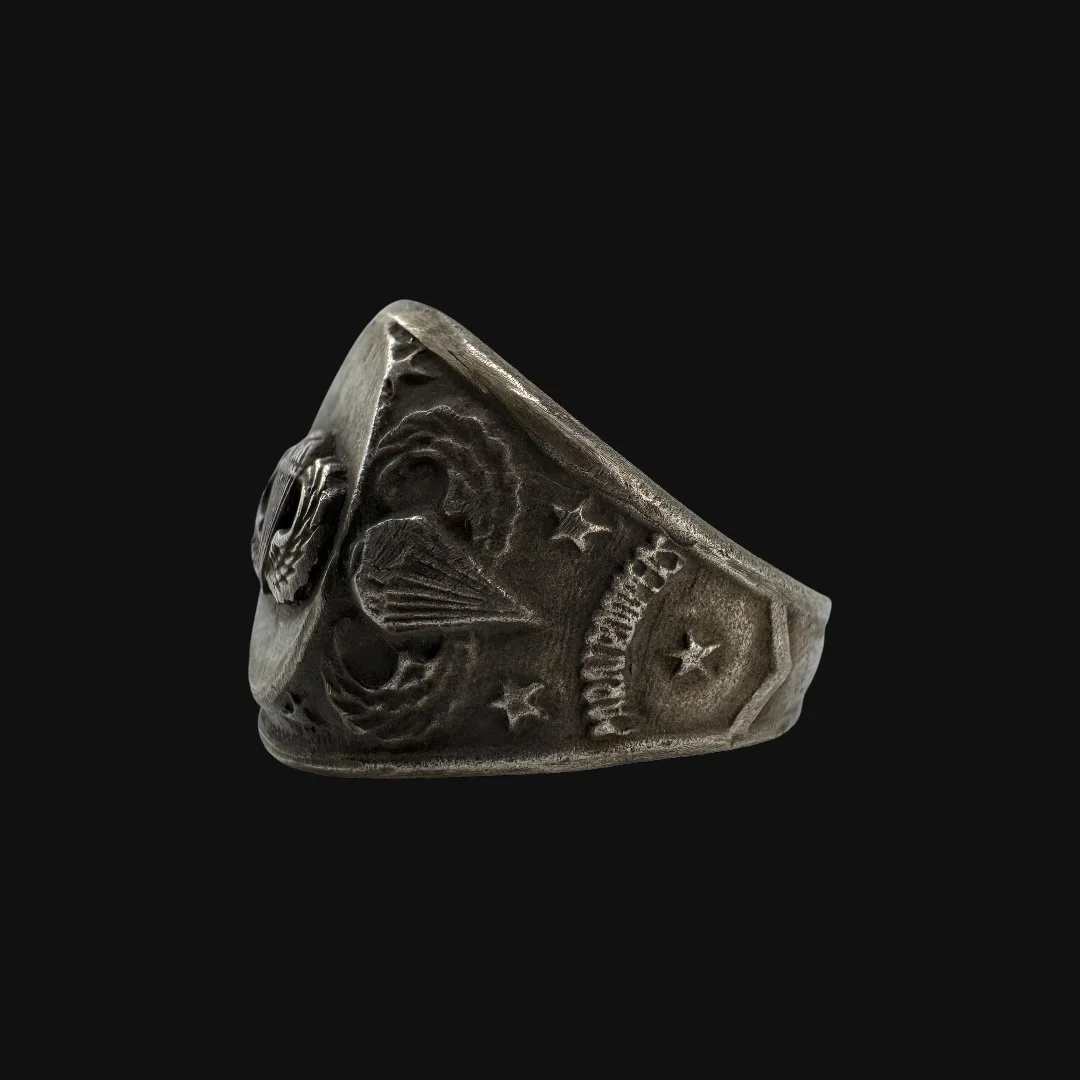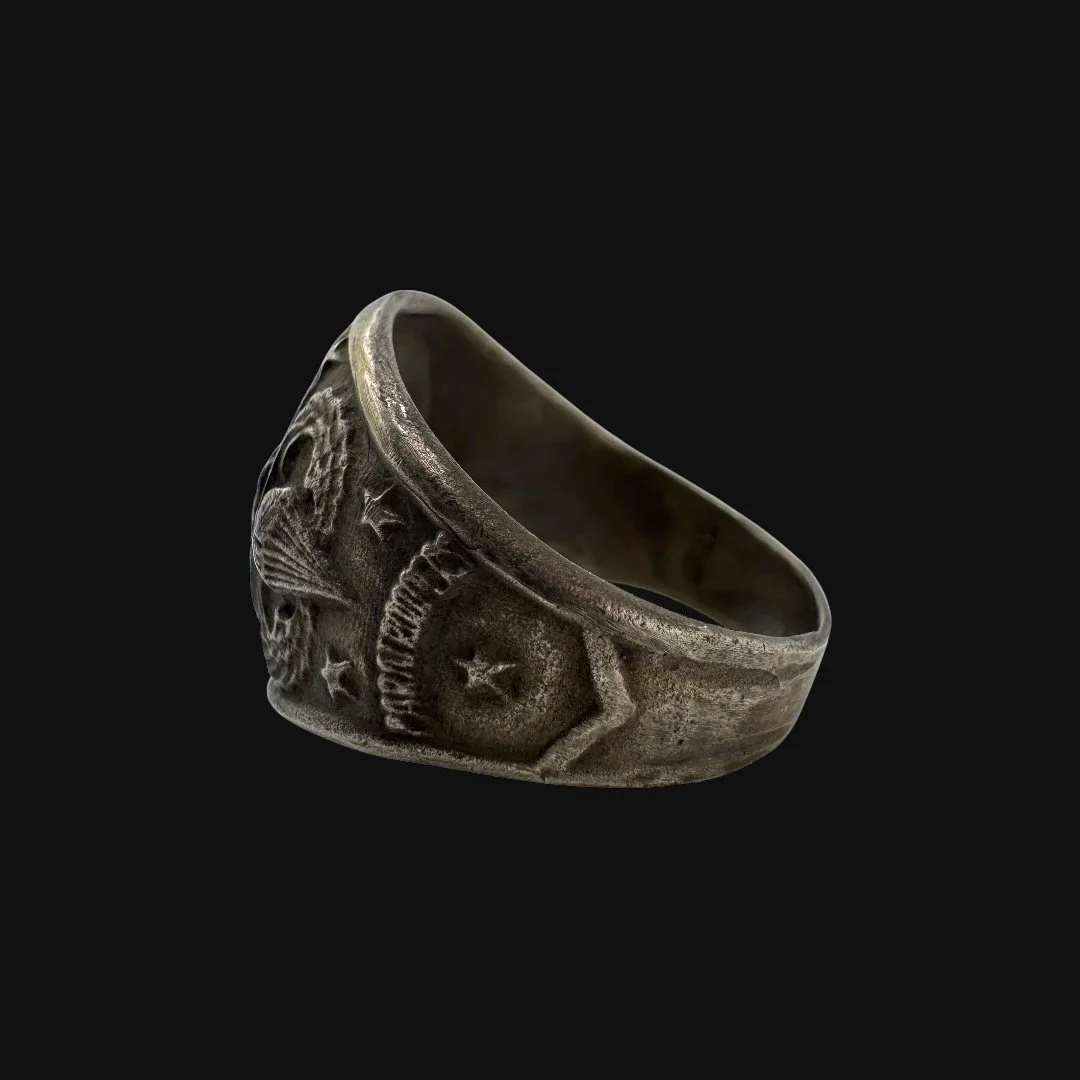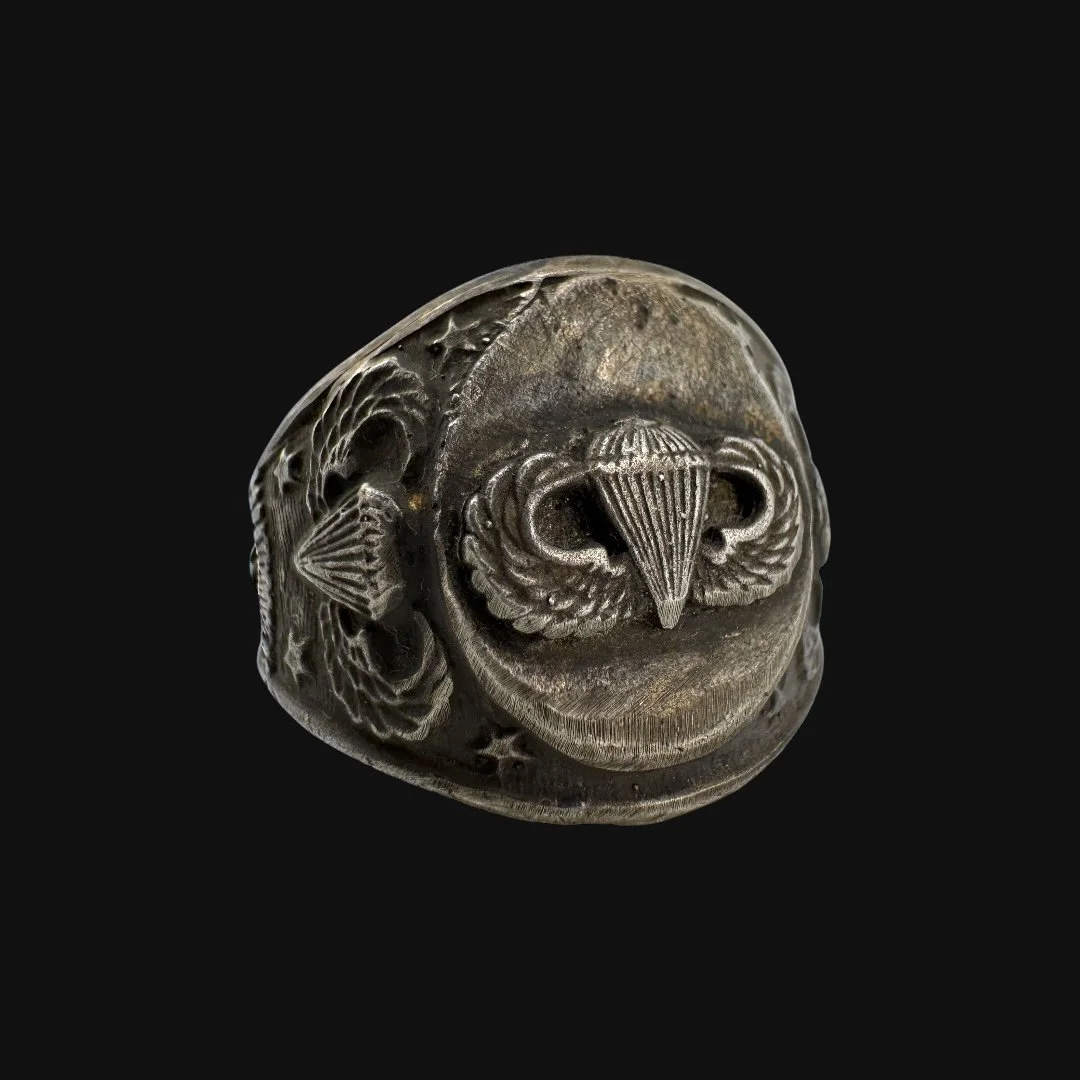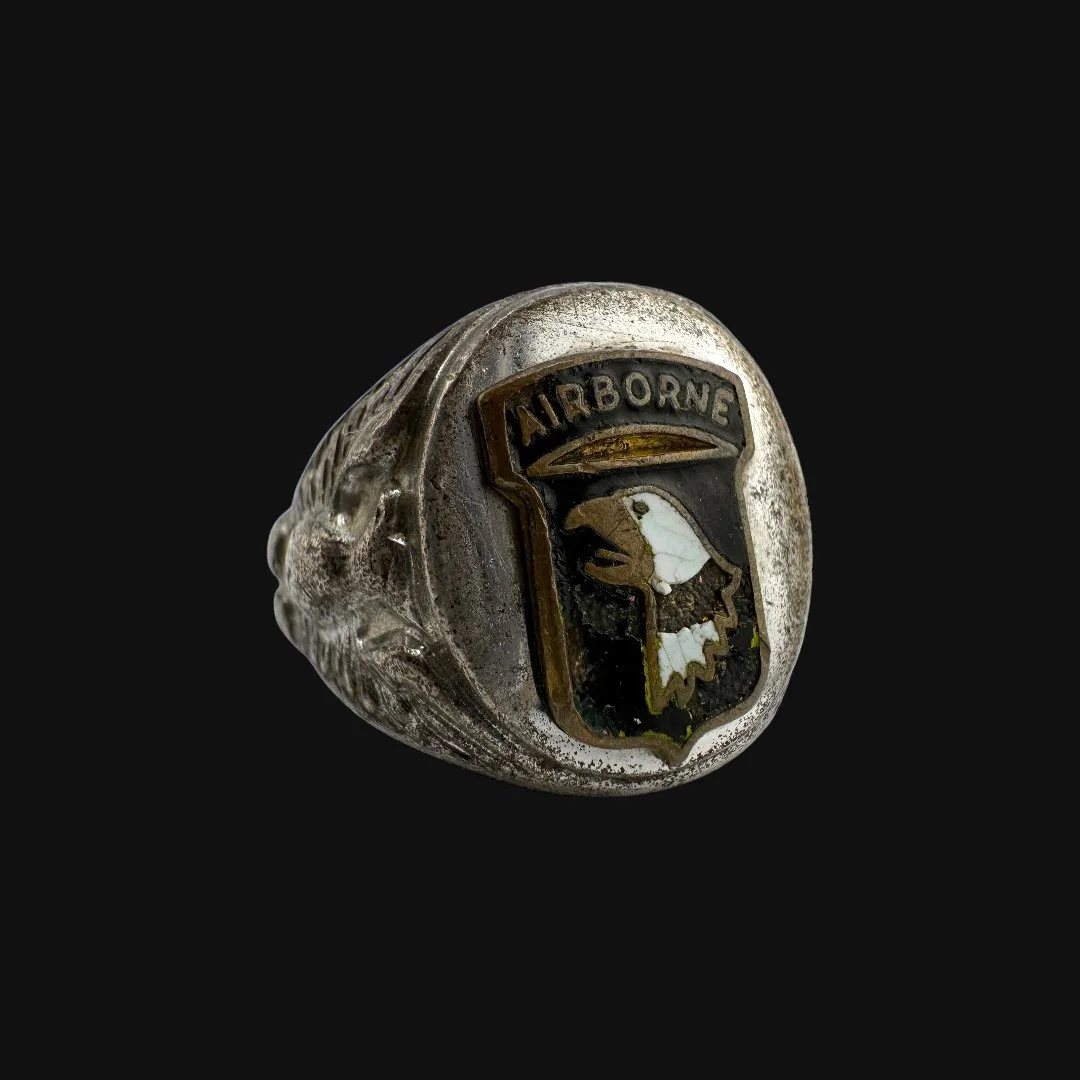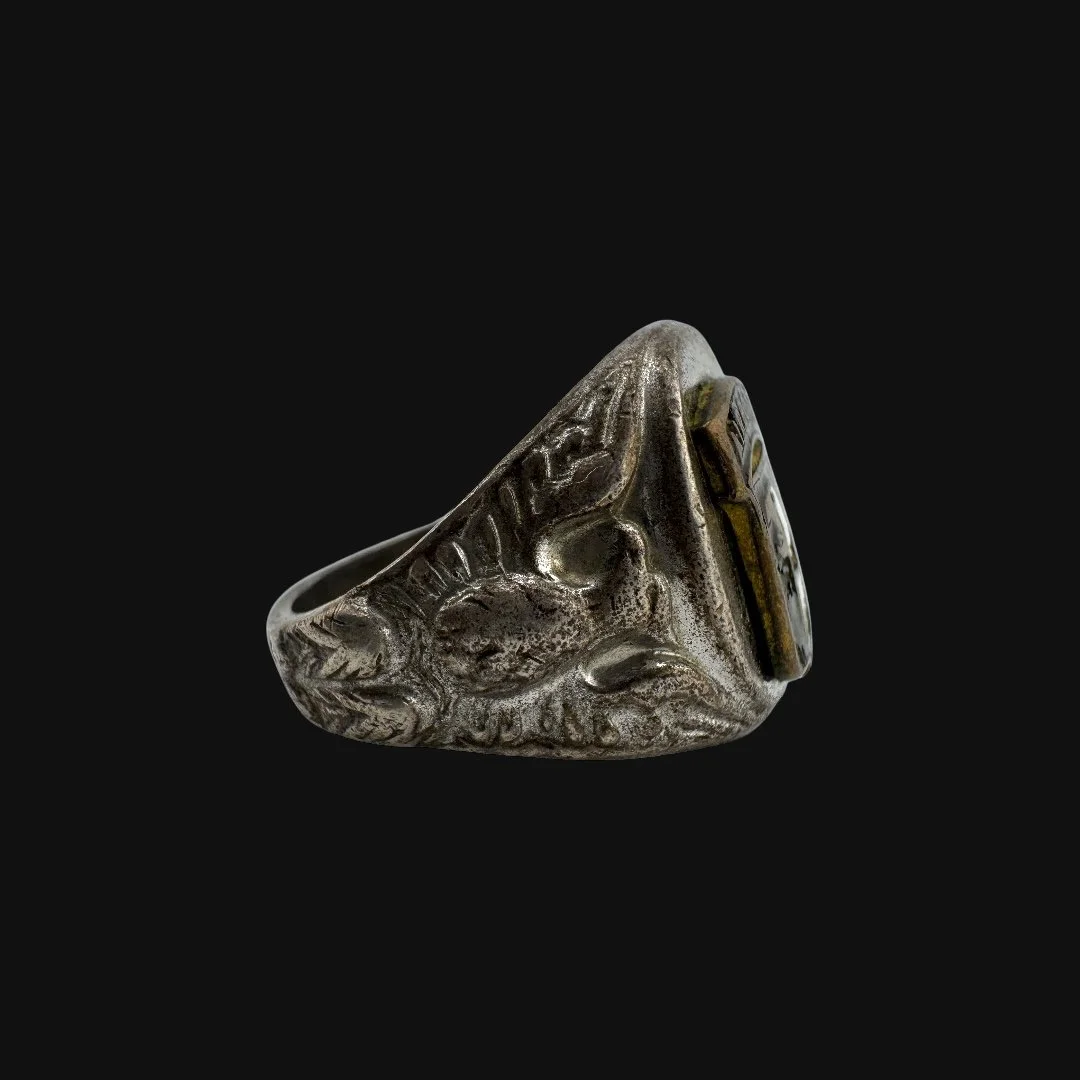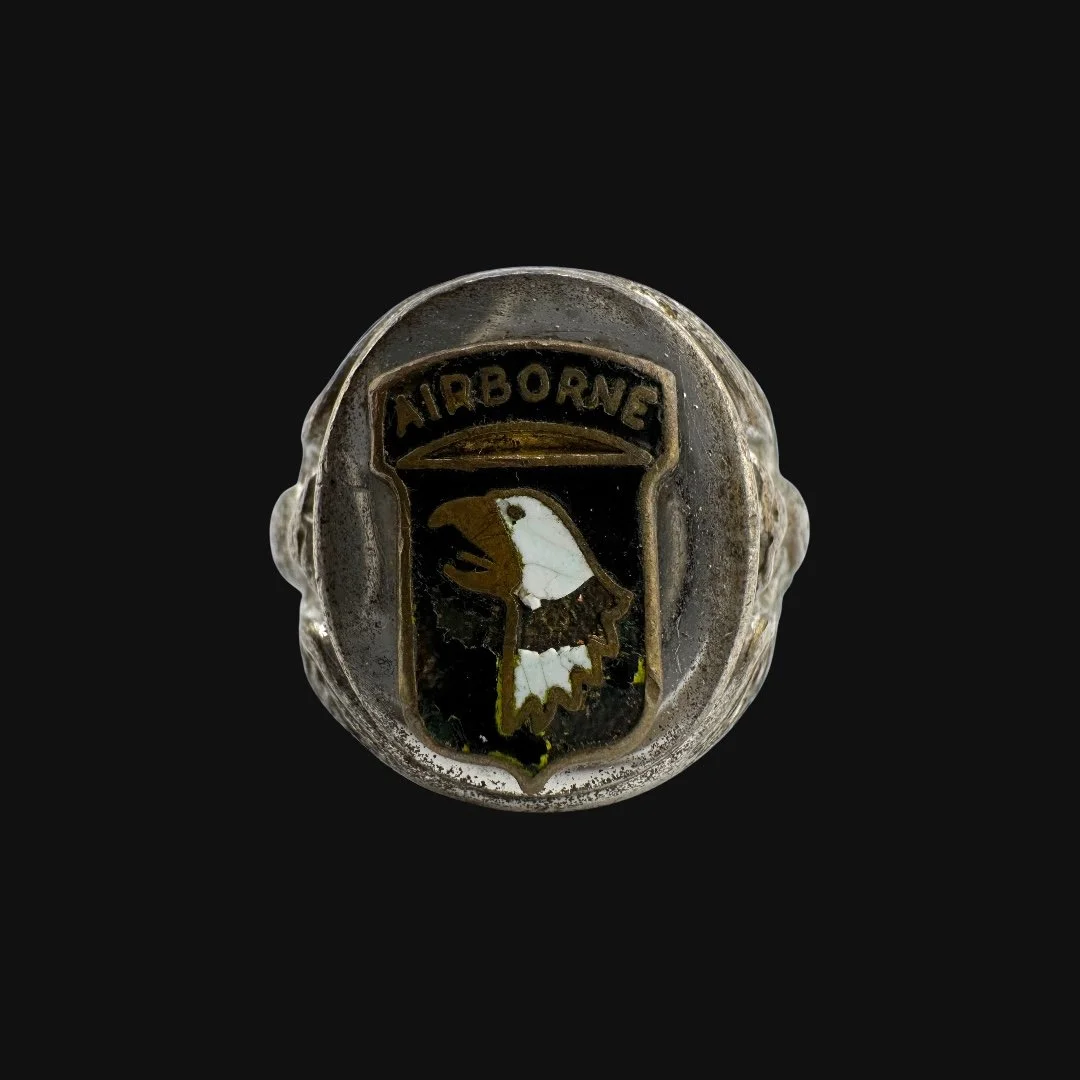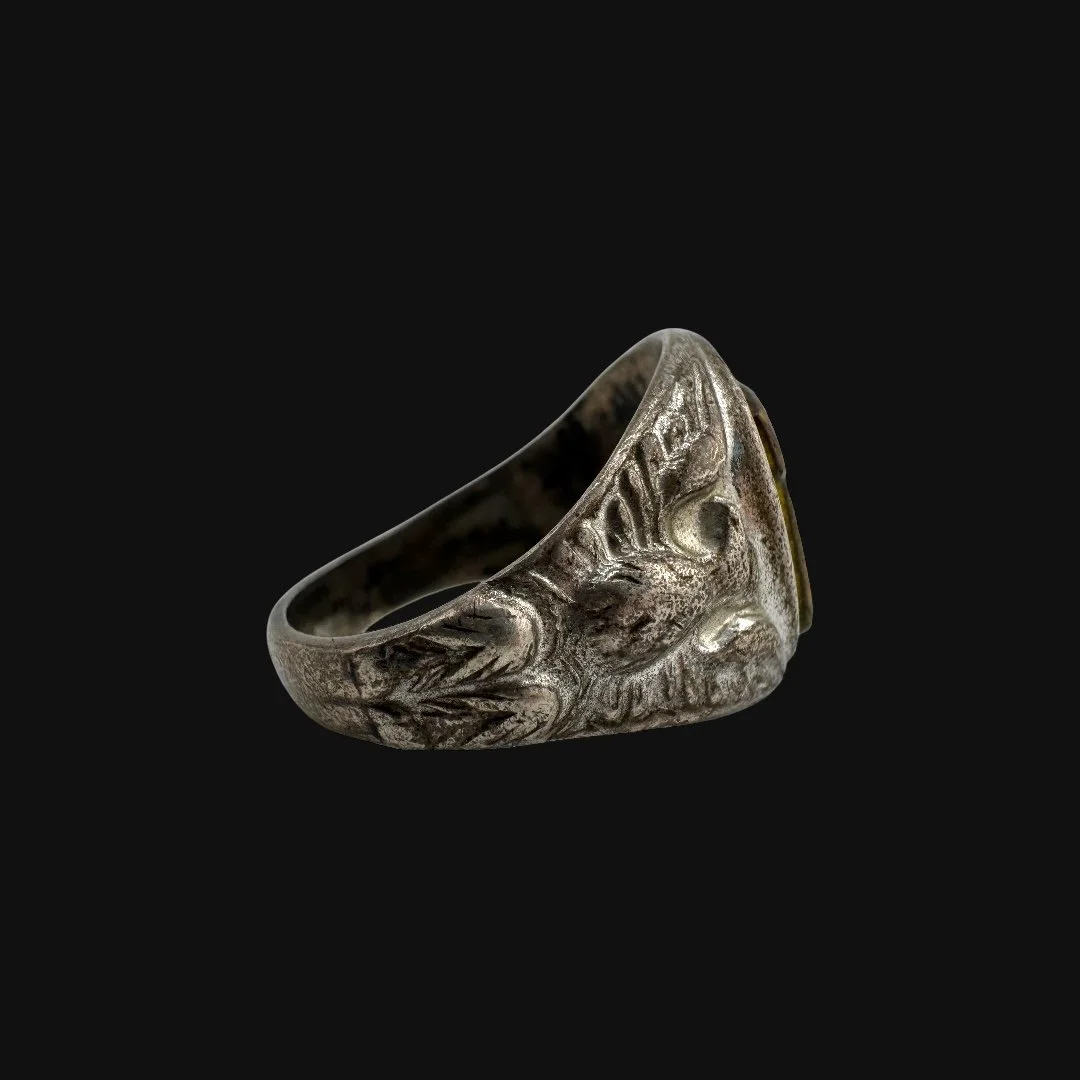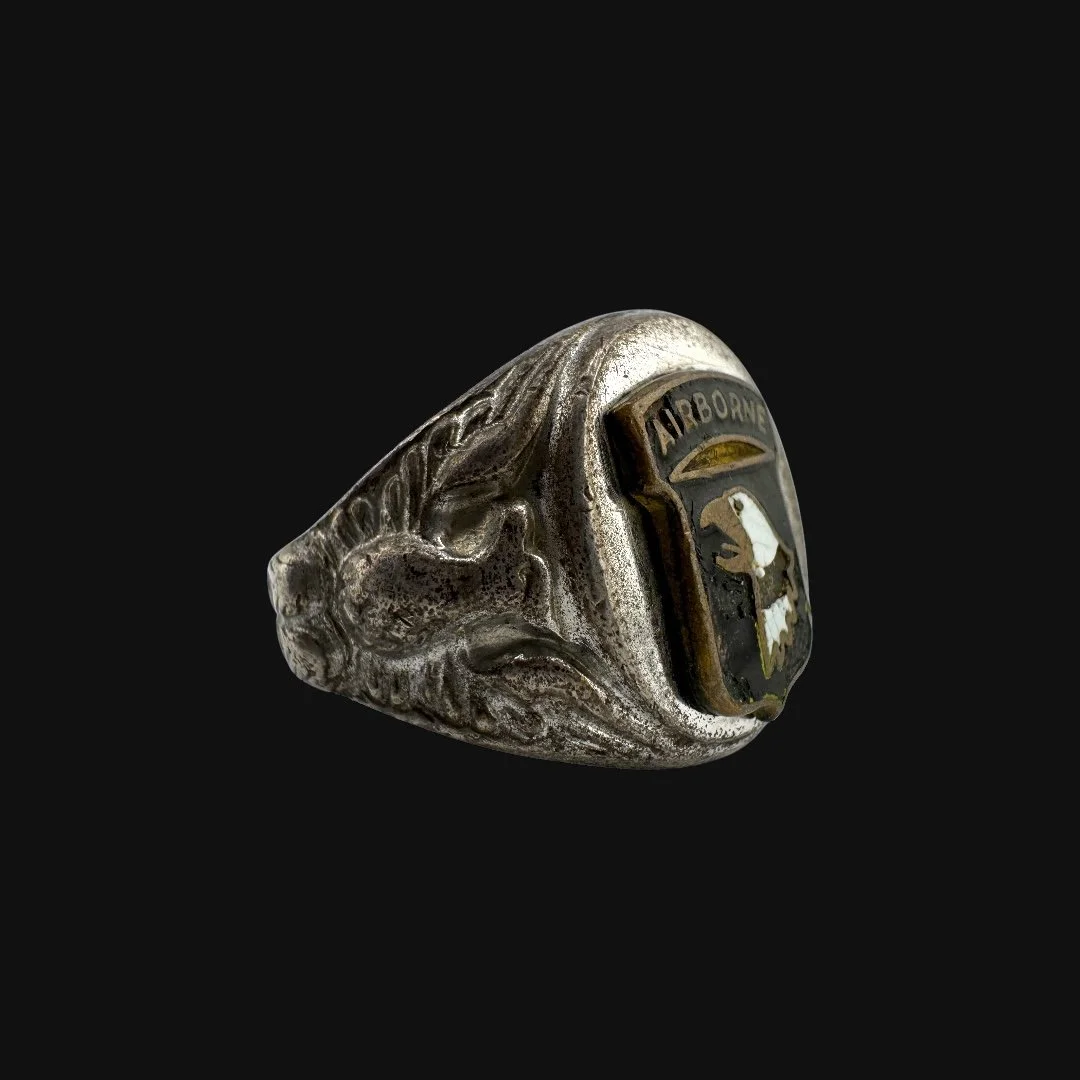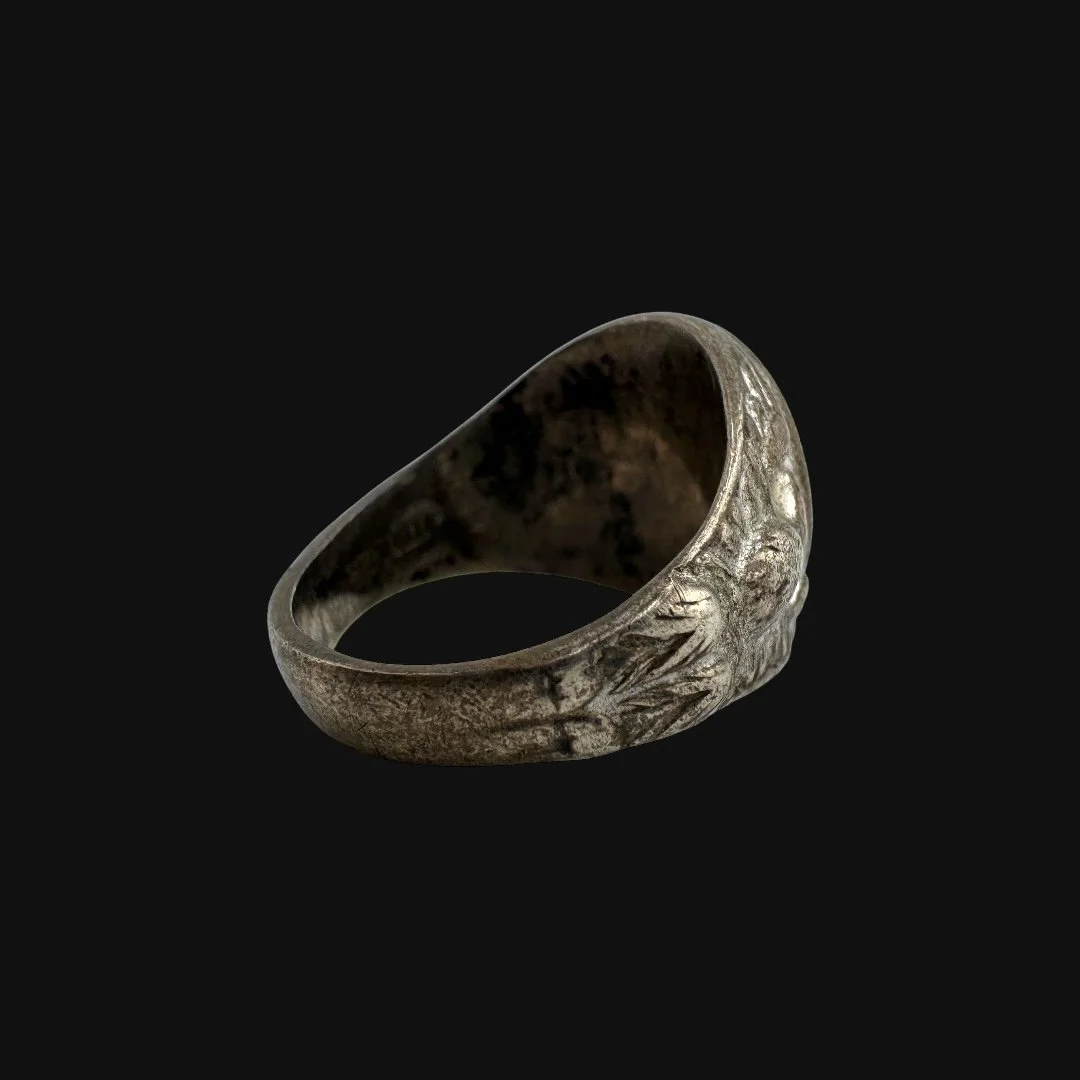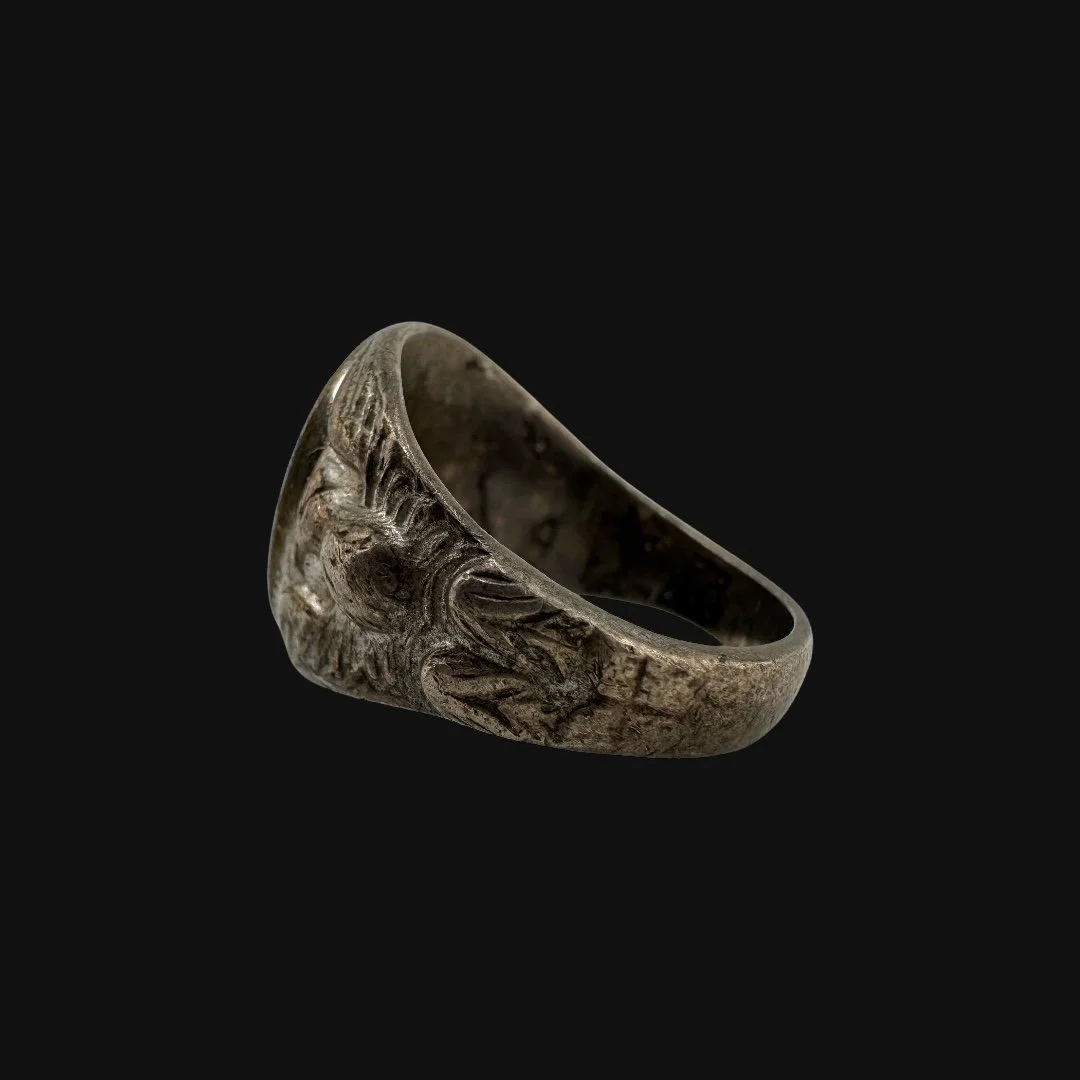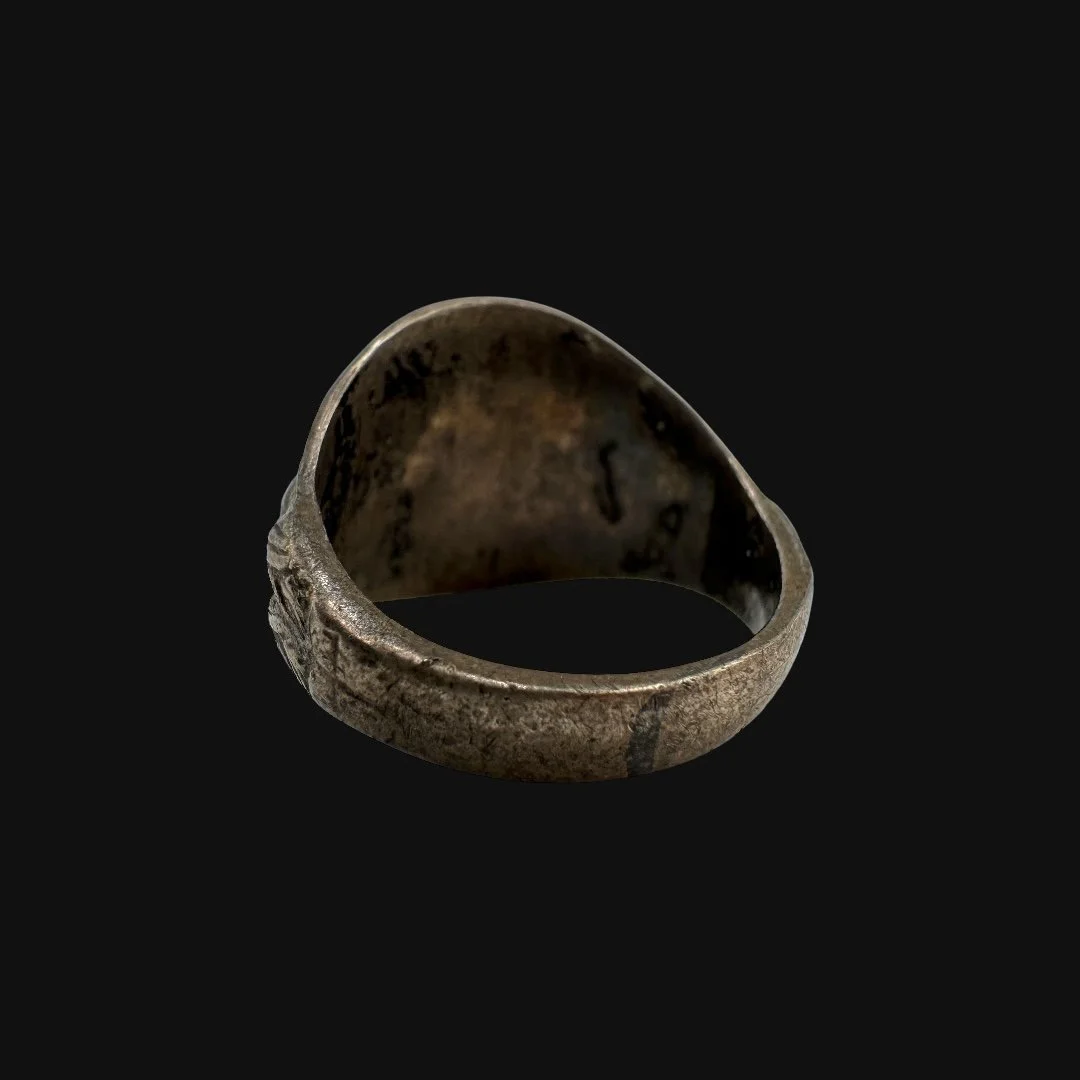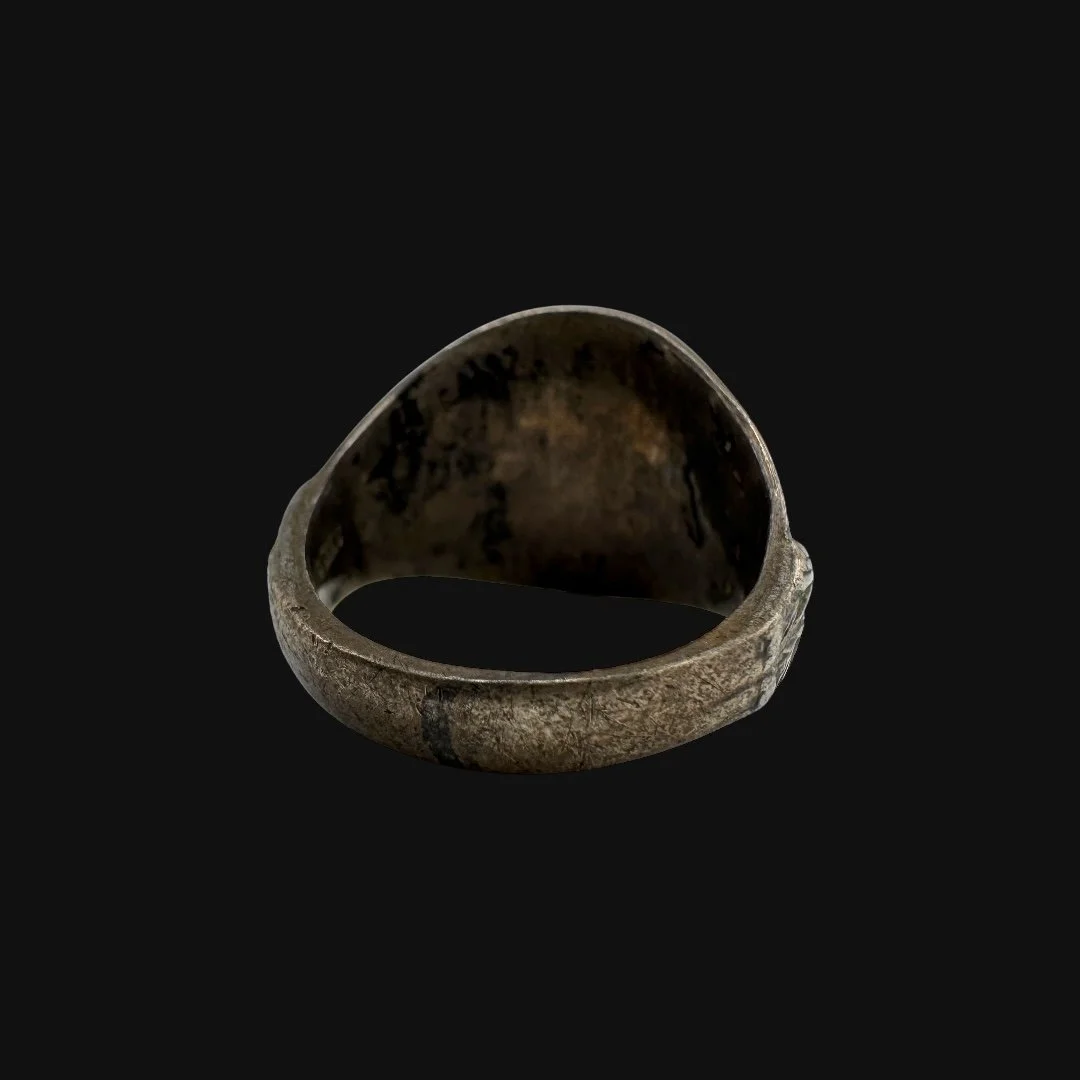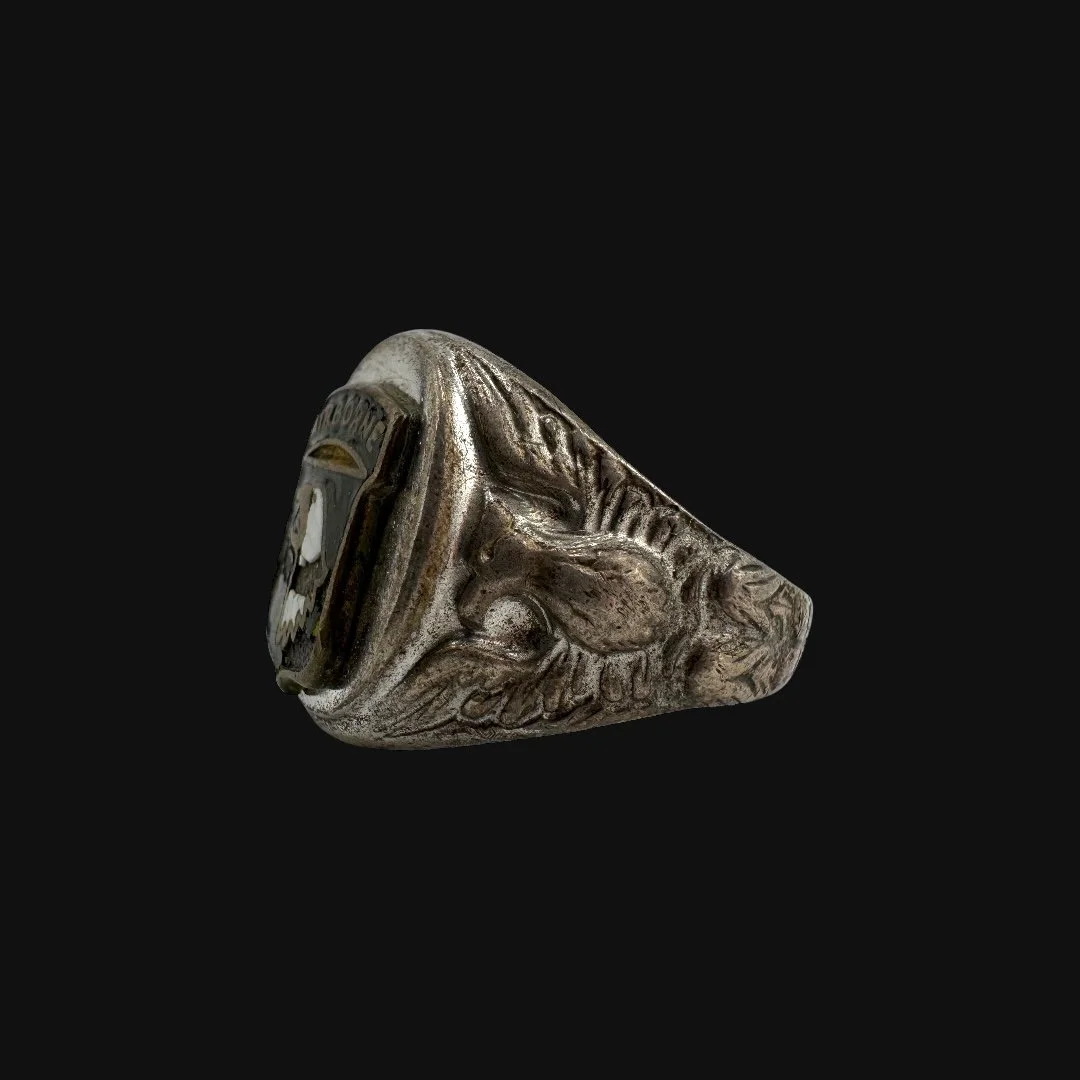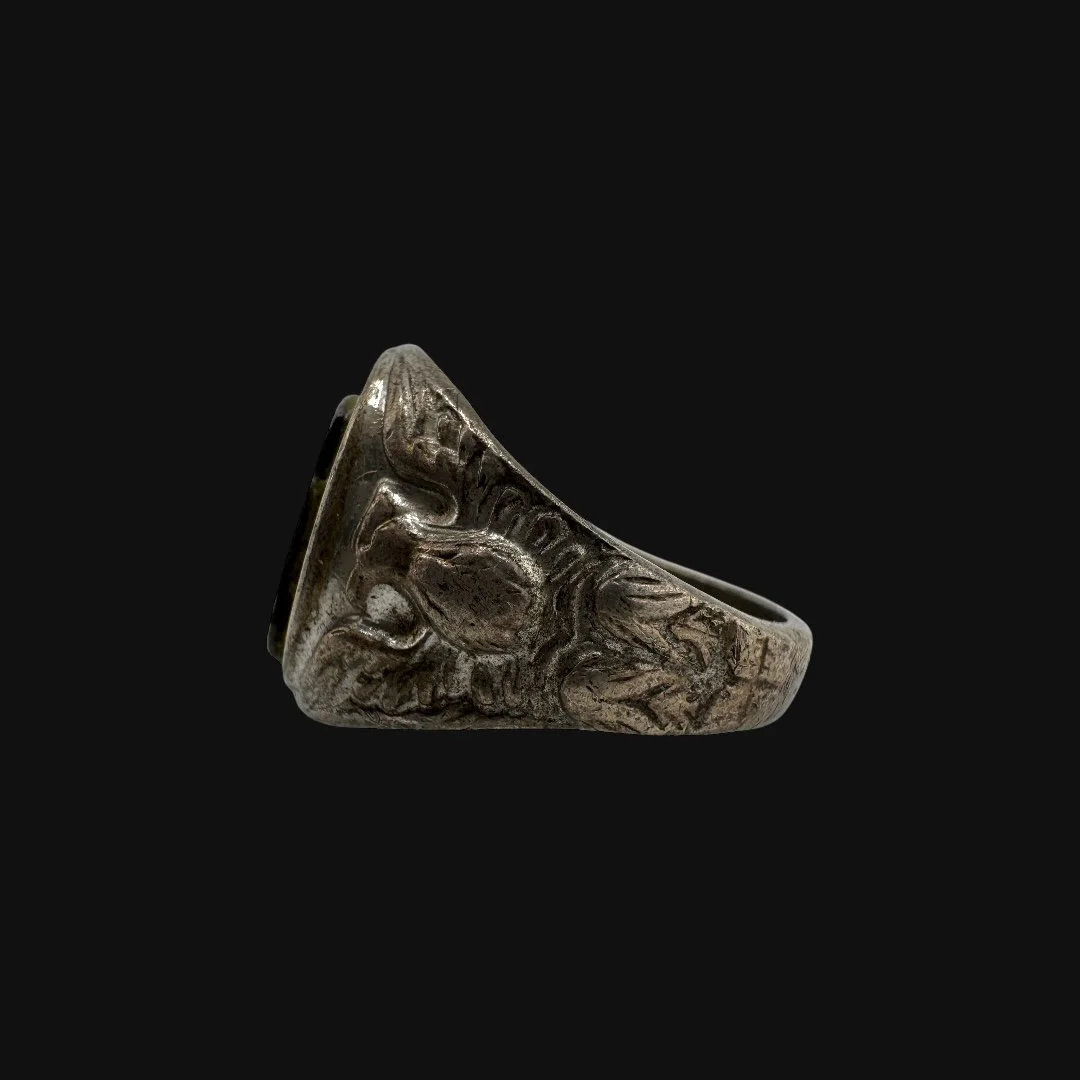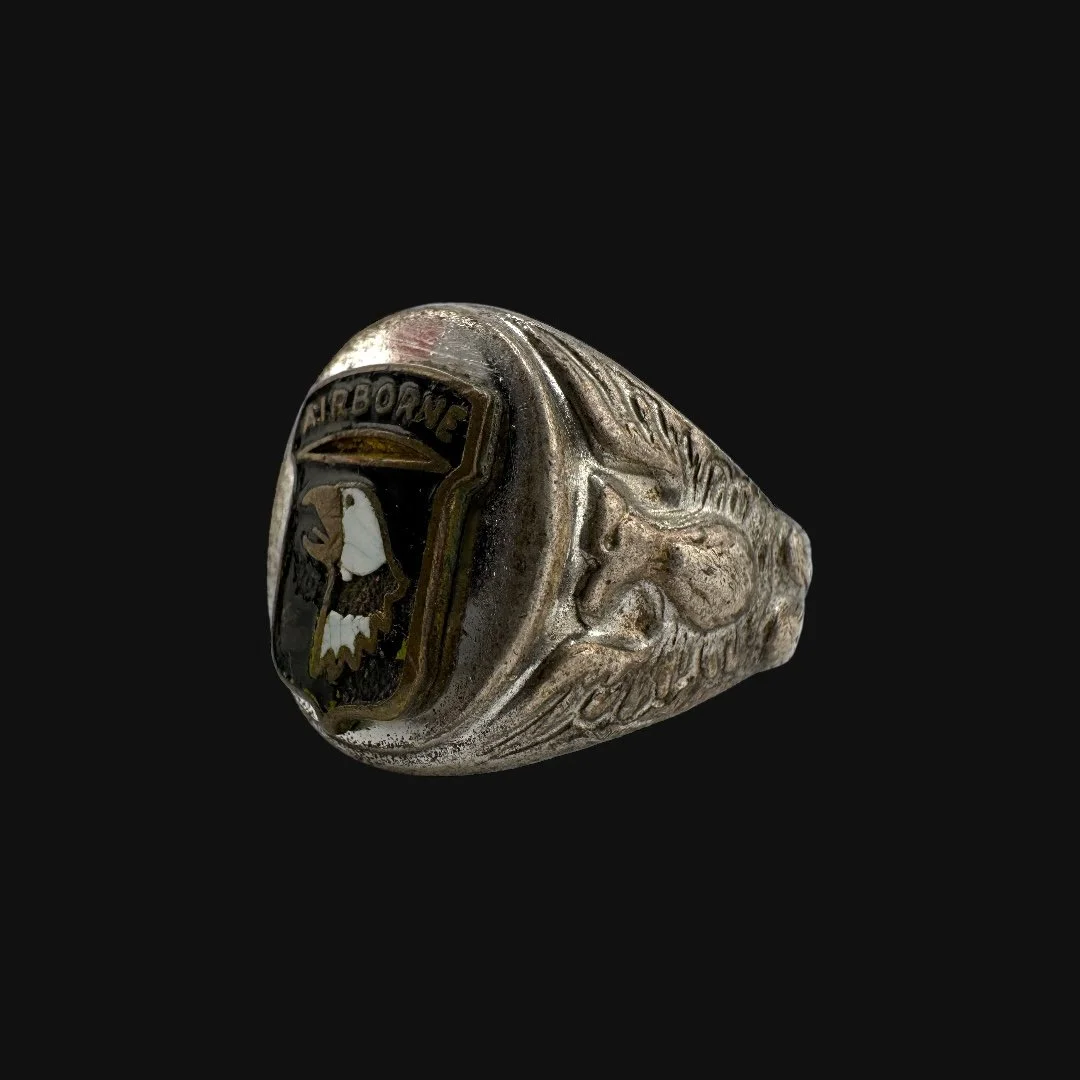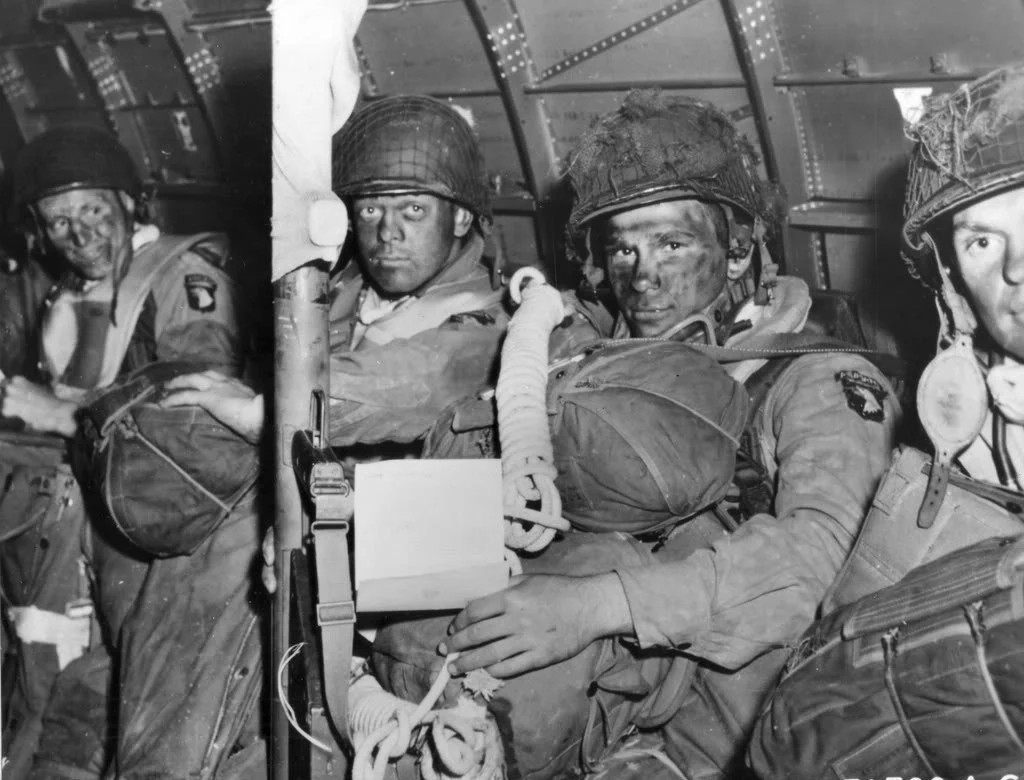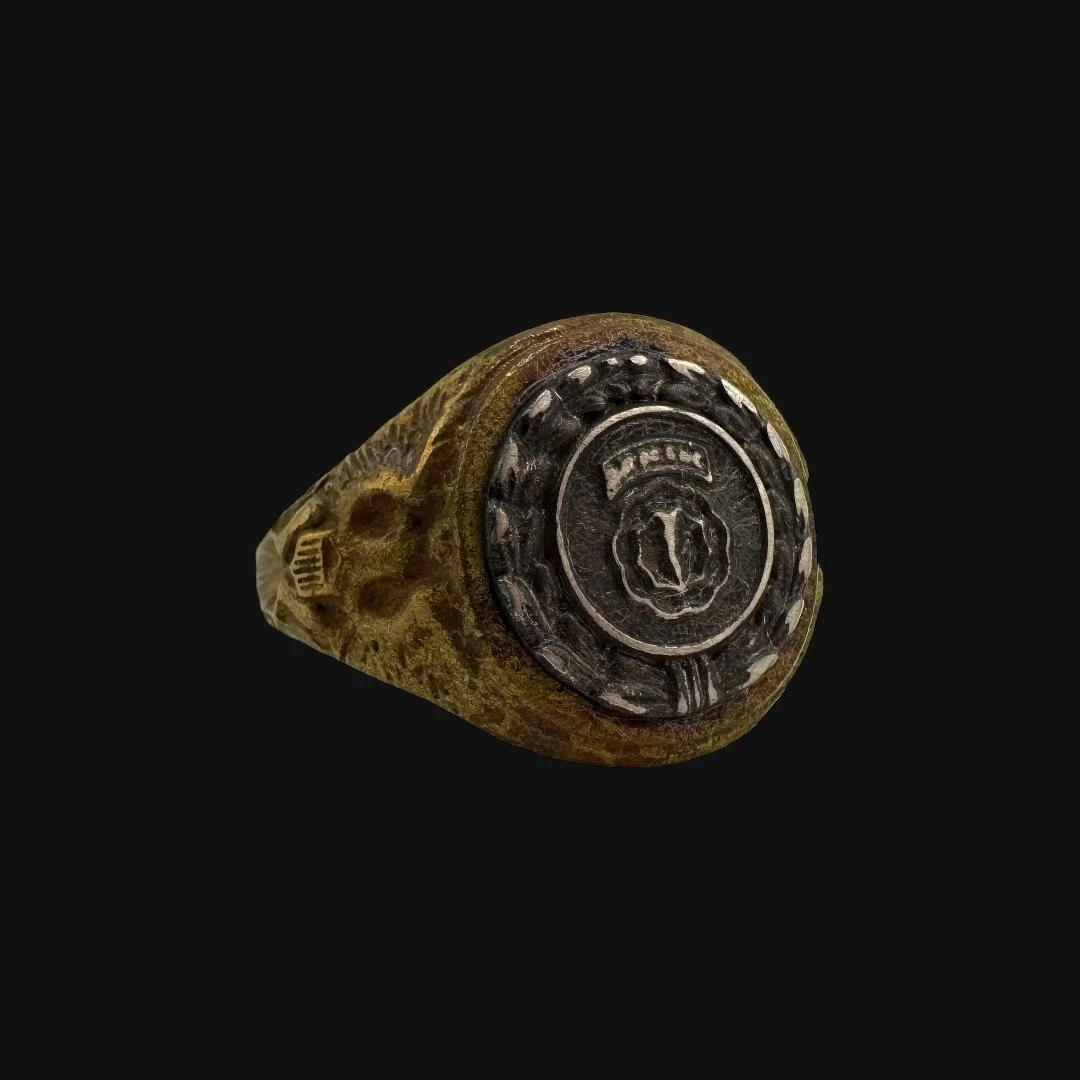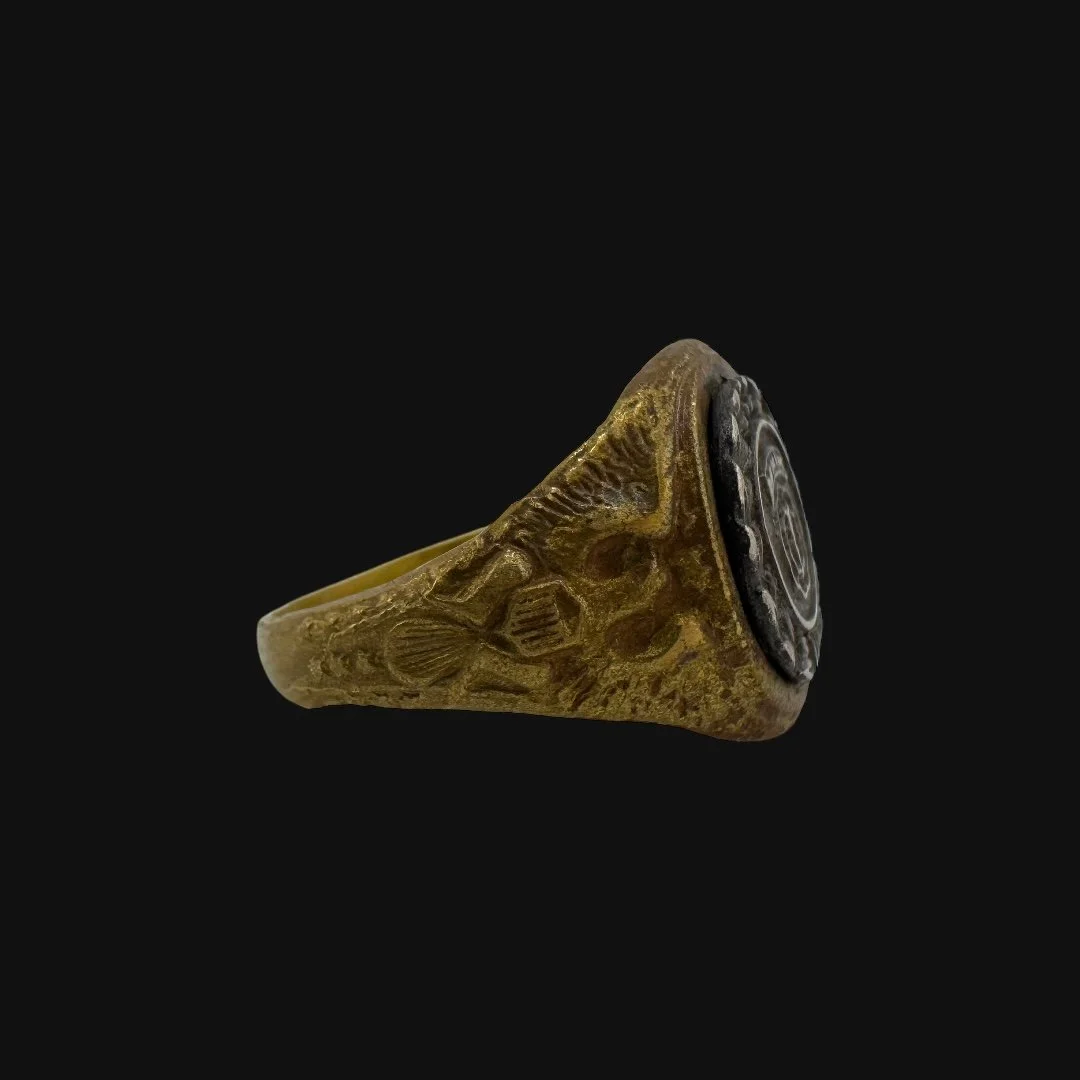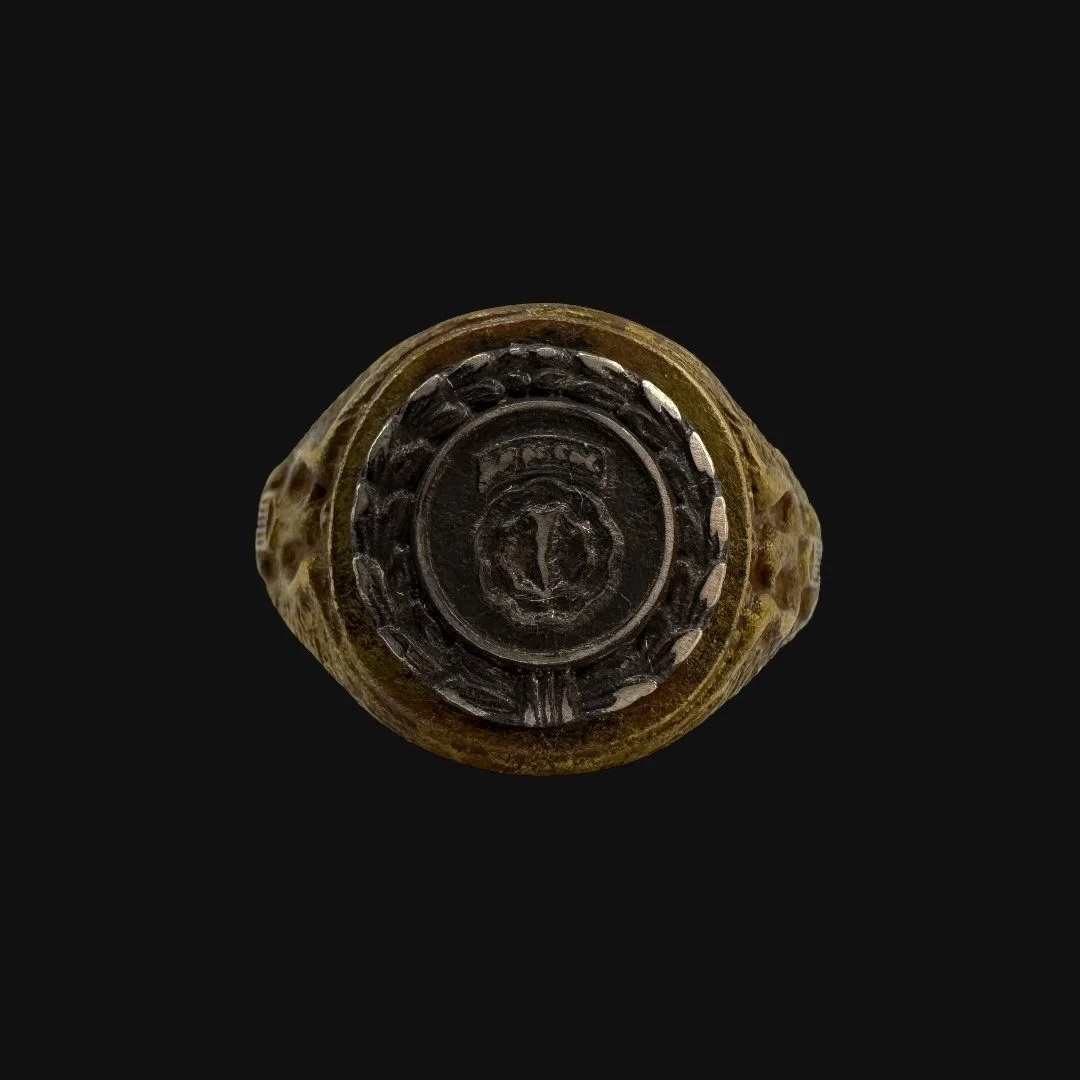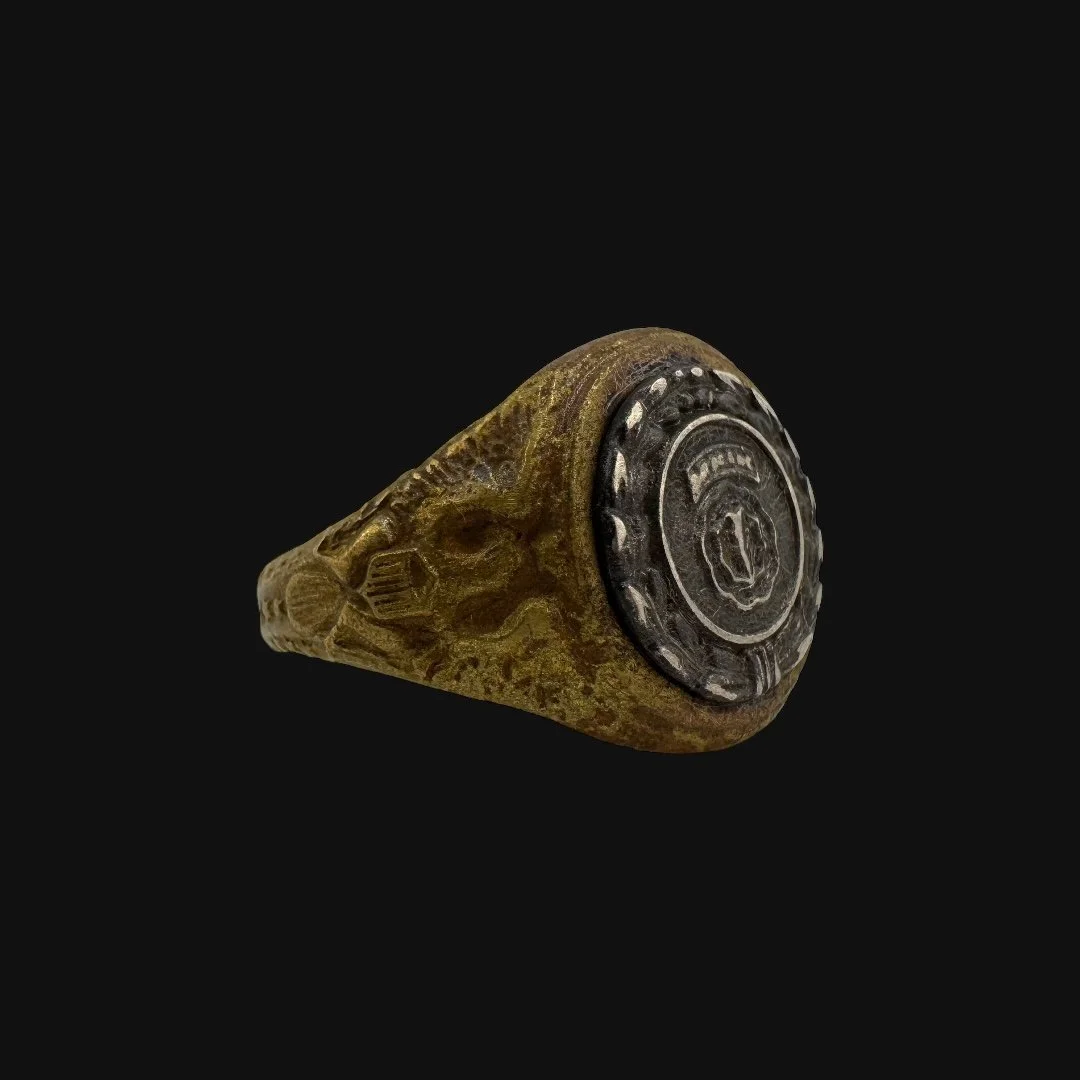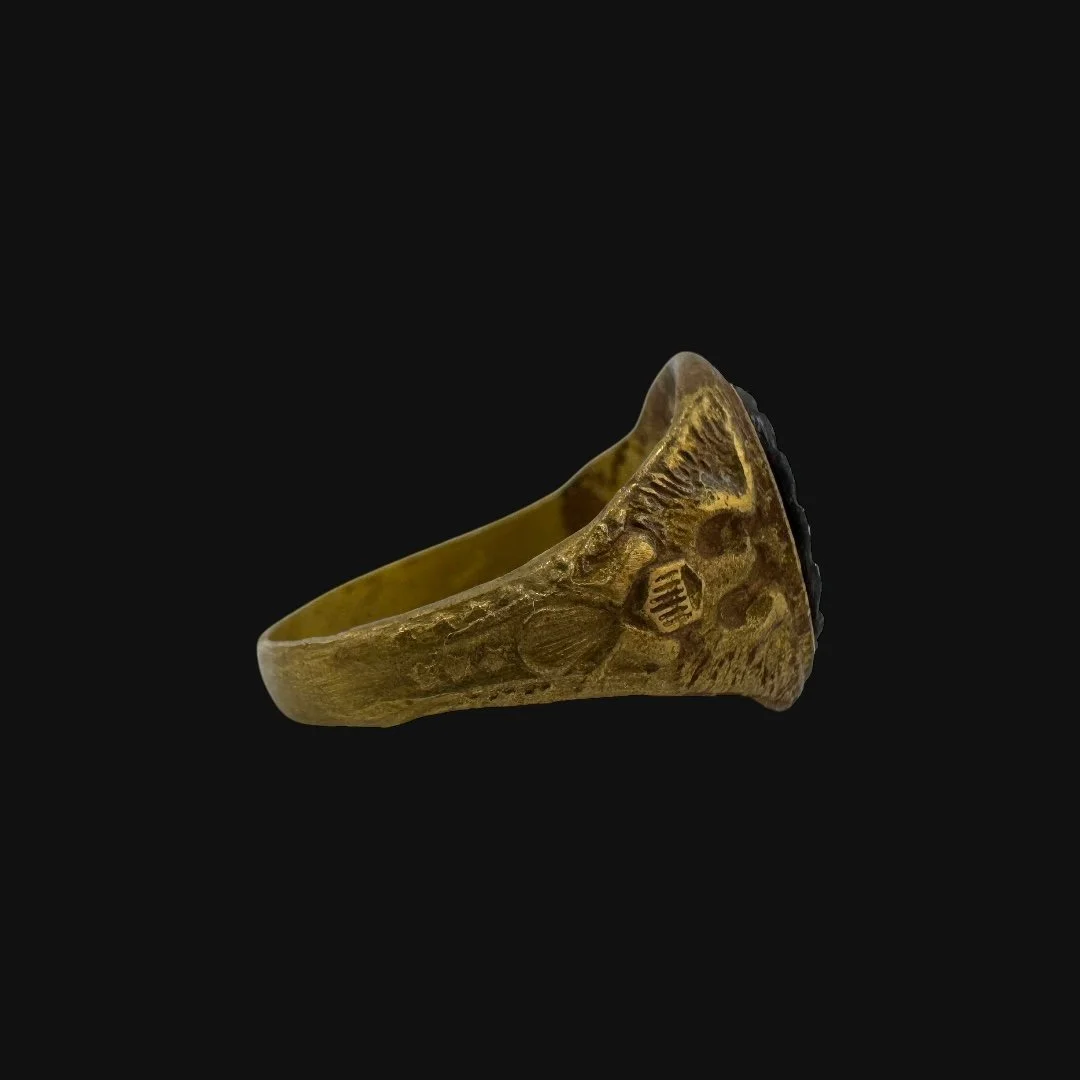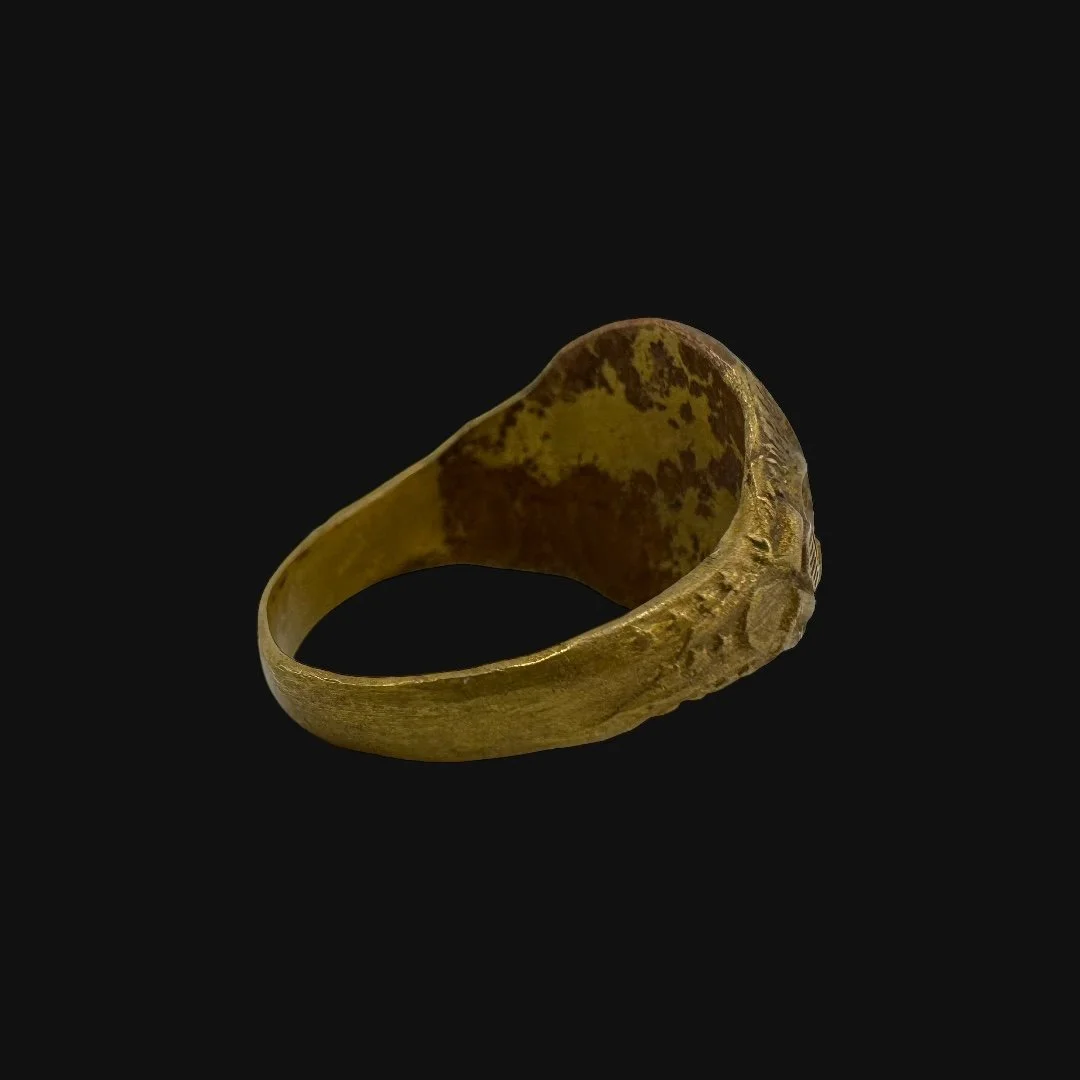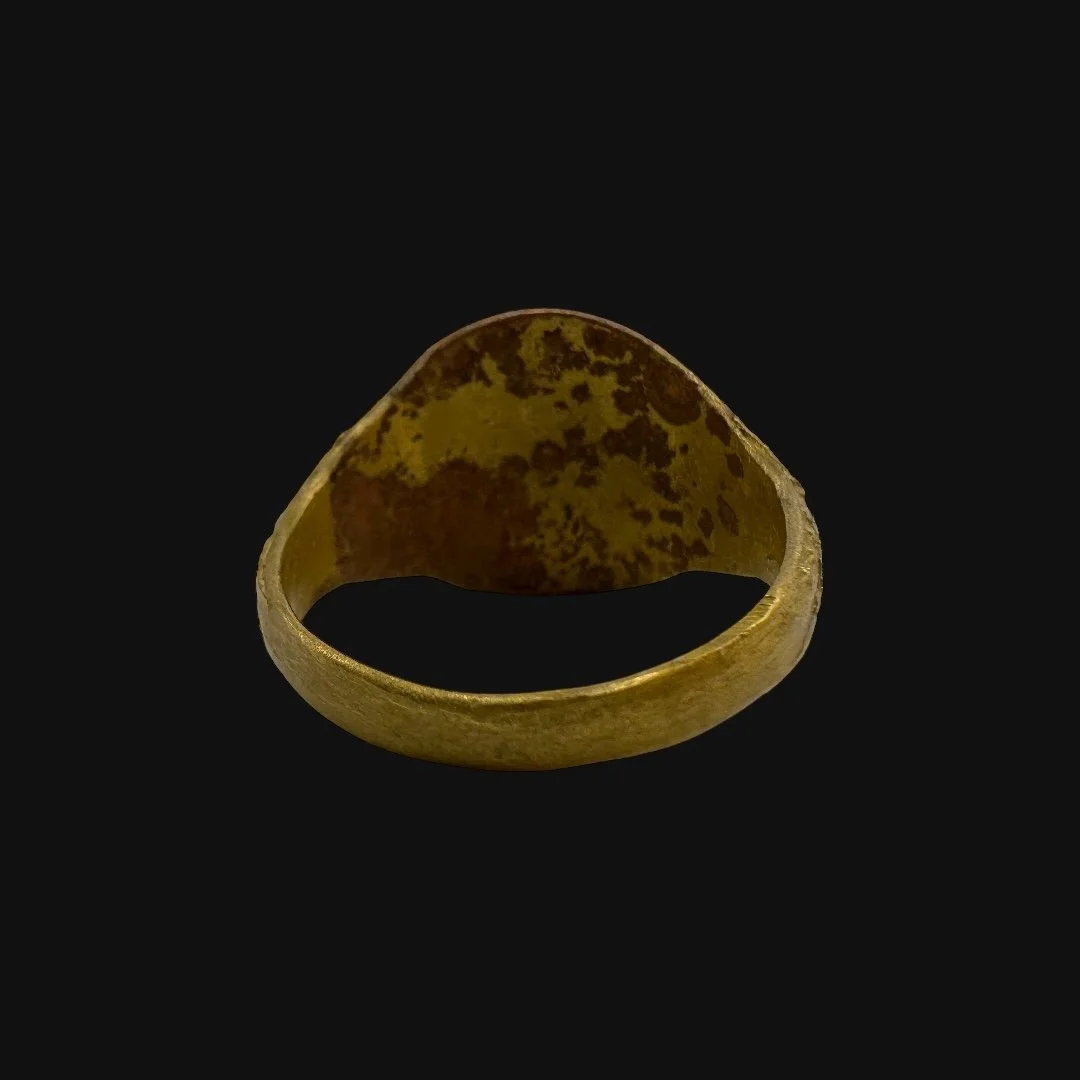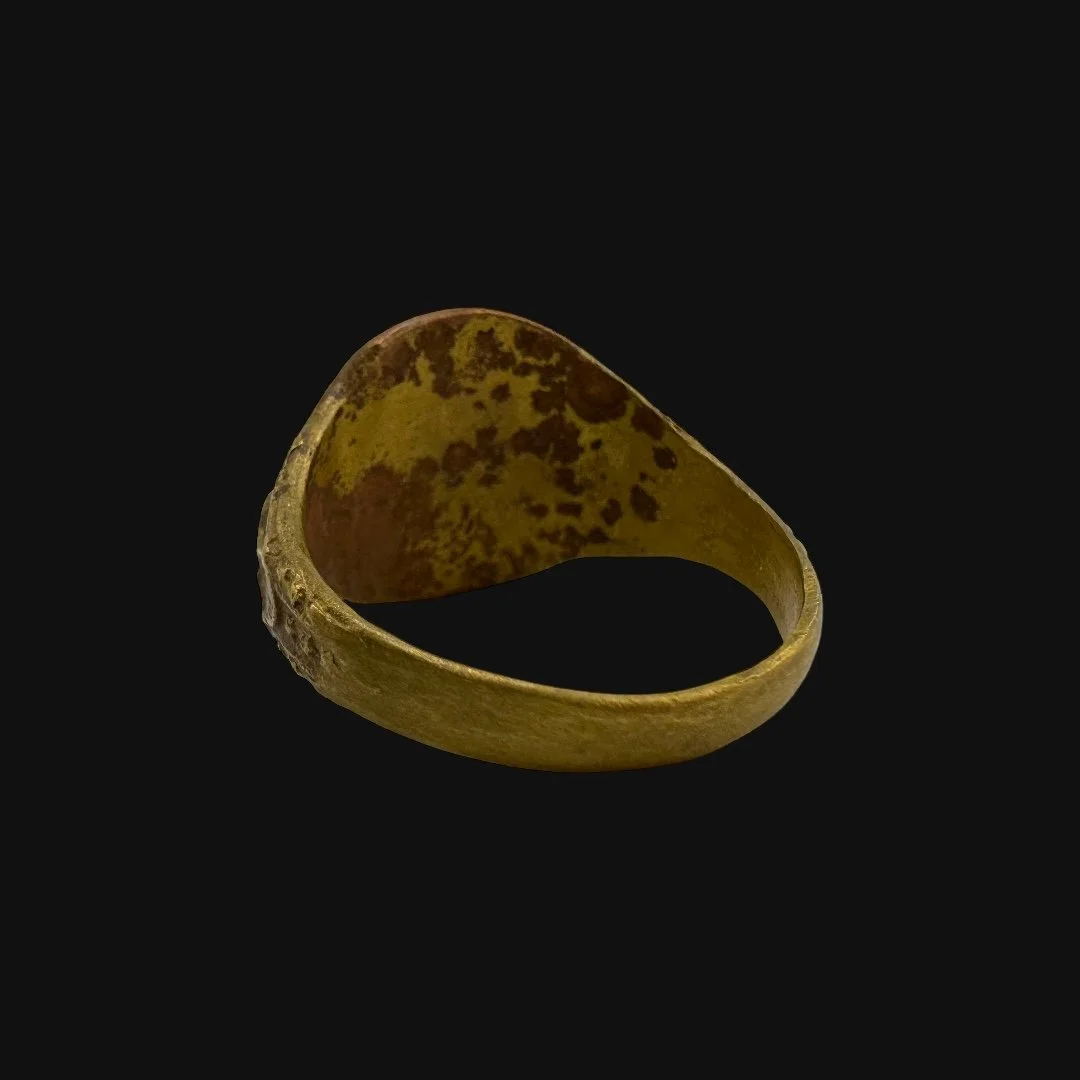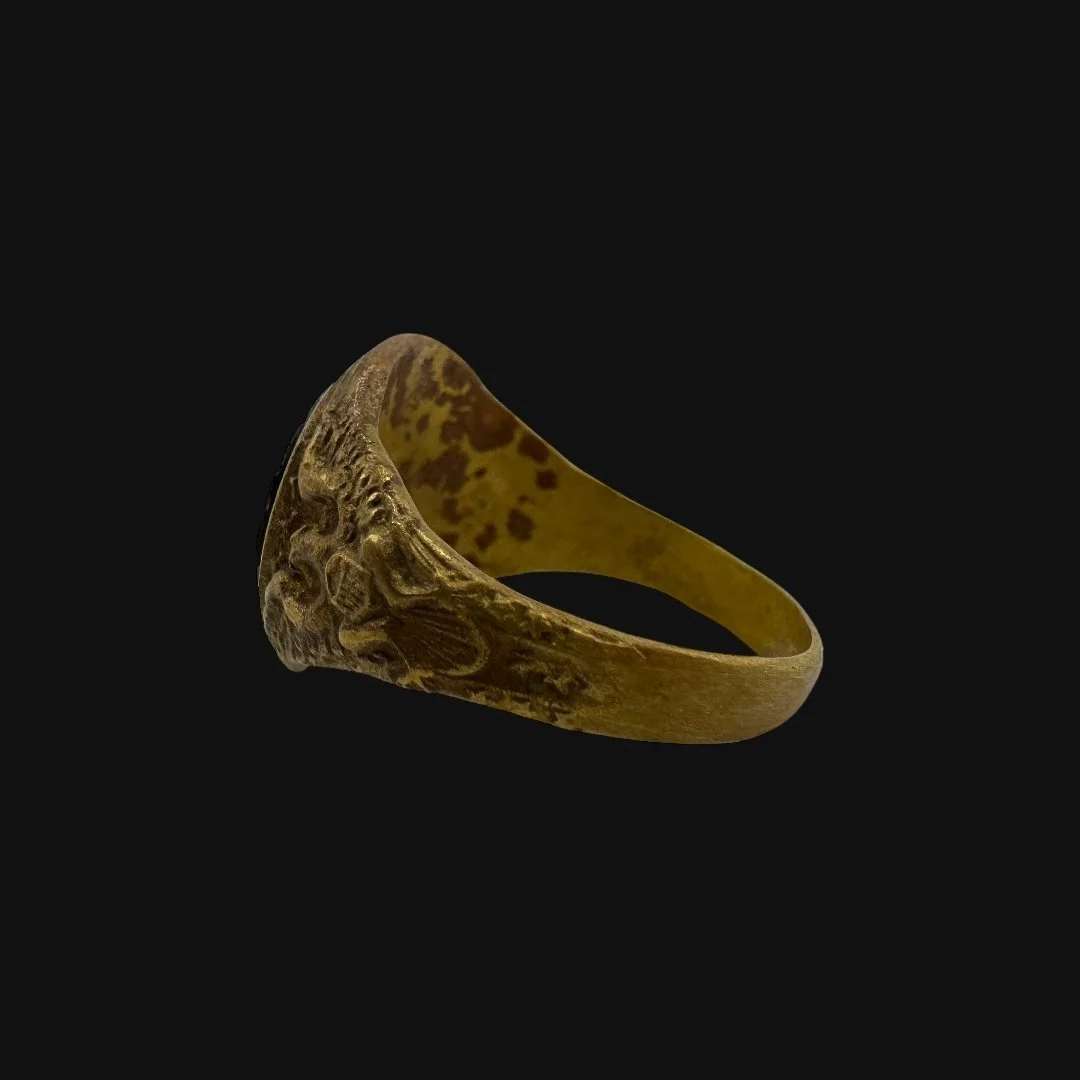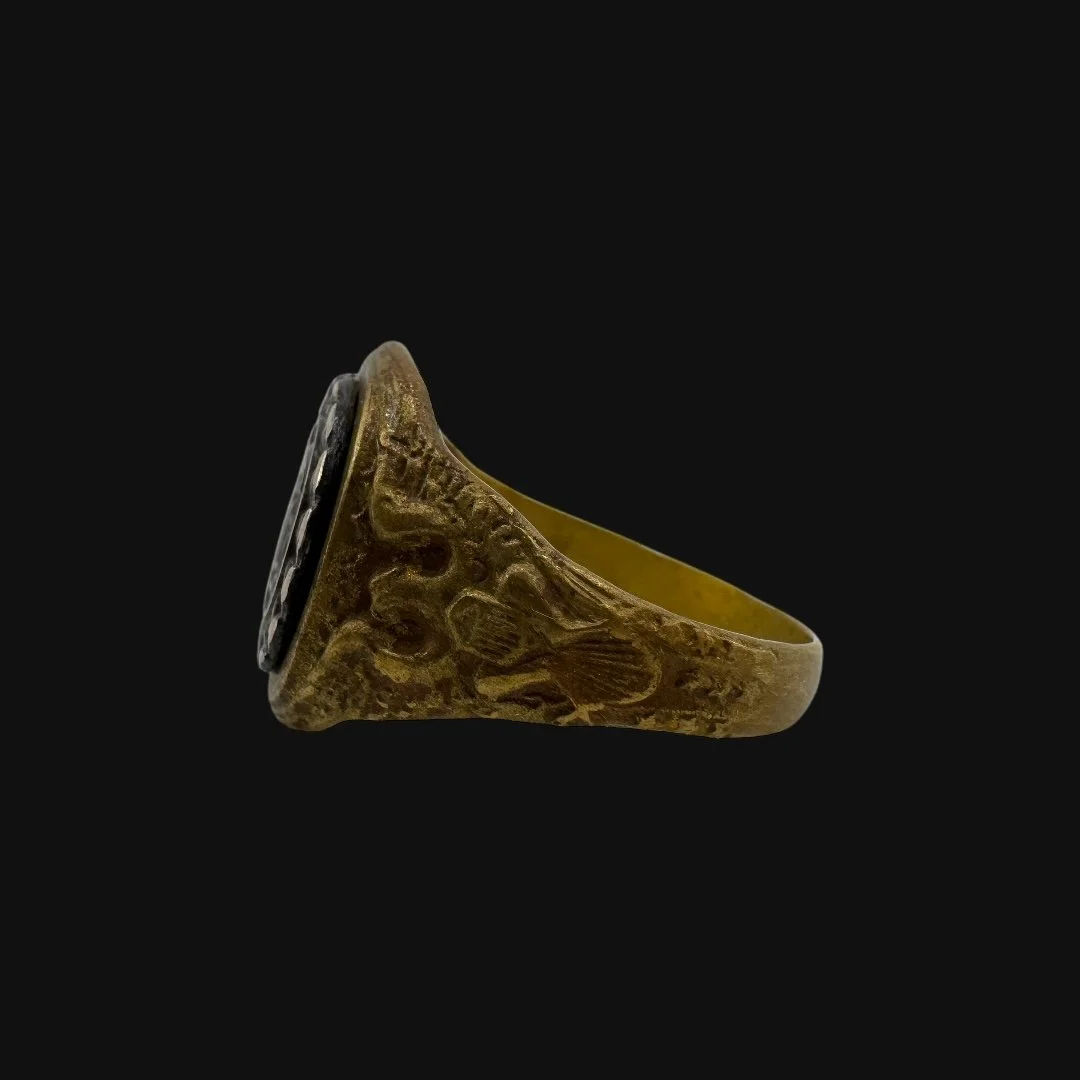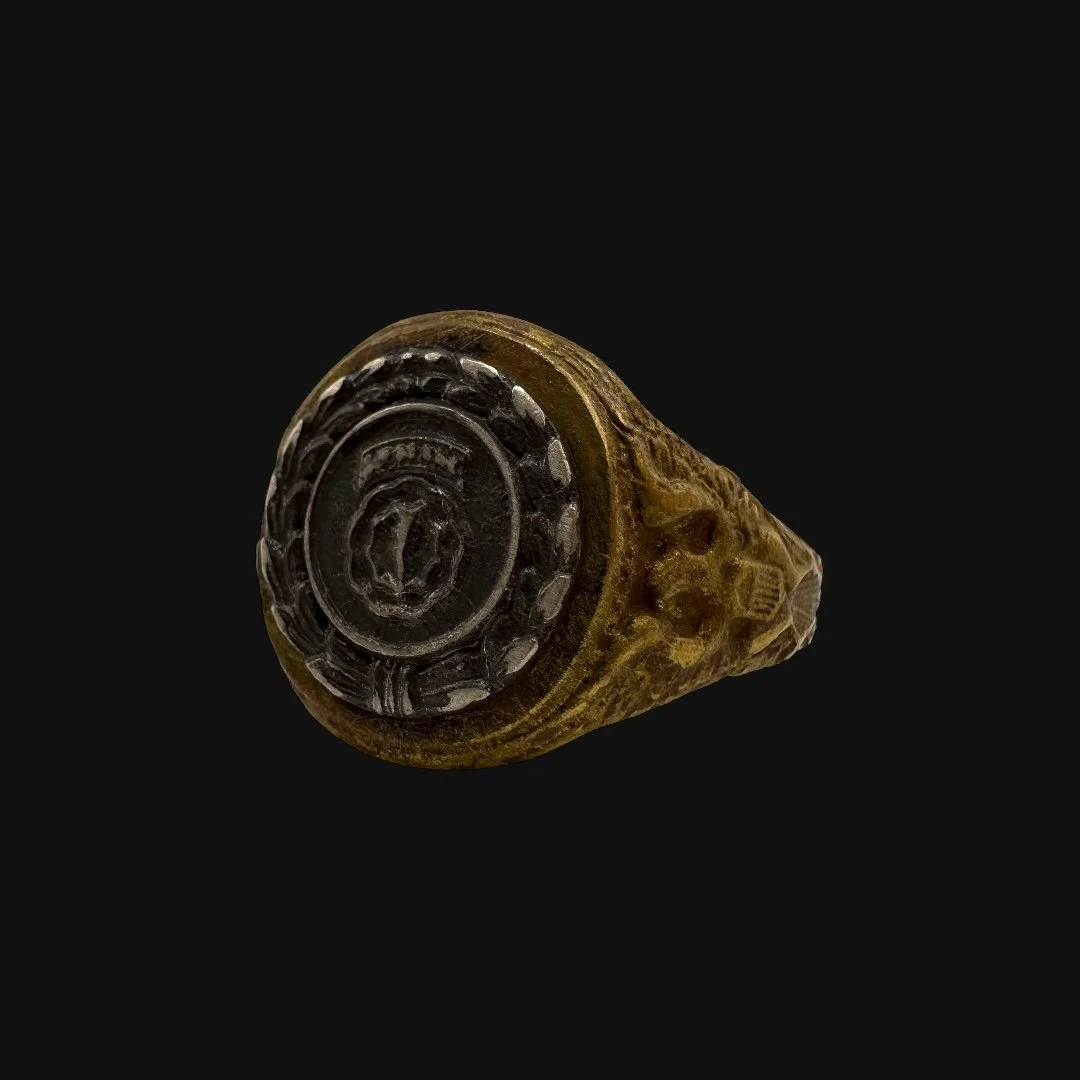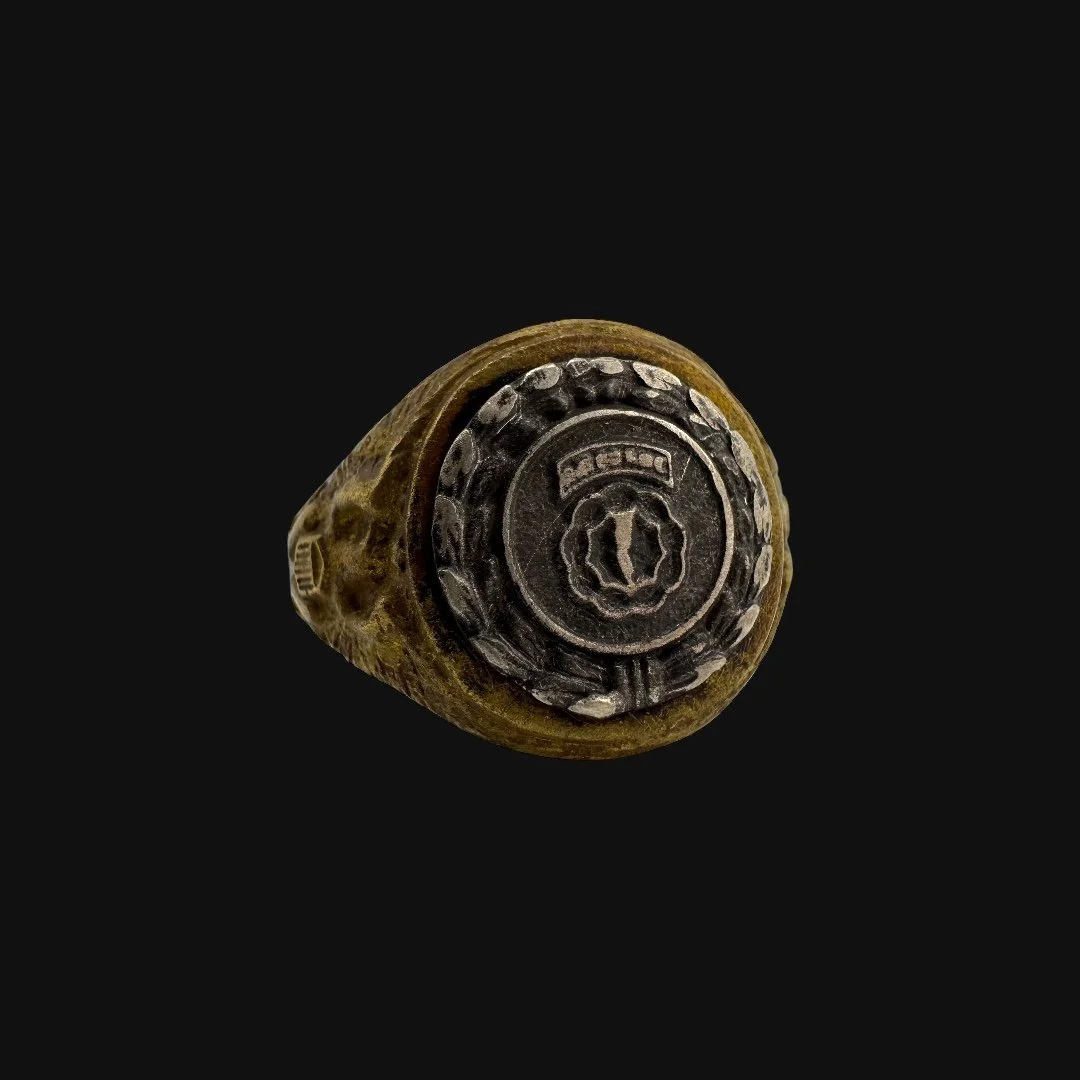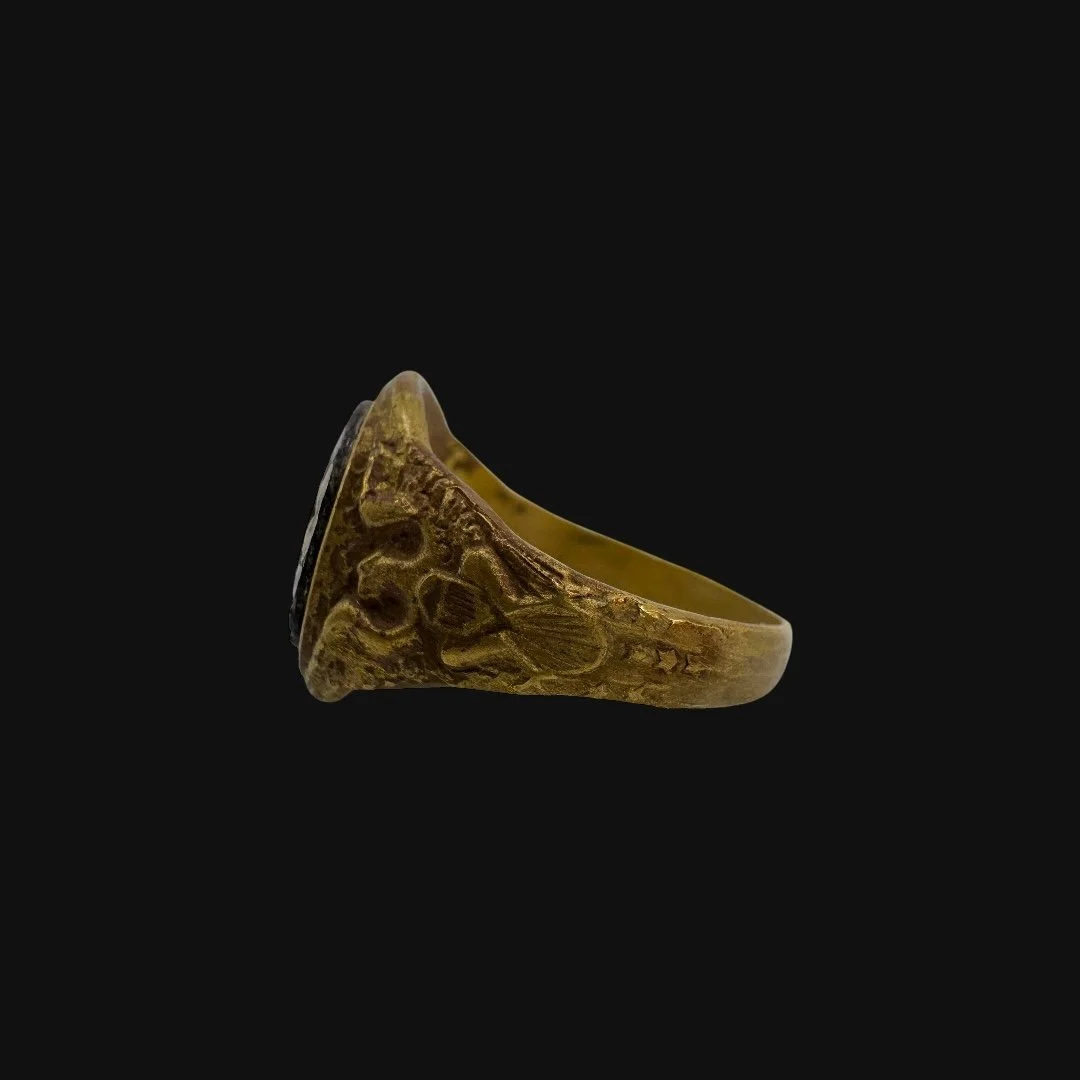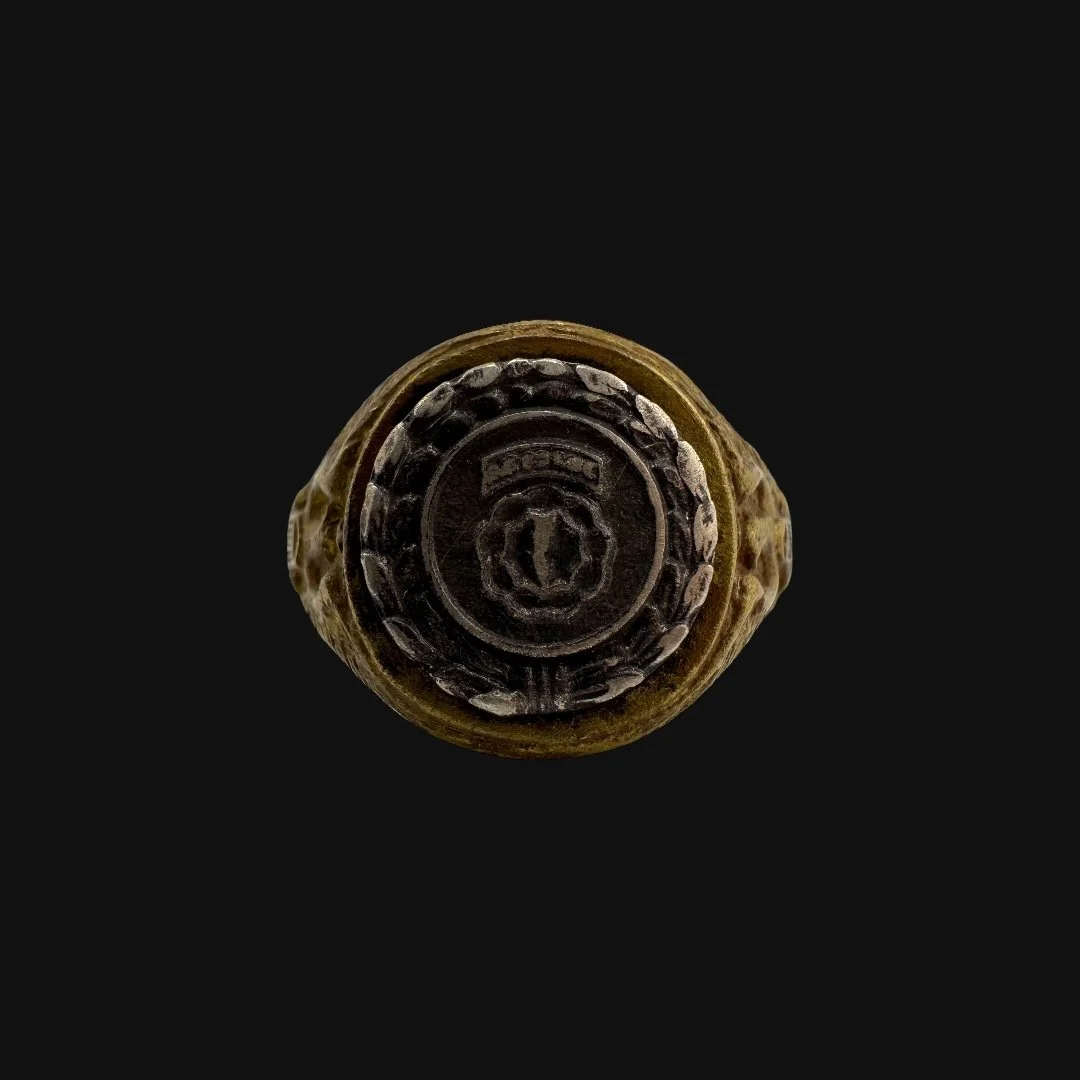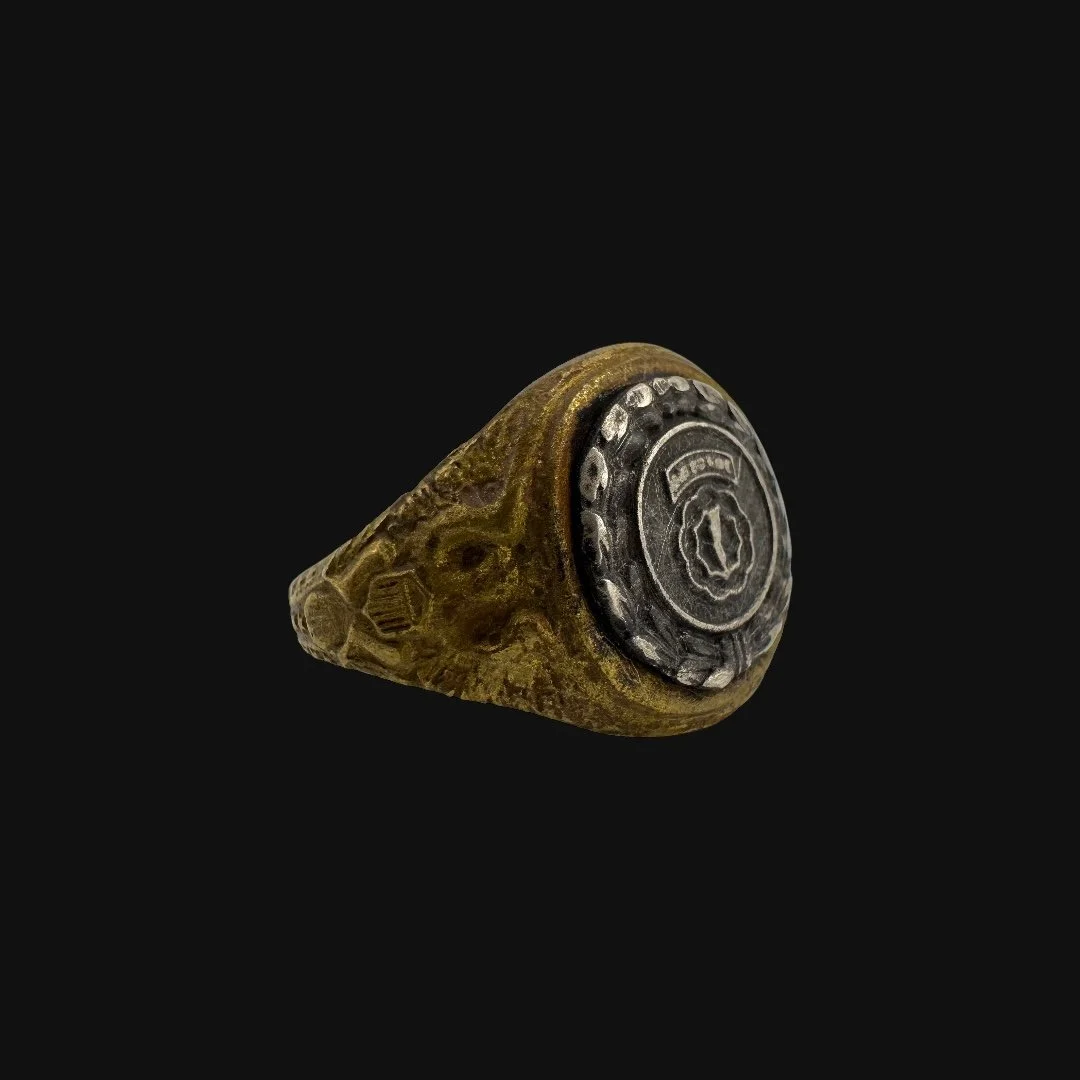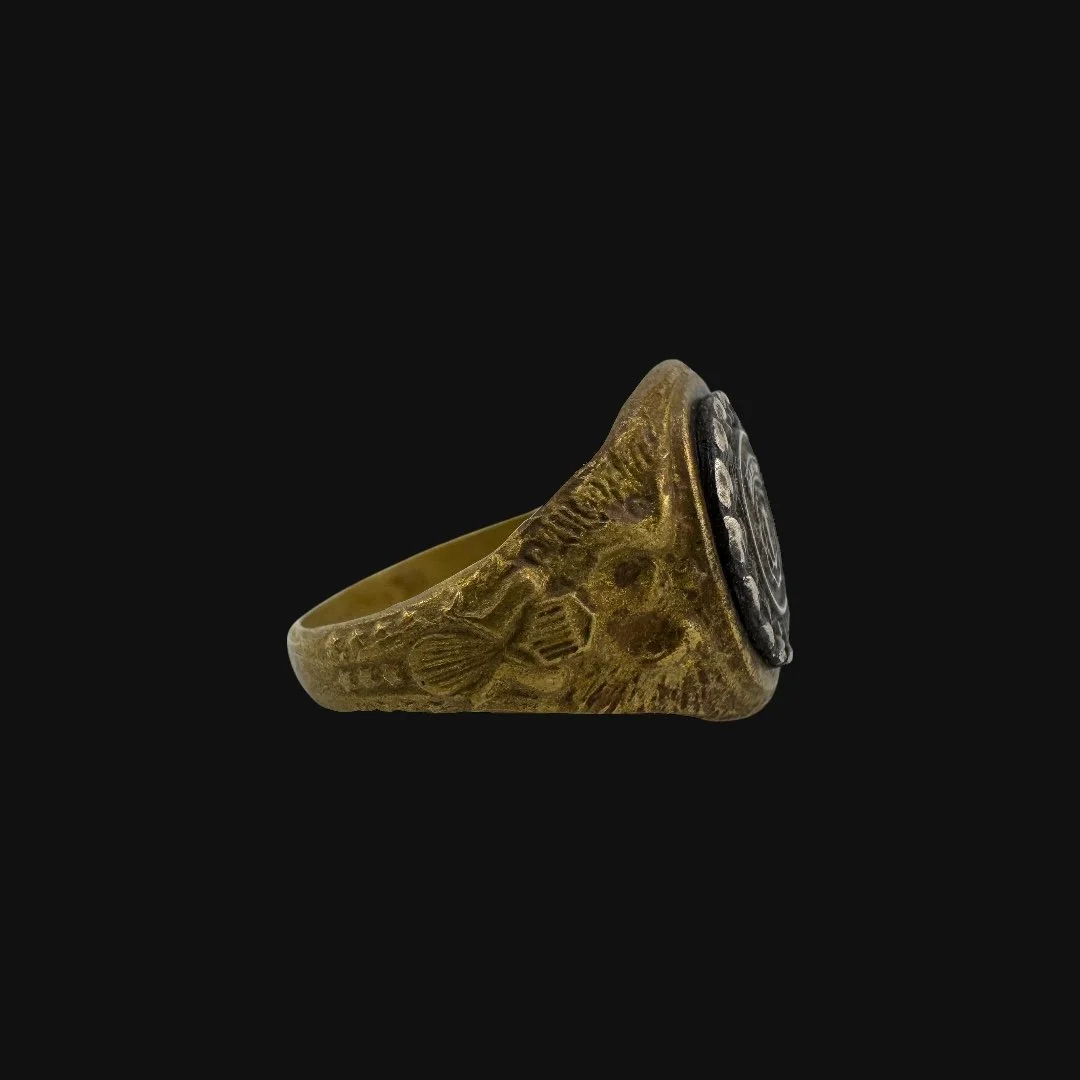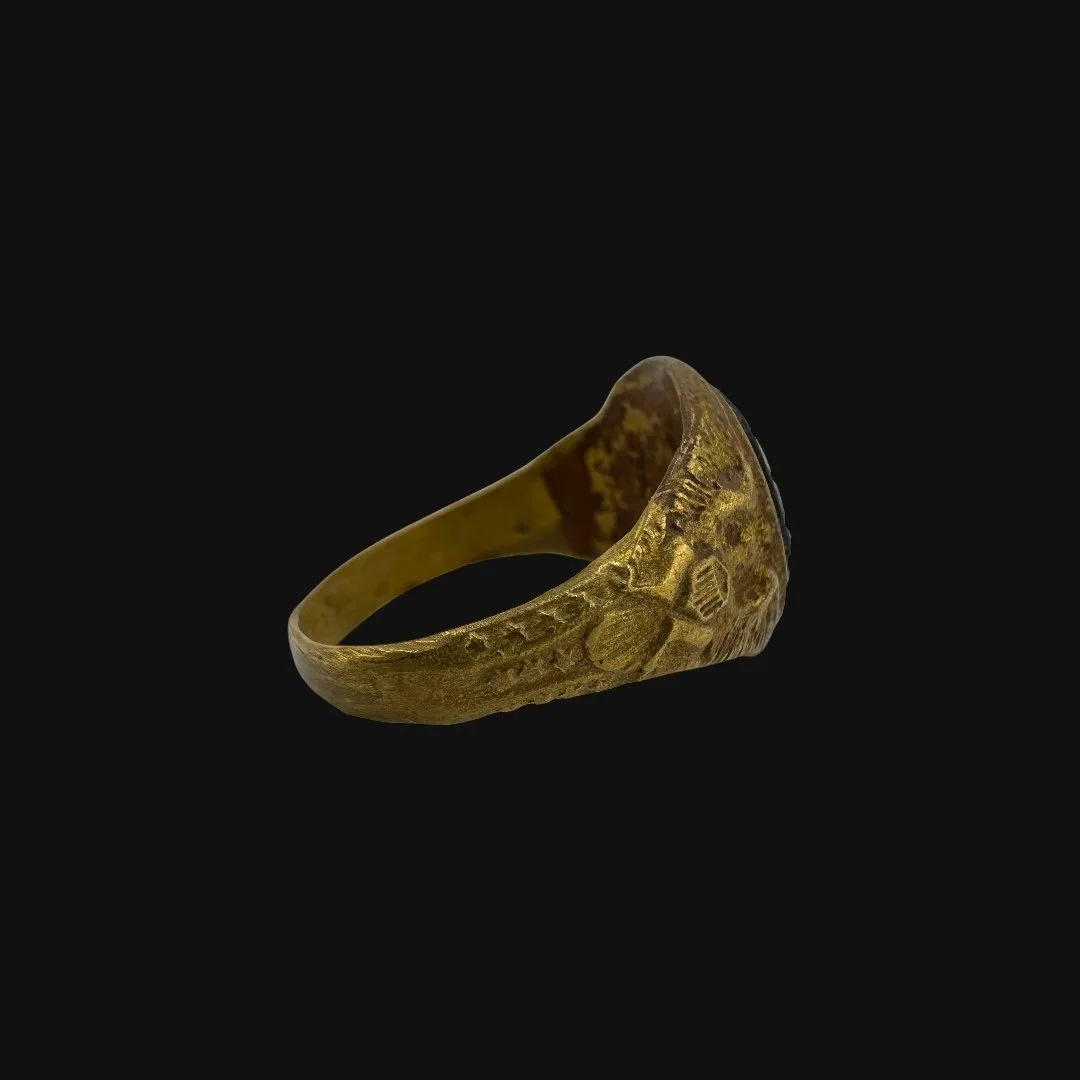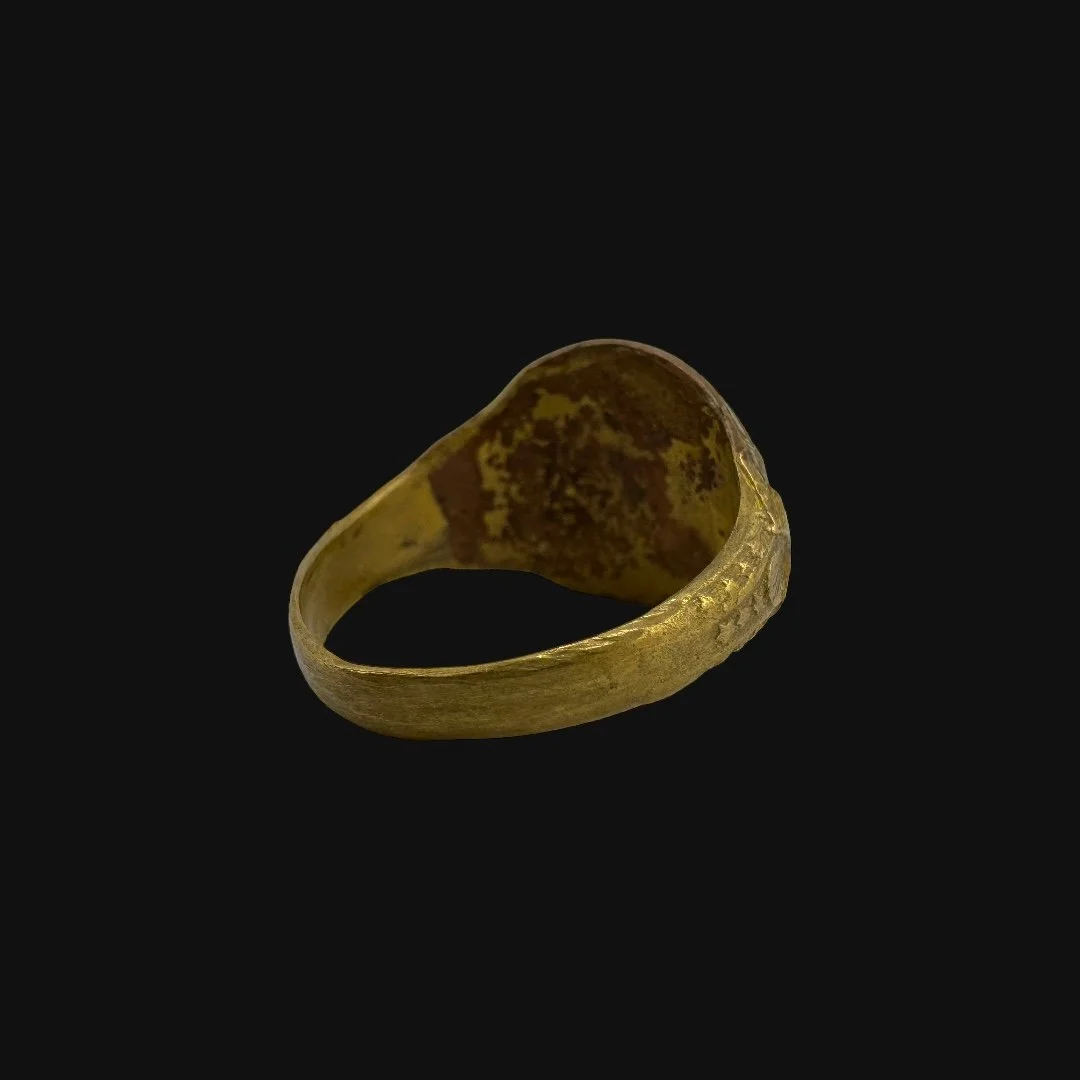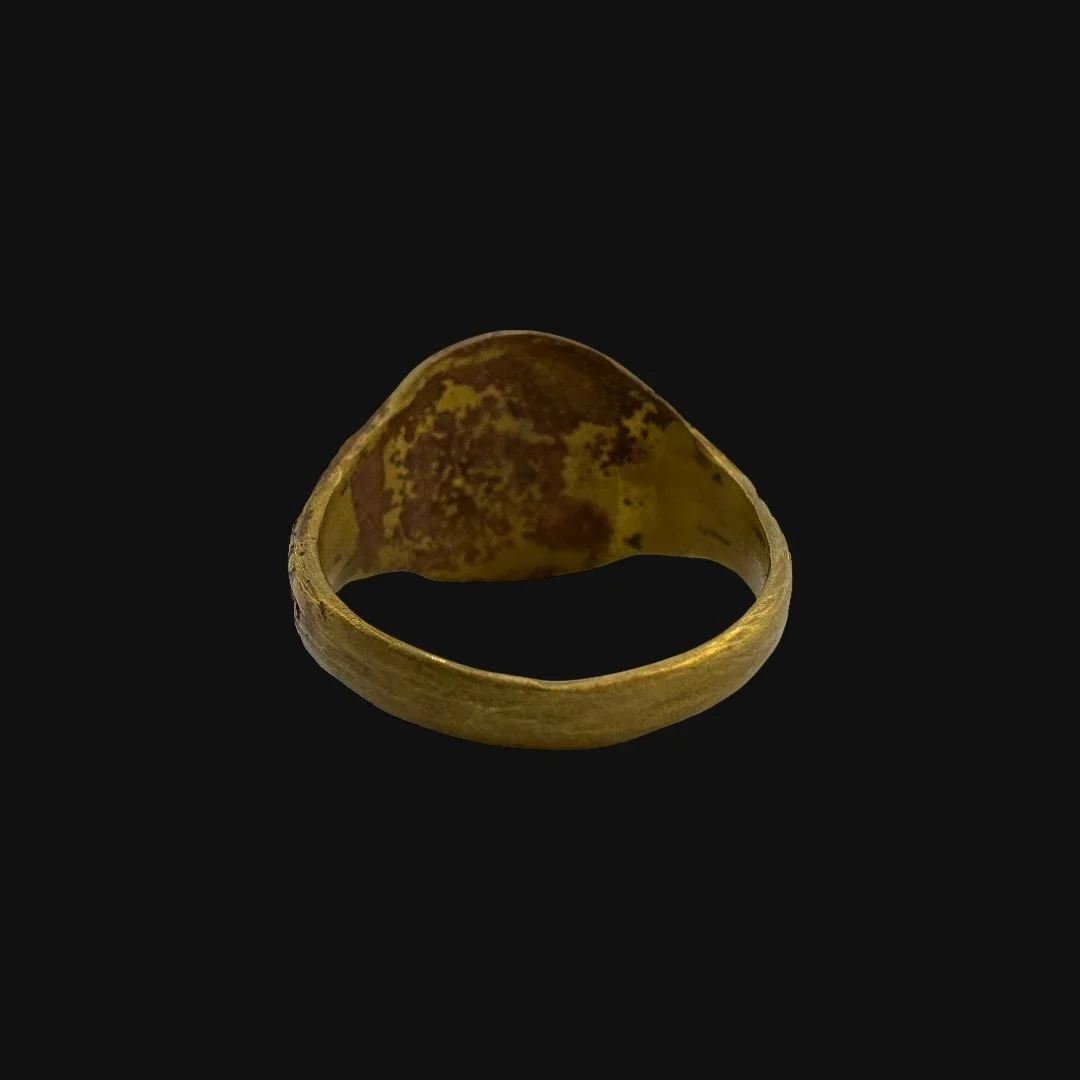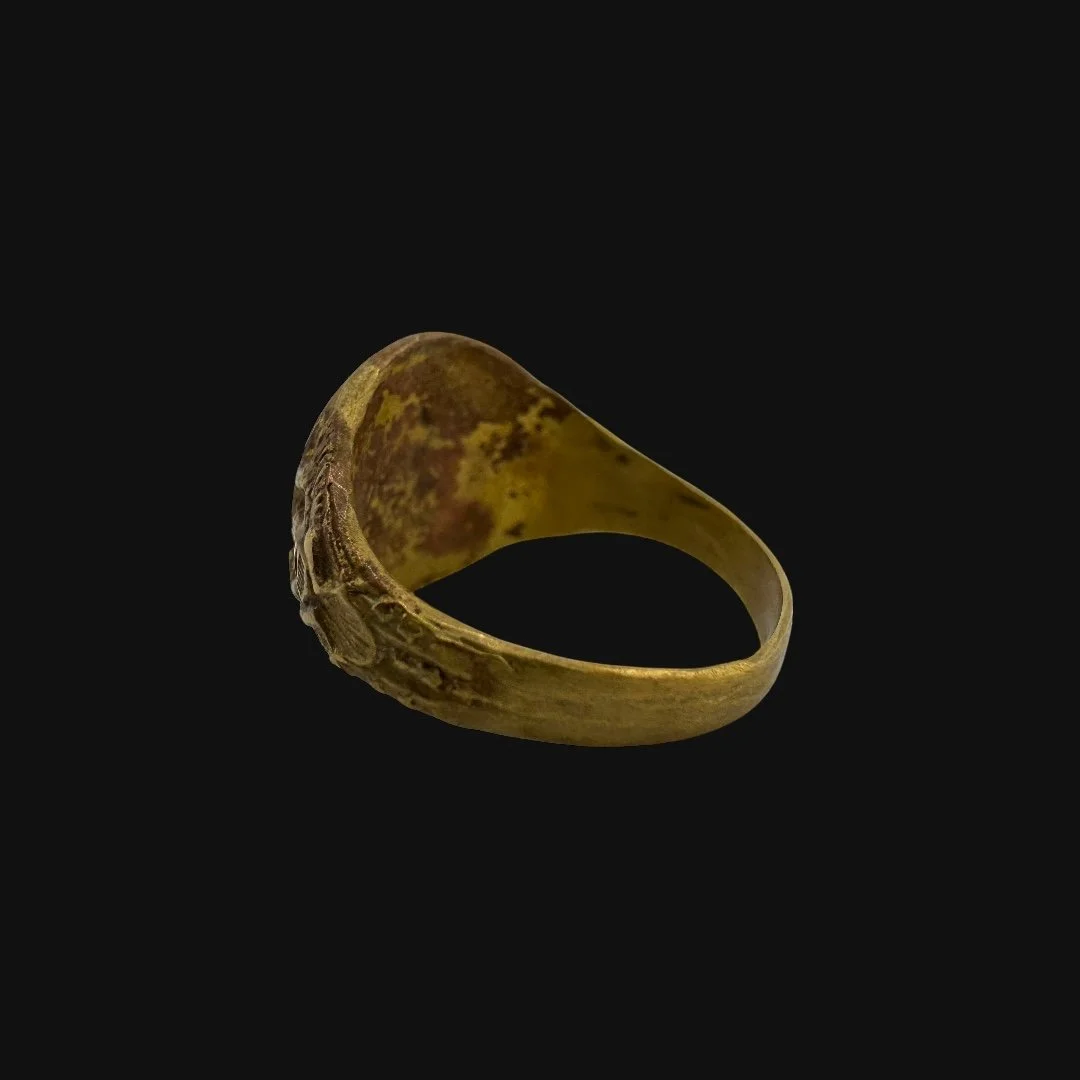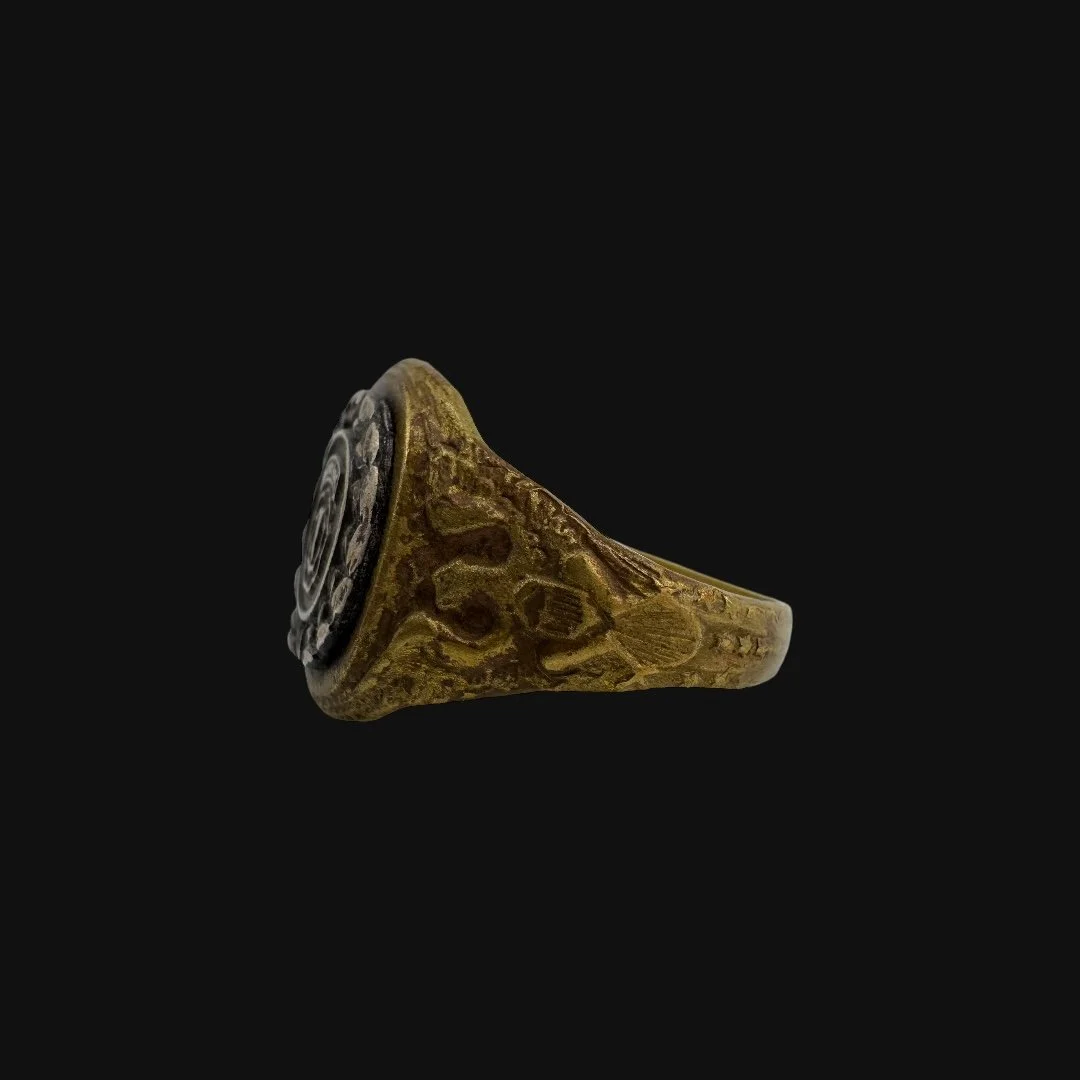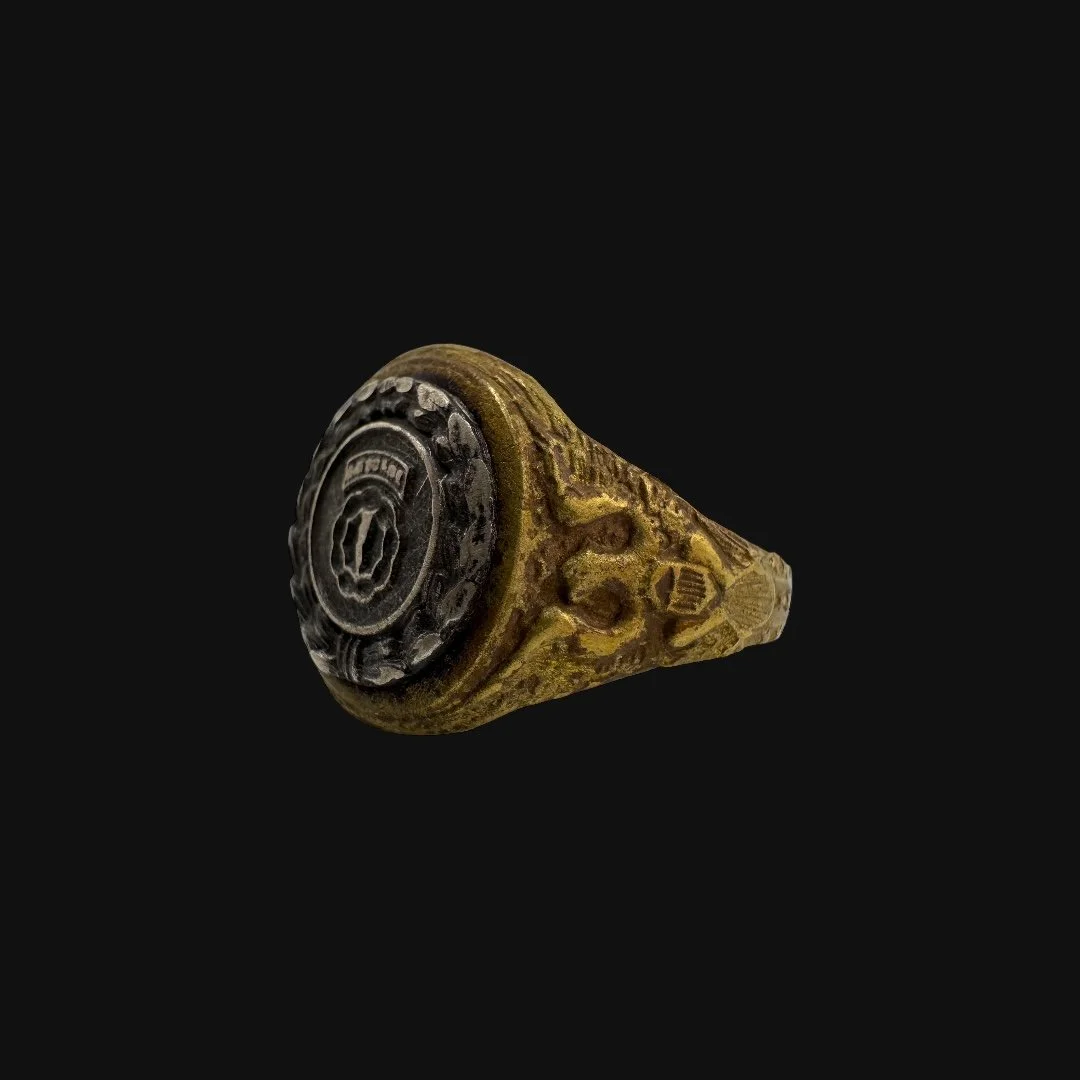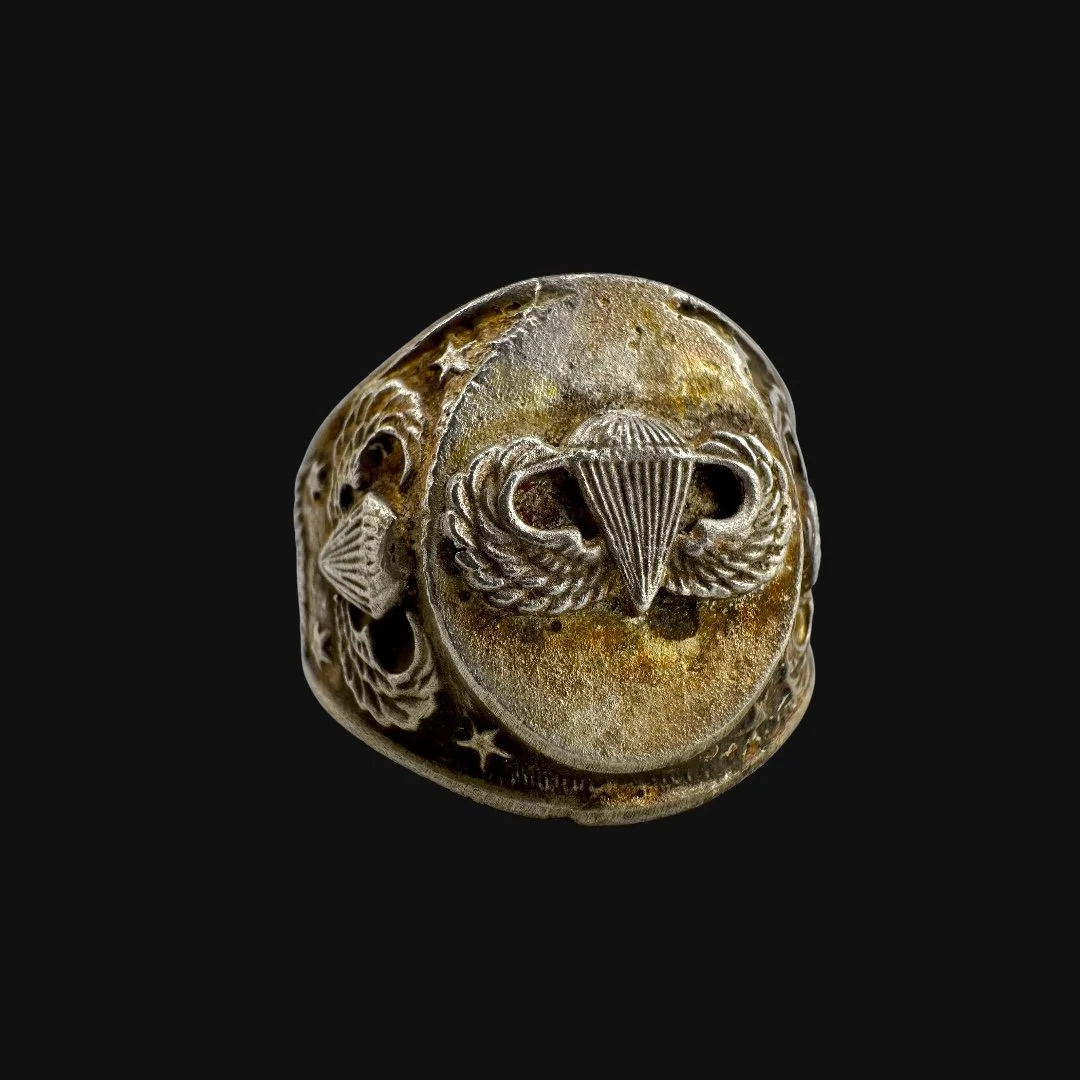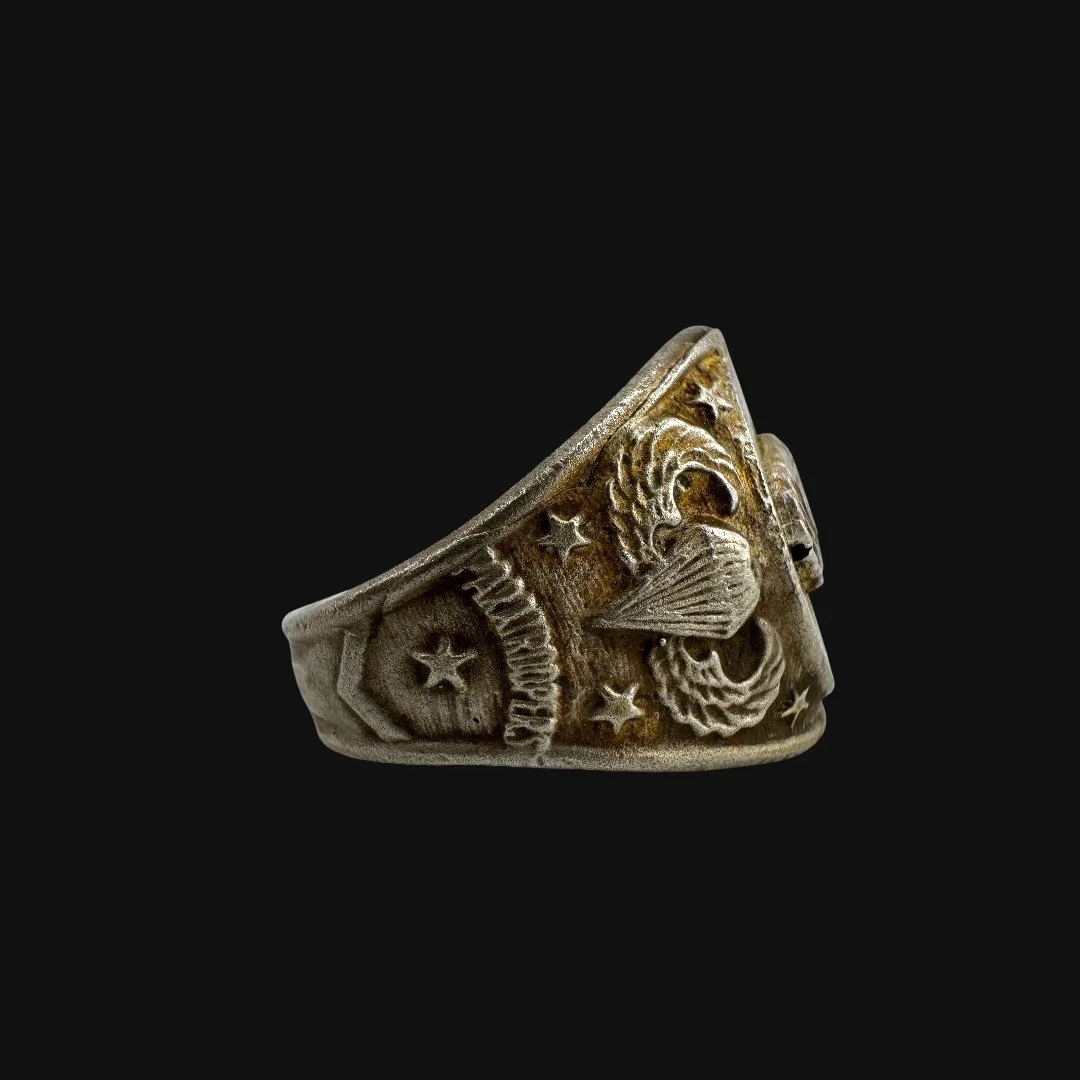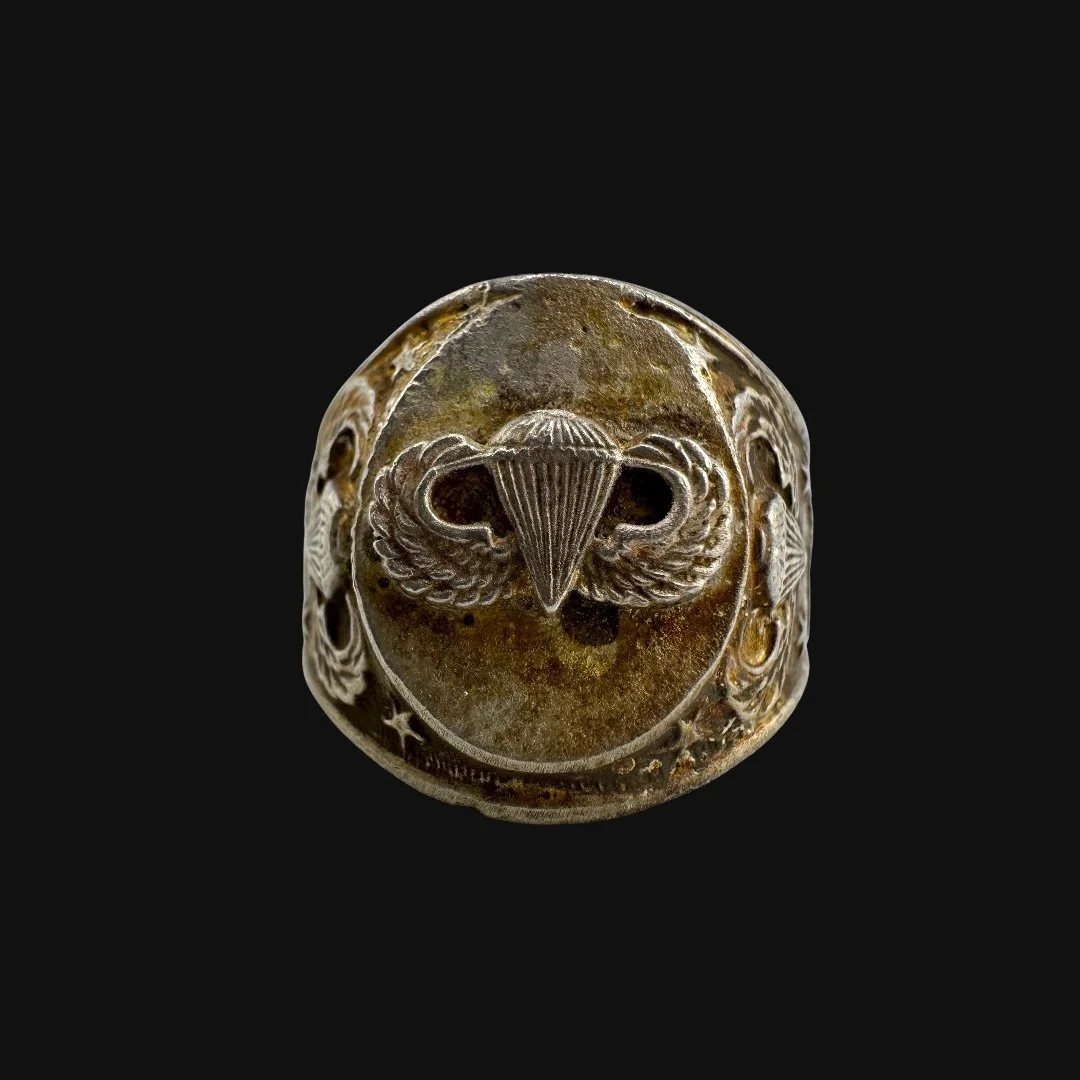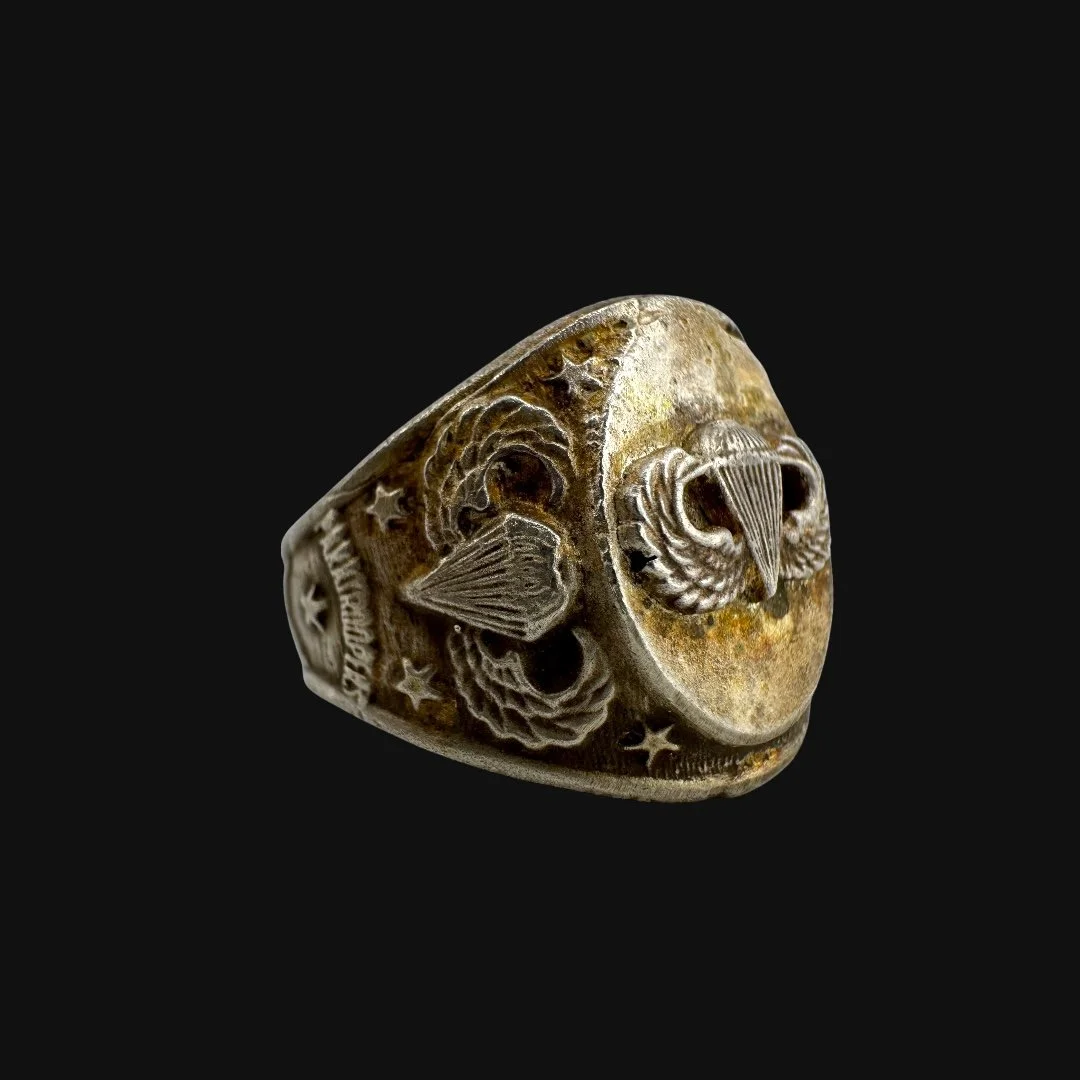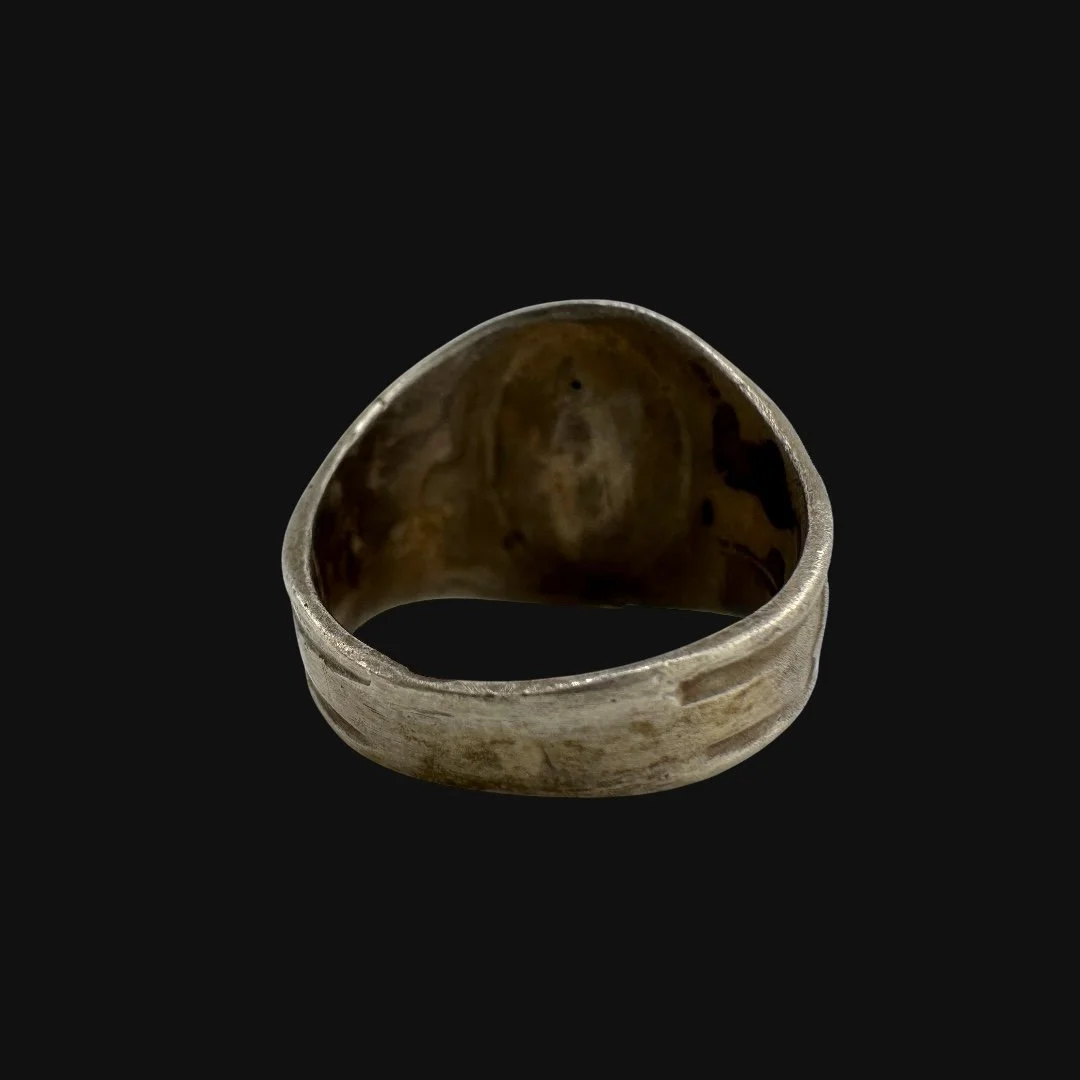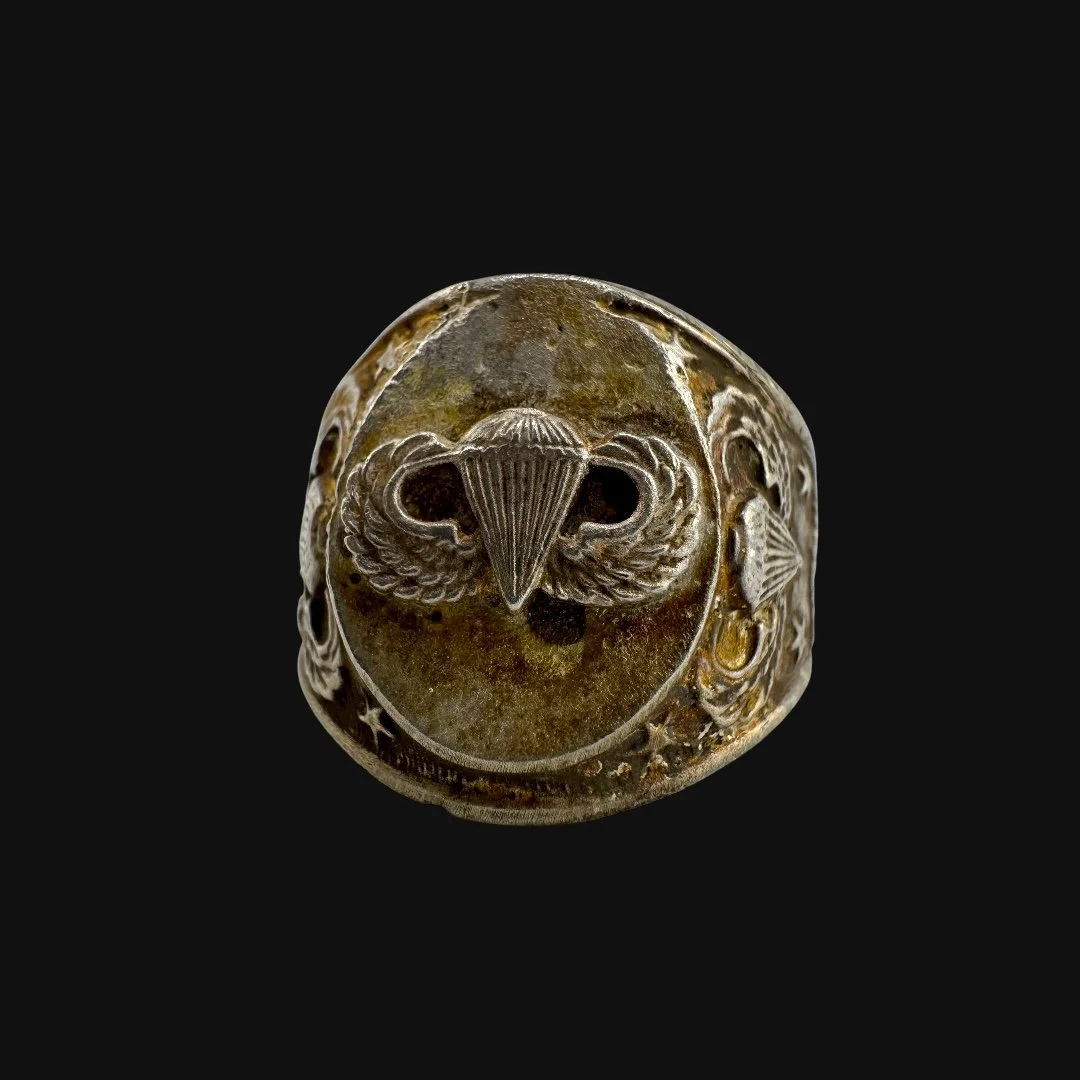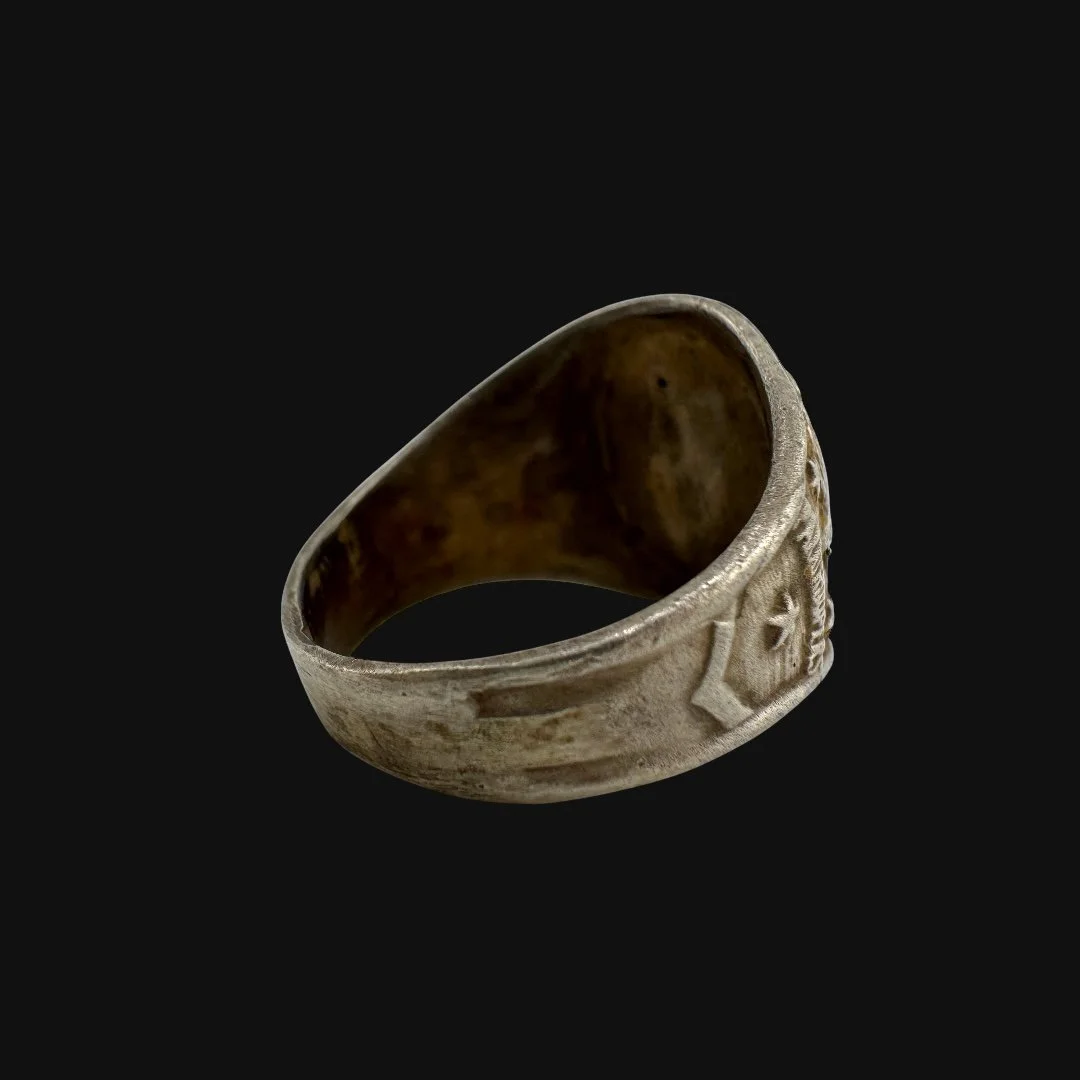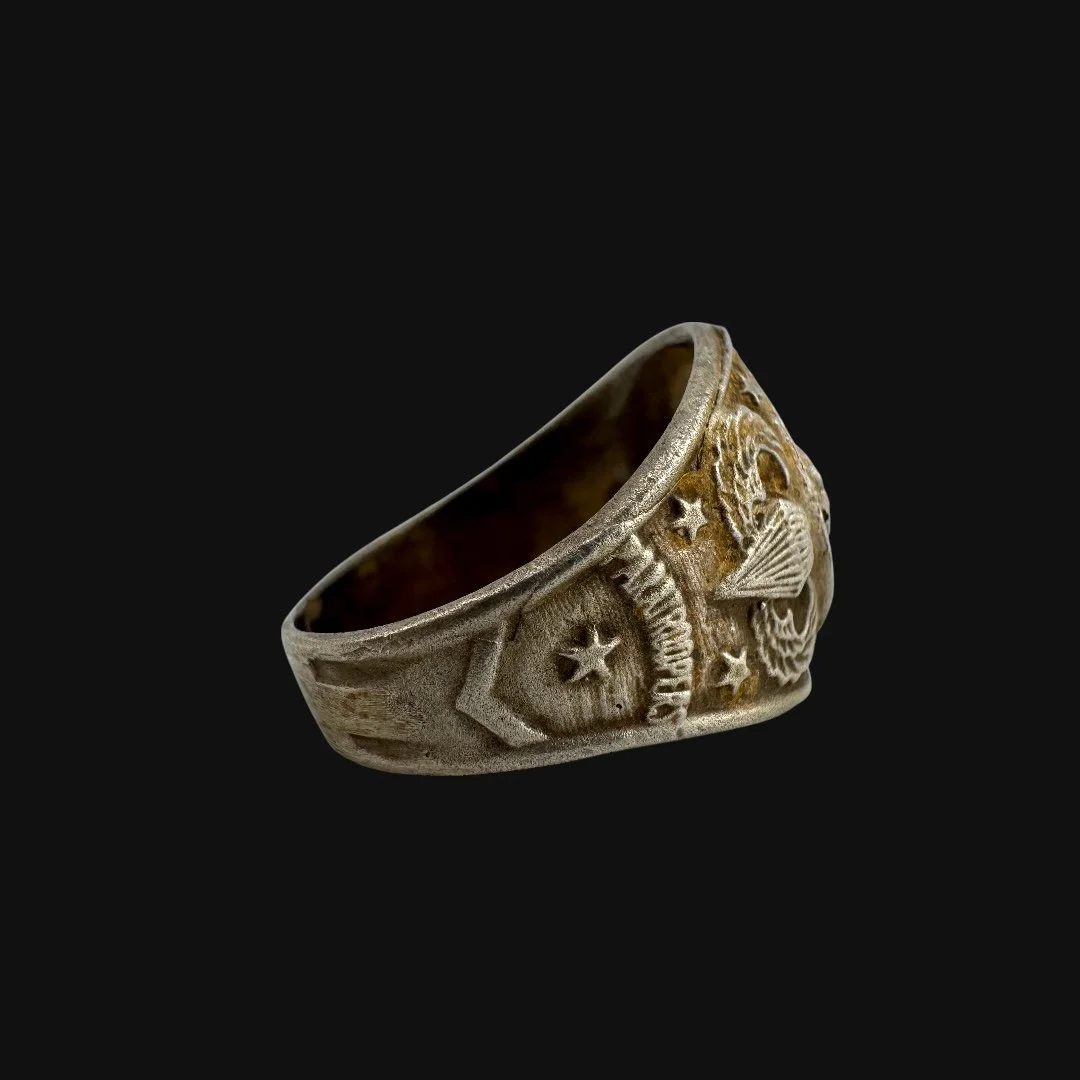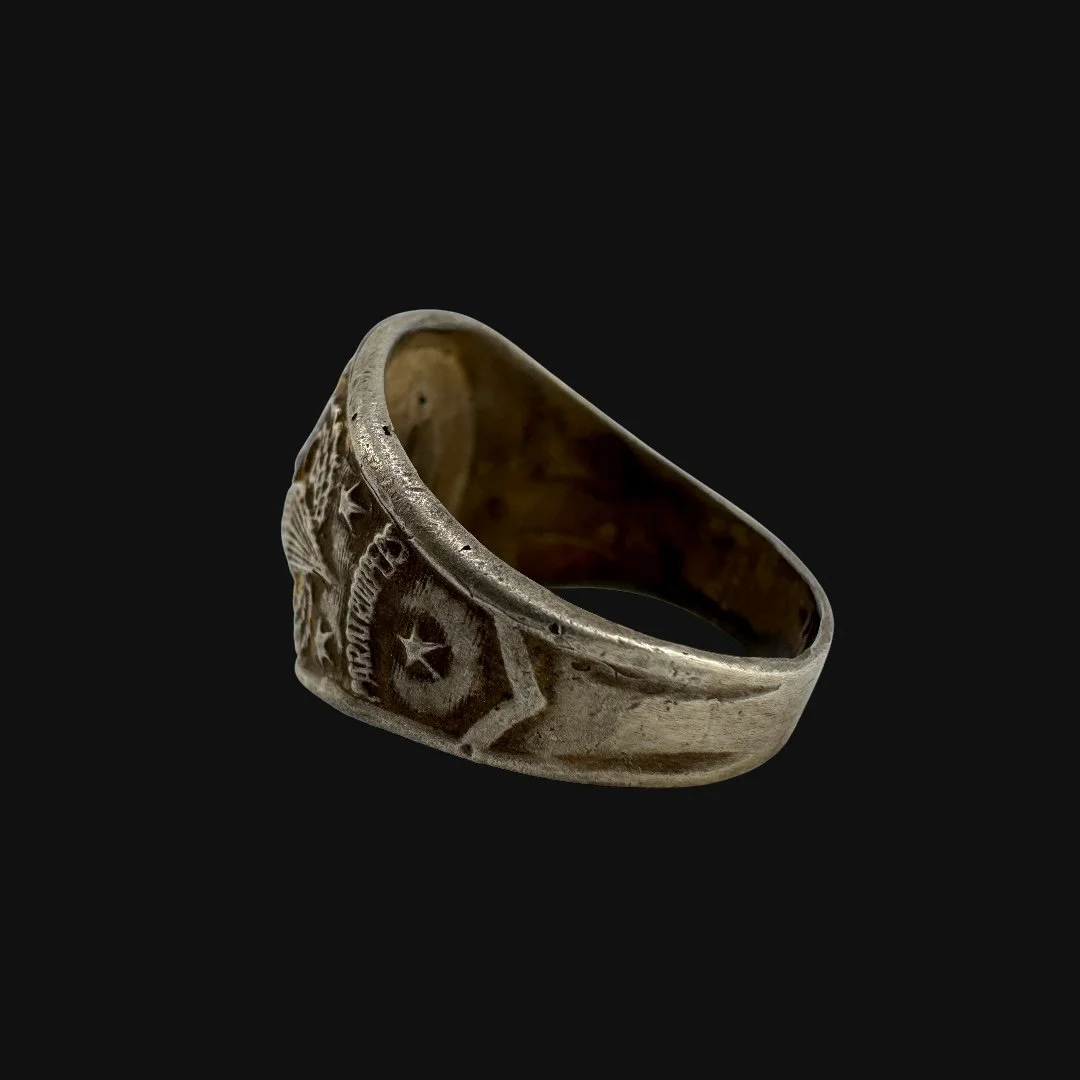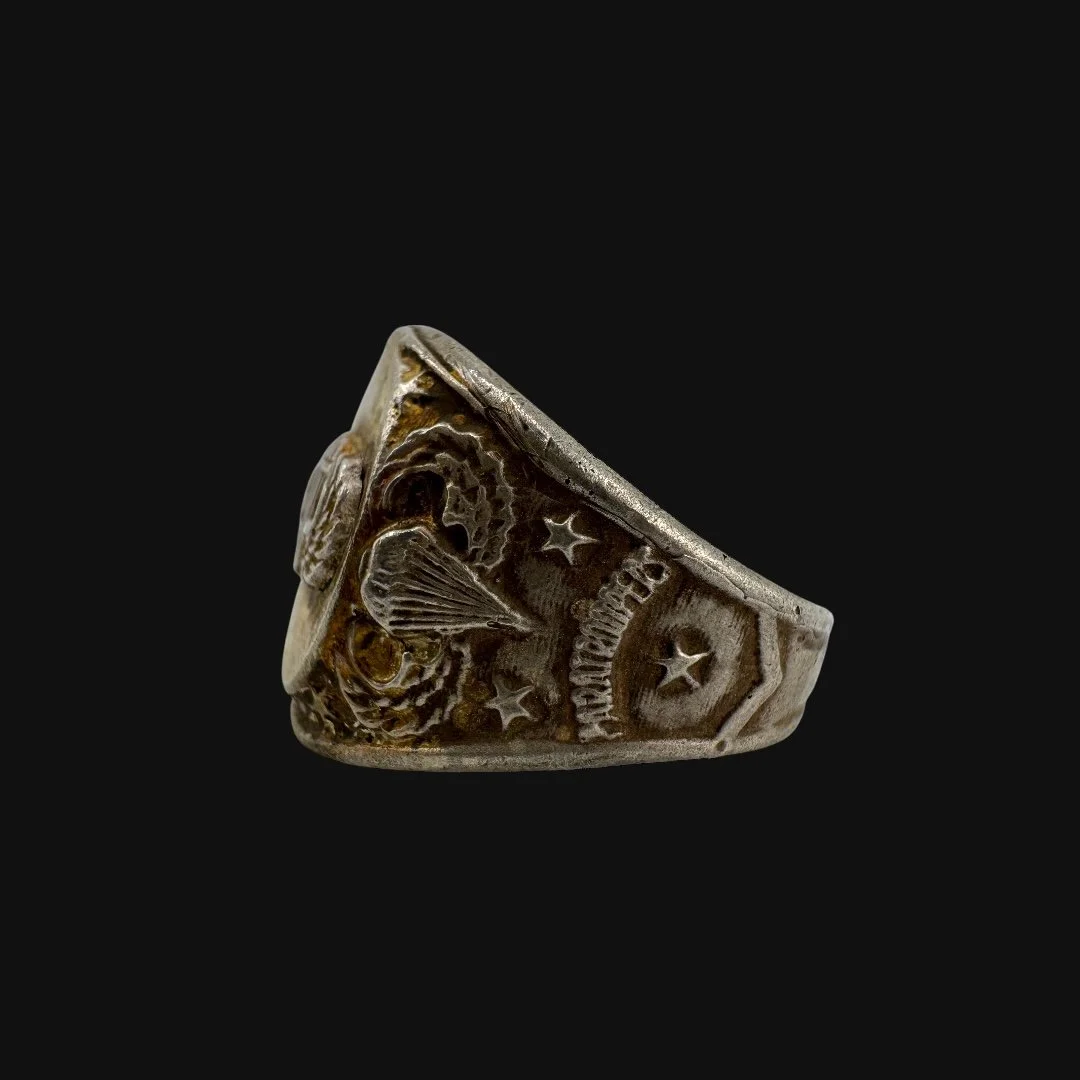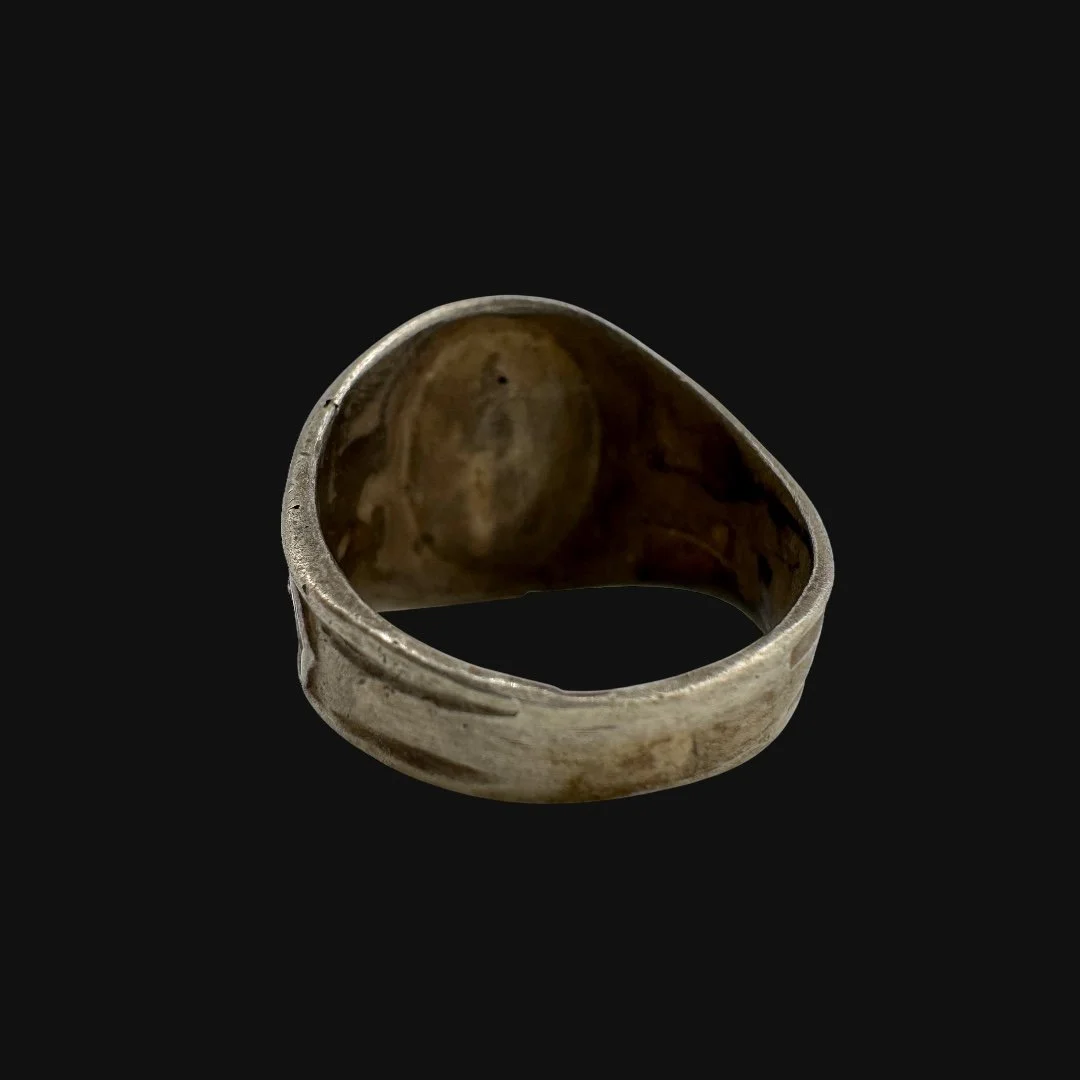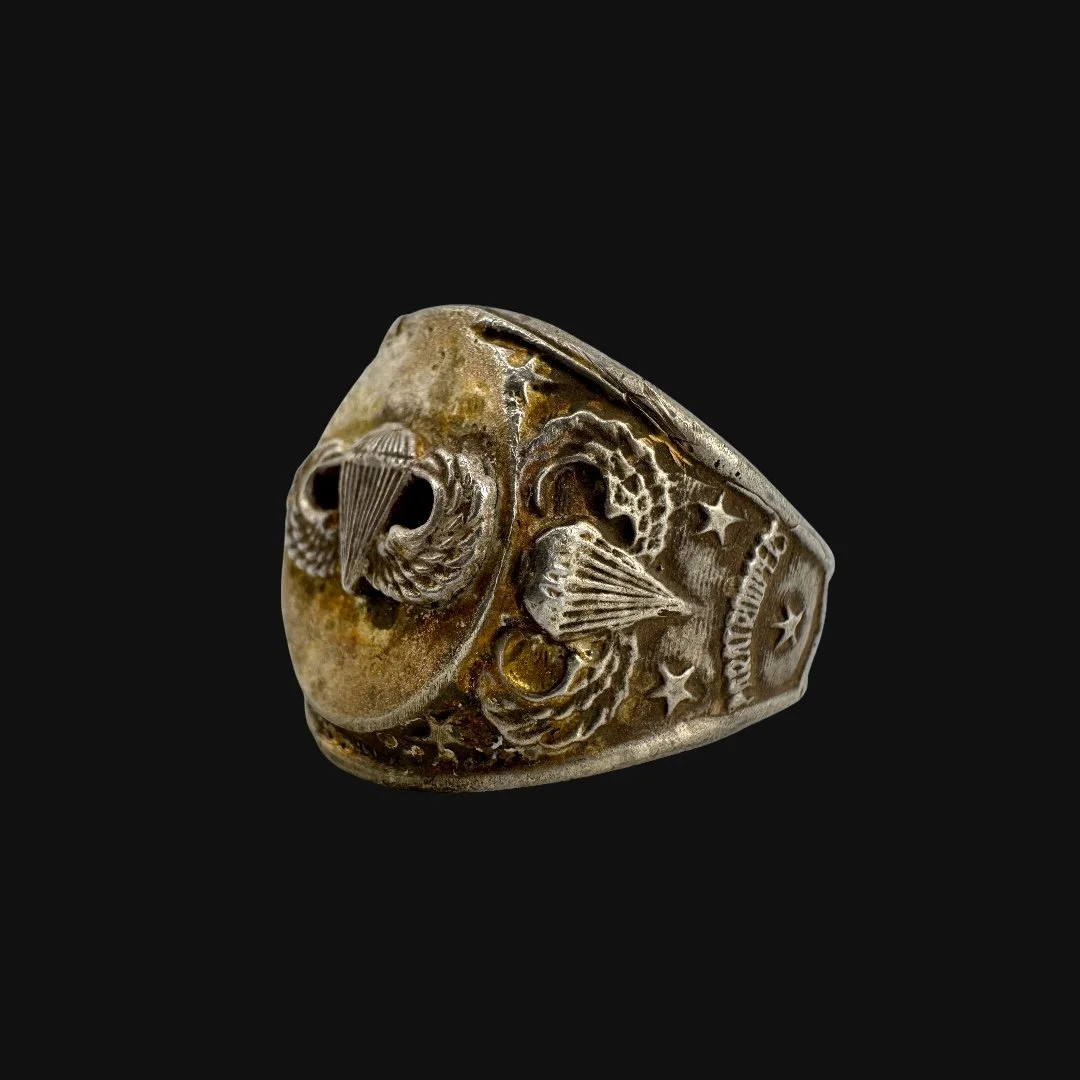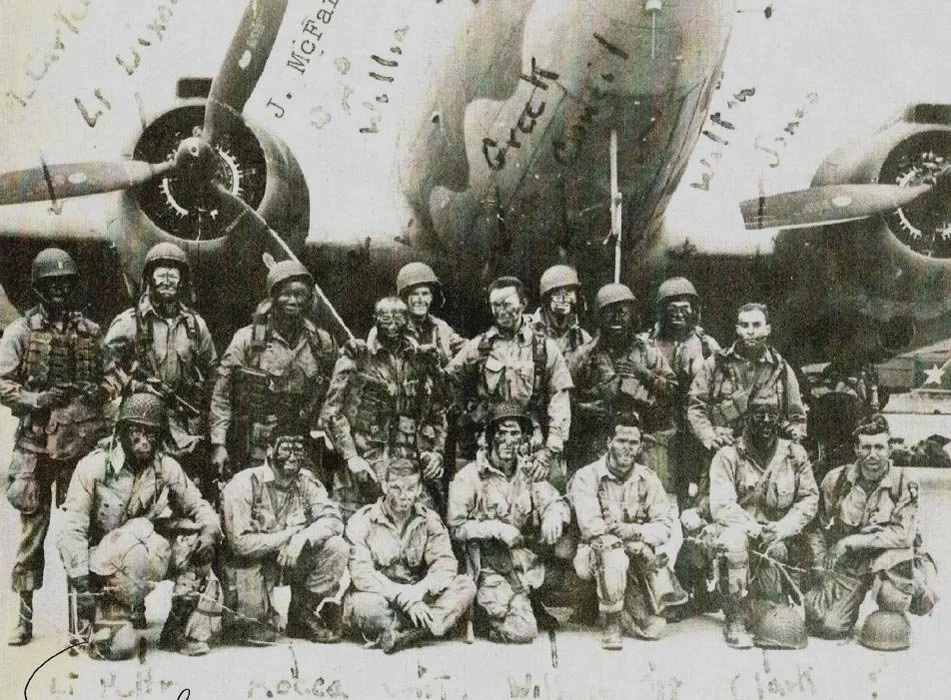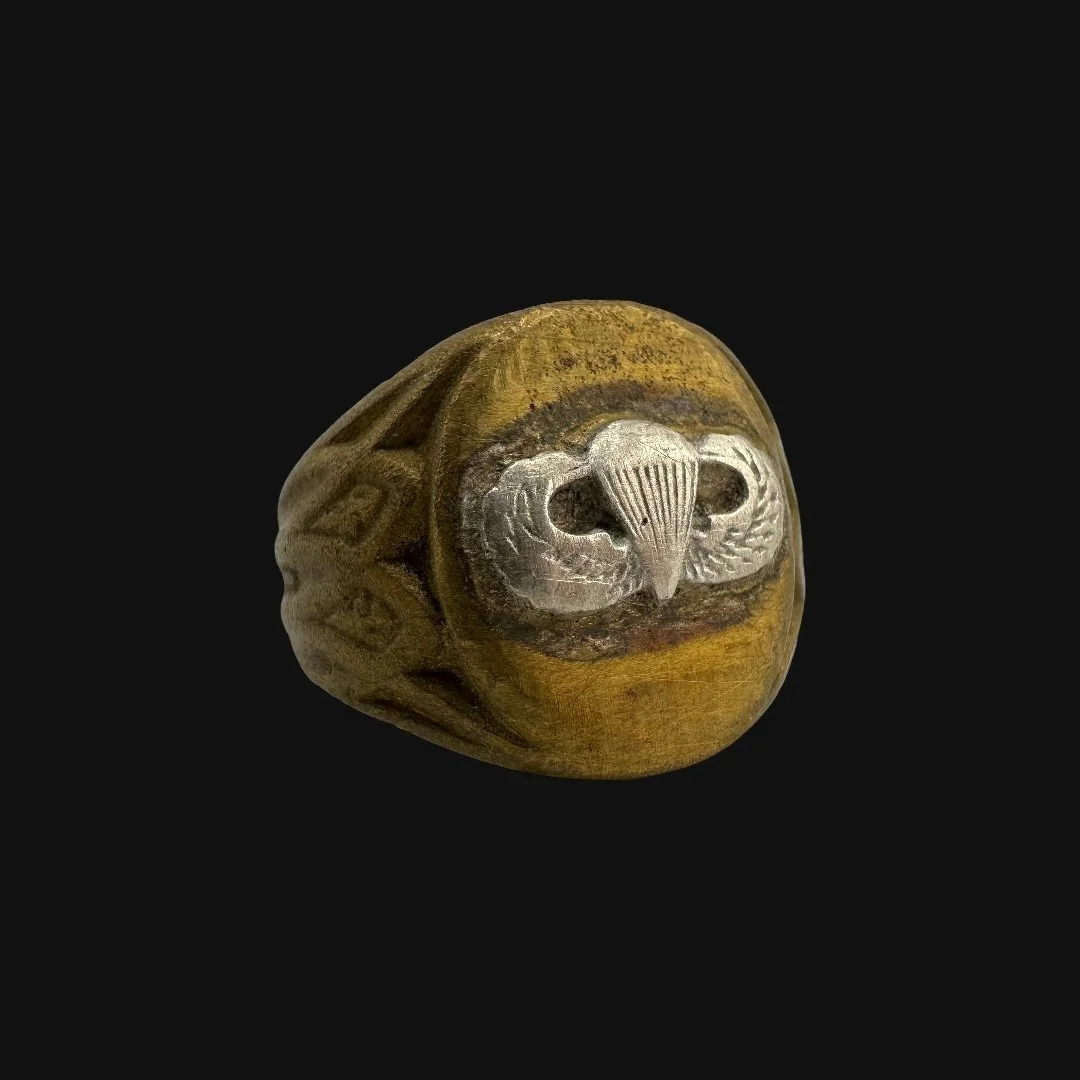 Image 1 of 14
Image 1 of 14

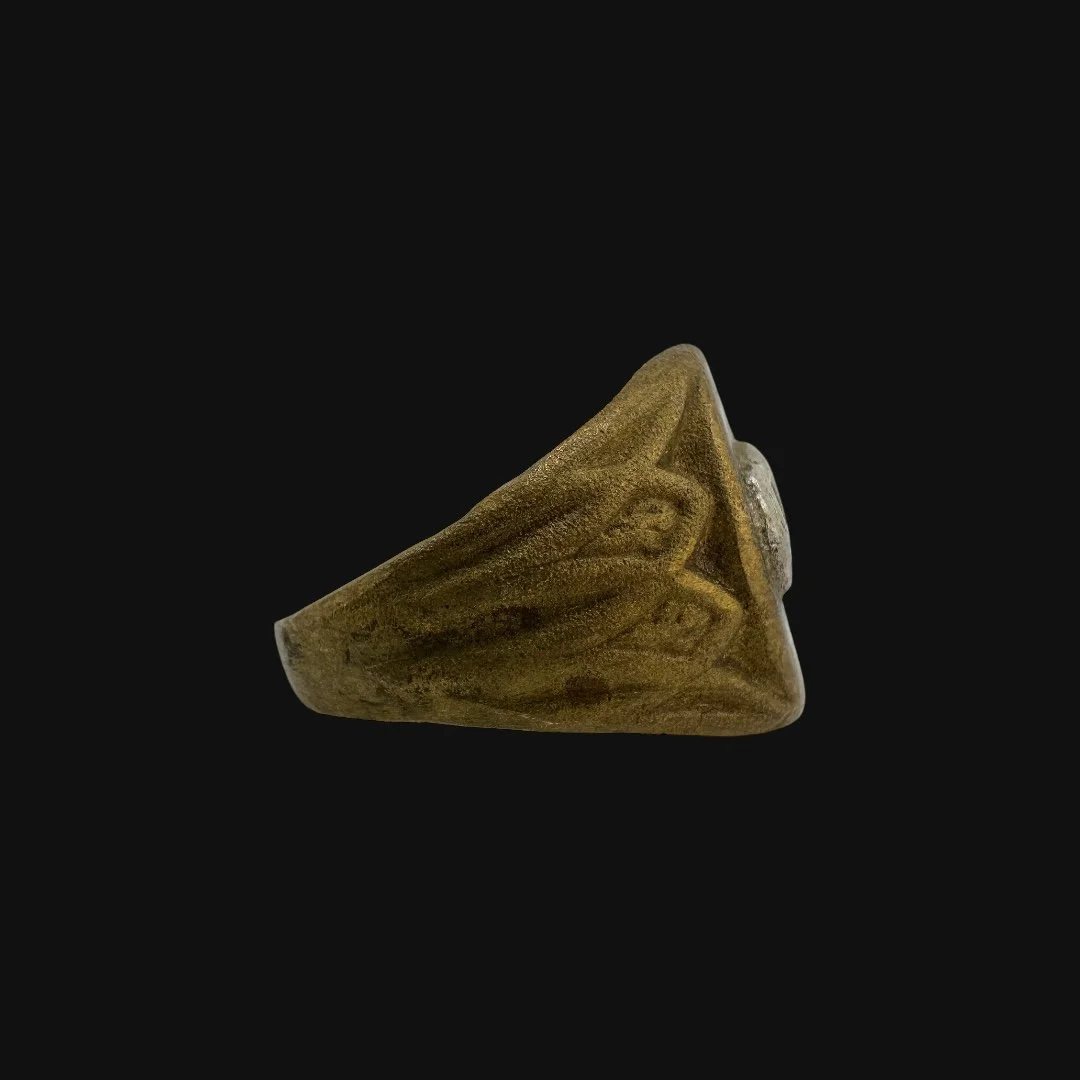 Image 2 of 14
Image 2 of 14

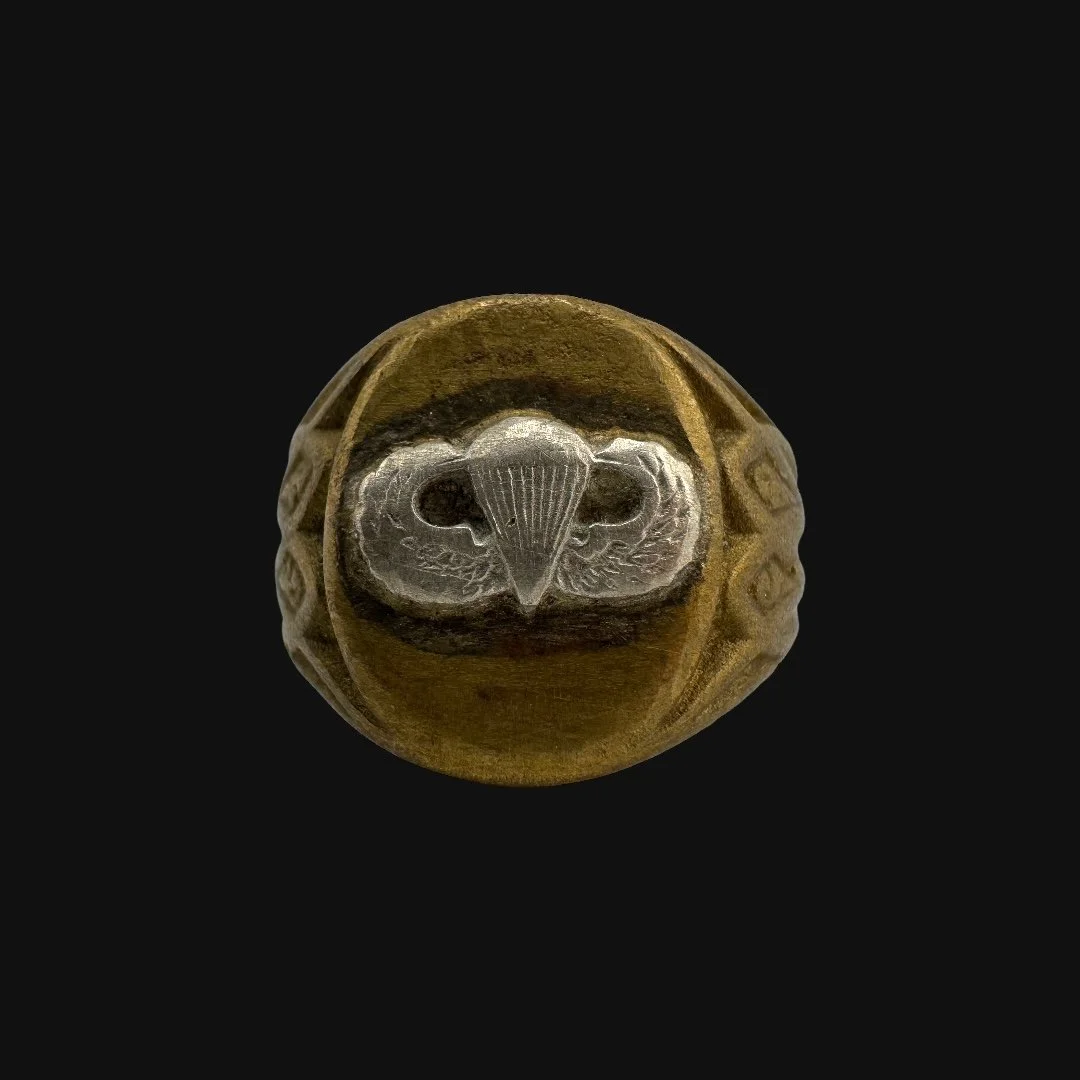 Image 3 of 14
Image 3 of 14

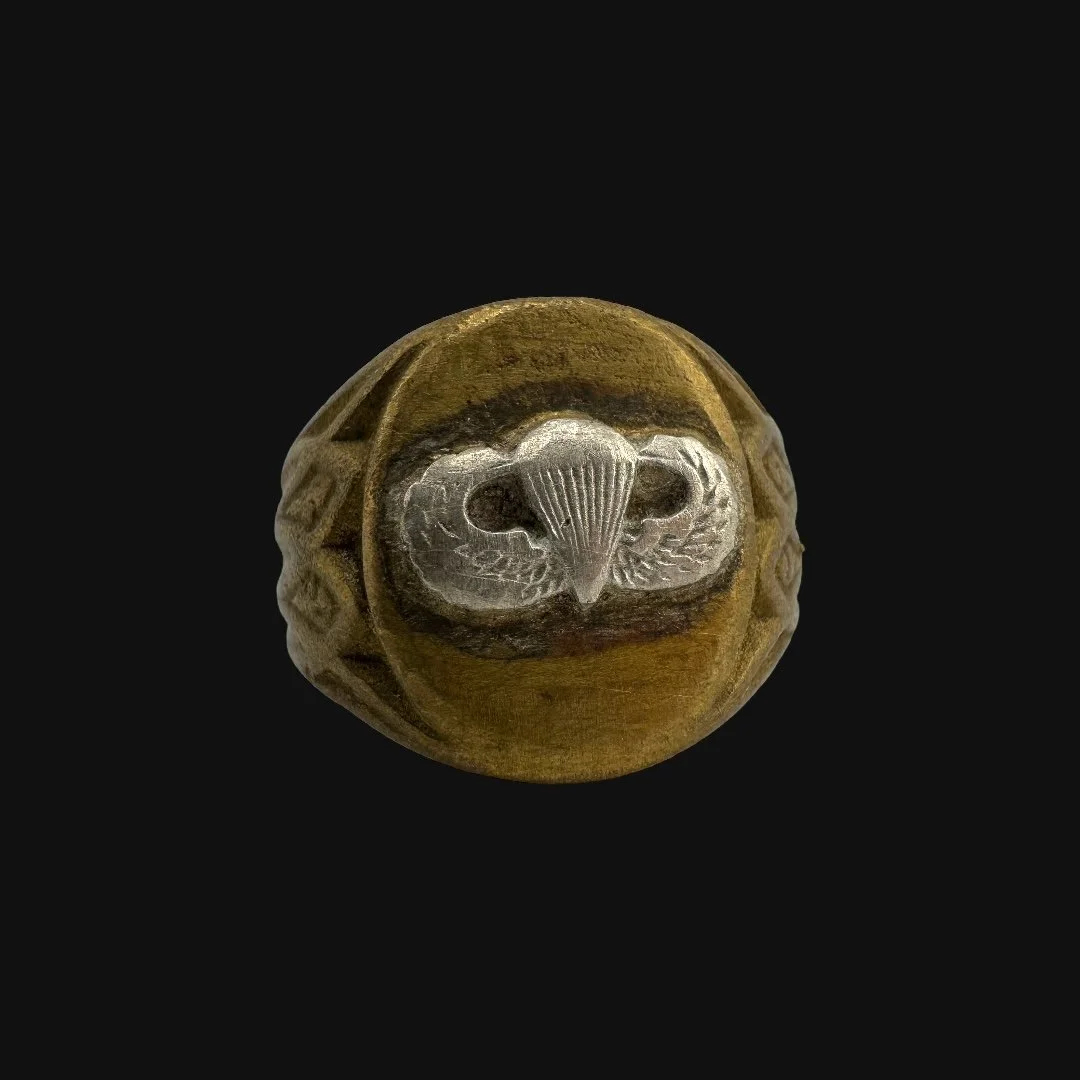 Image 4 of 14
Image 4 of 14

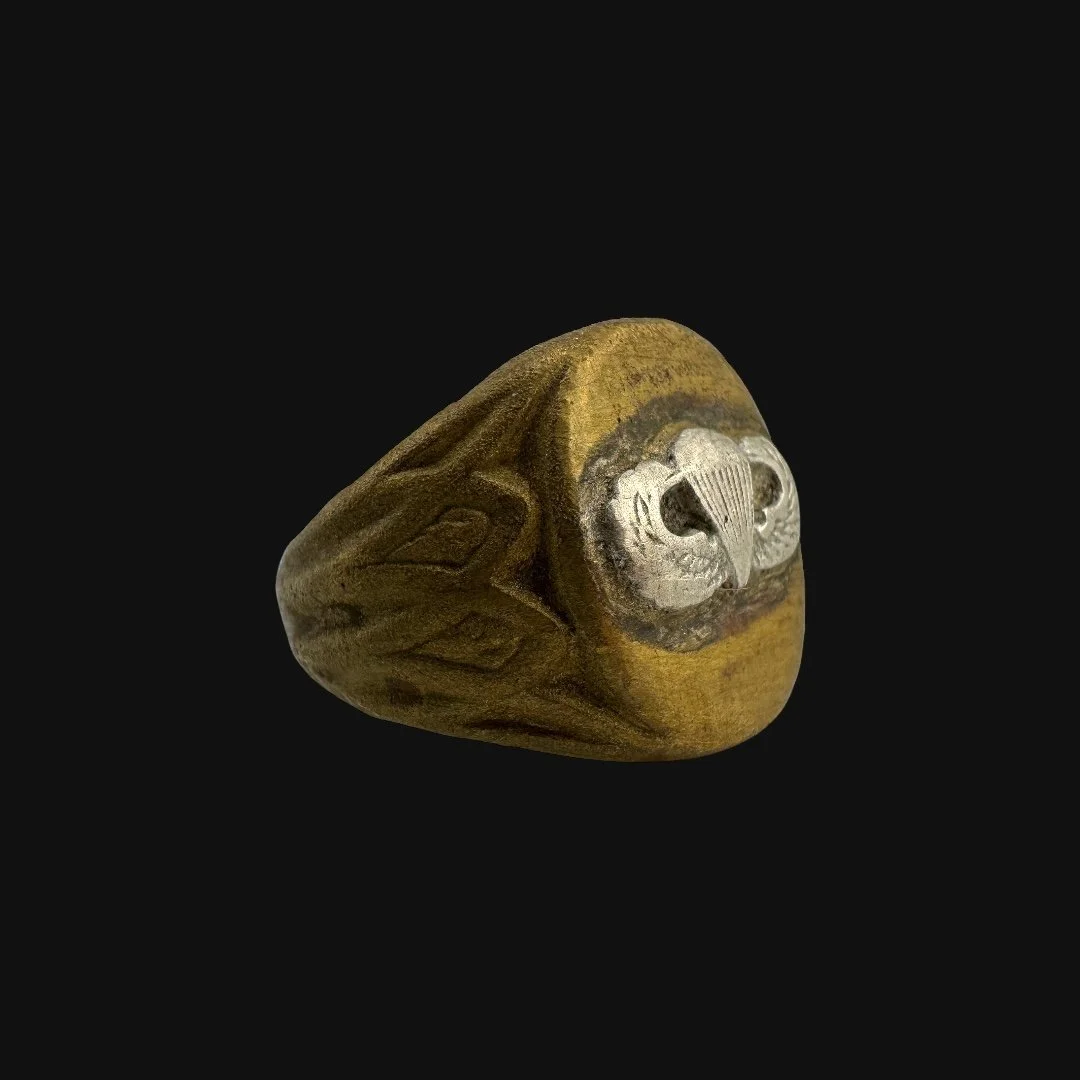 Image 5 of 14
Image 5 of 14

 Image 6 of 14
Image 6 of 14

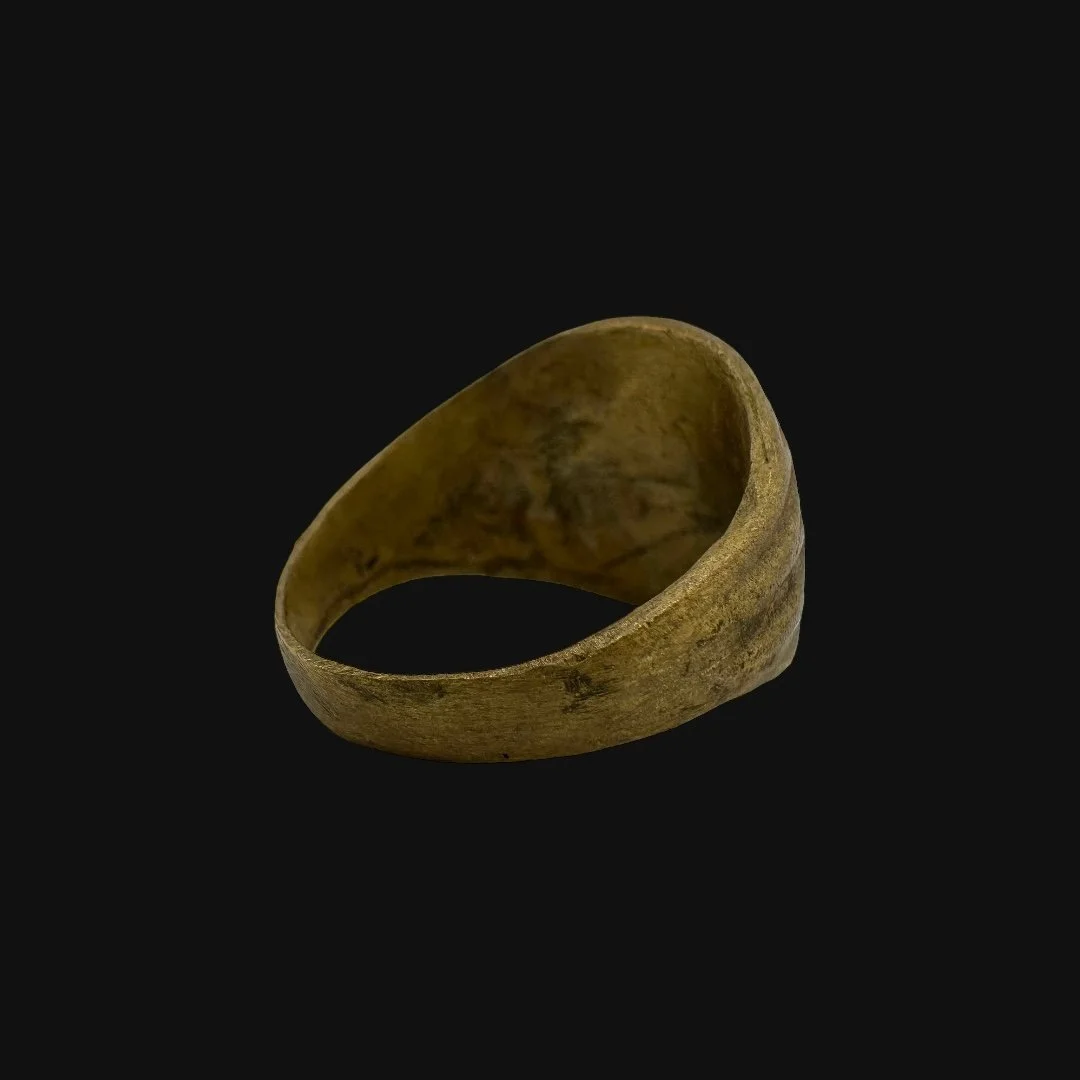 Image 7 of 14
Image 7 of 14

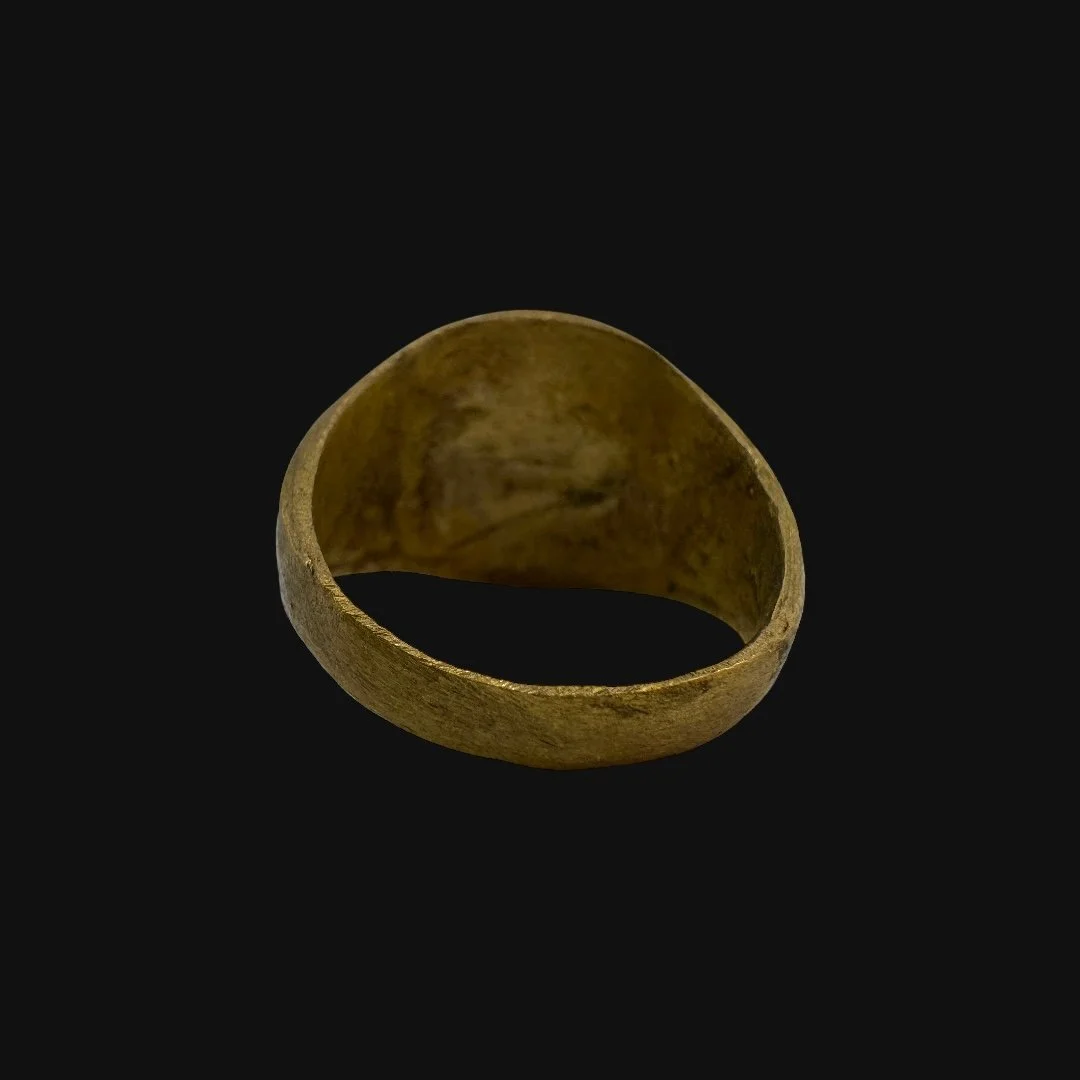 Image 8 of 14
Image 8 of 14

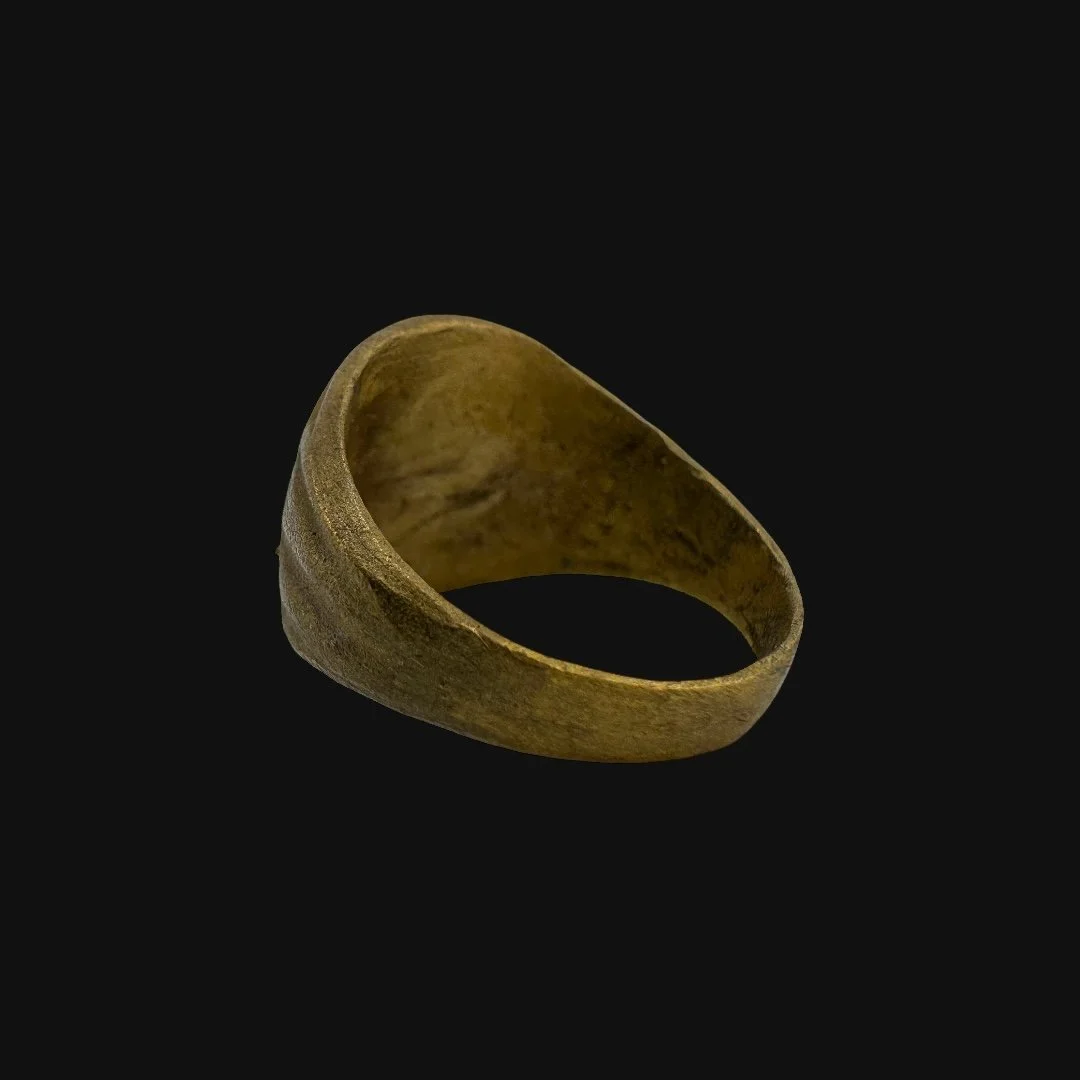 Image 9 of 14
Image 9 of 14

 Image 10 of 14
Image 10 of 14

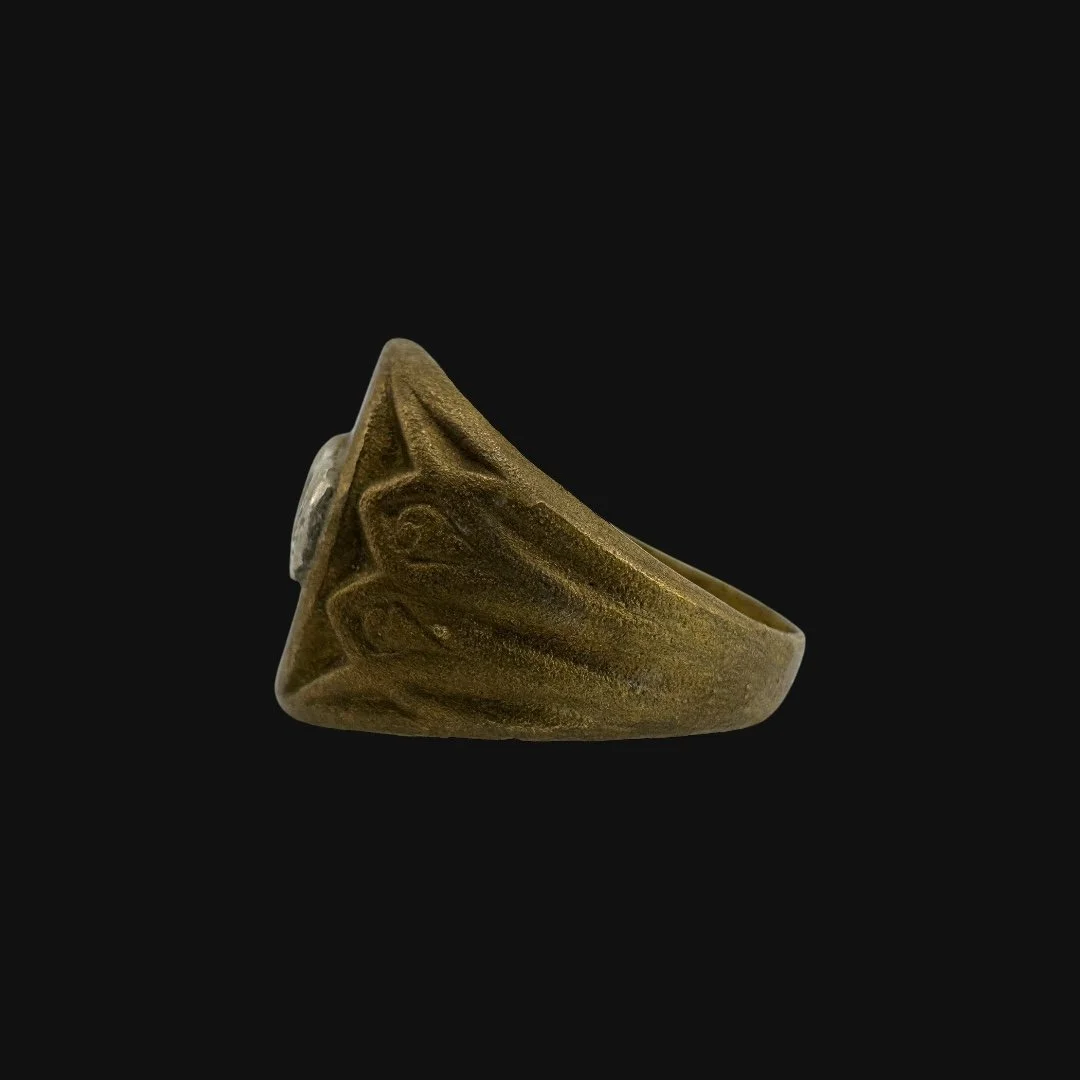 Image 11 of 14
Image 11 of 14

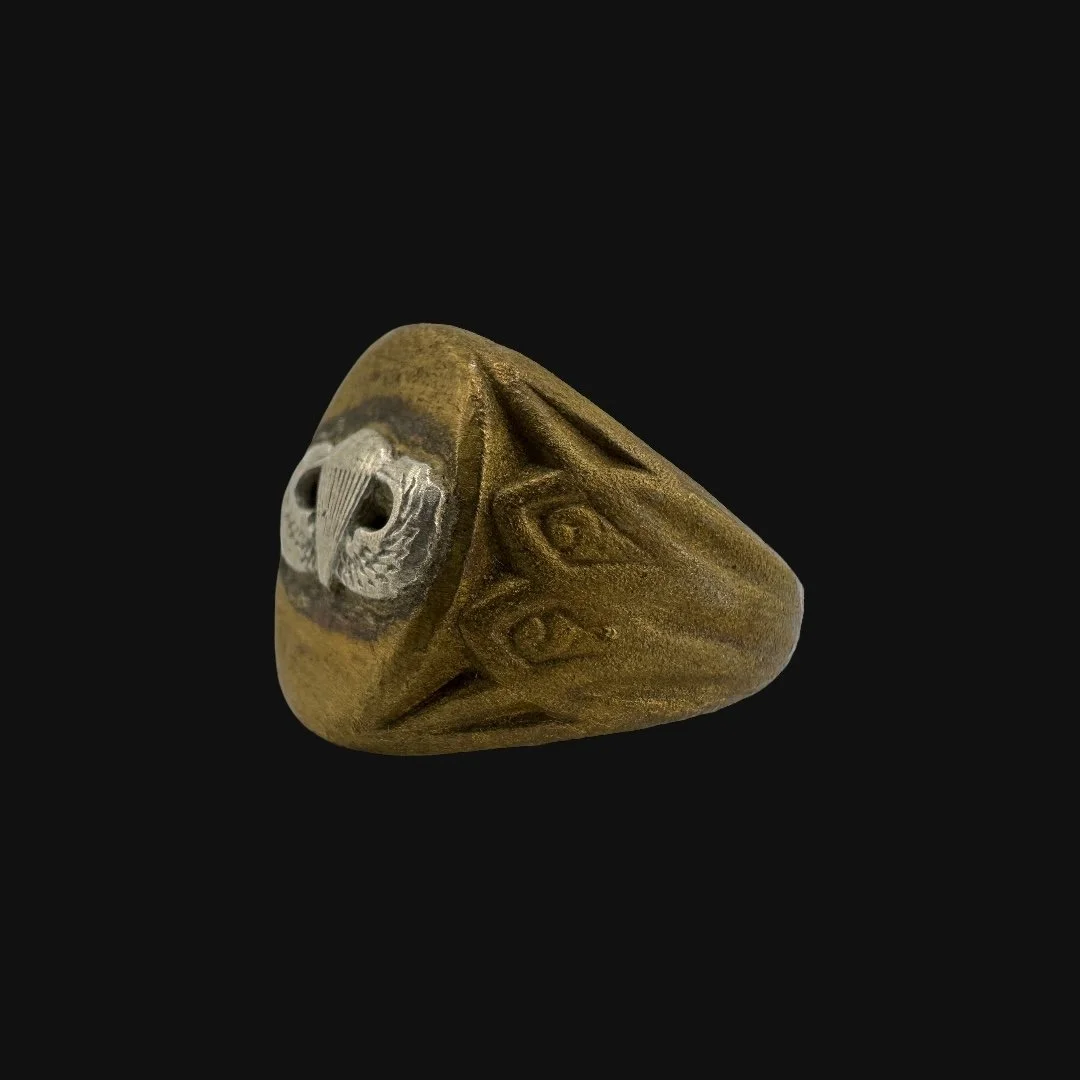 Image 12 of 14
Image 12 of 14

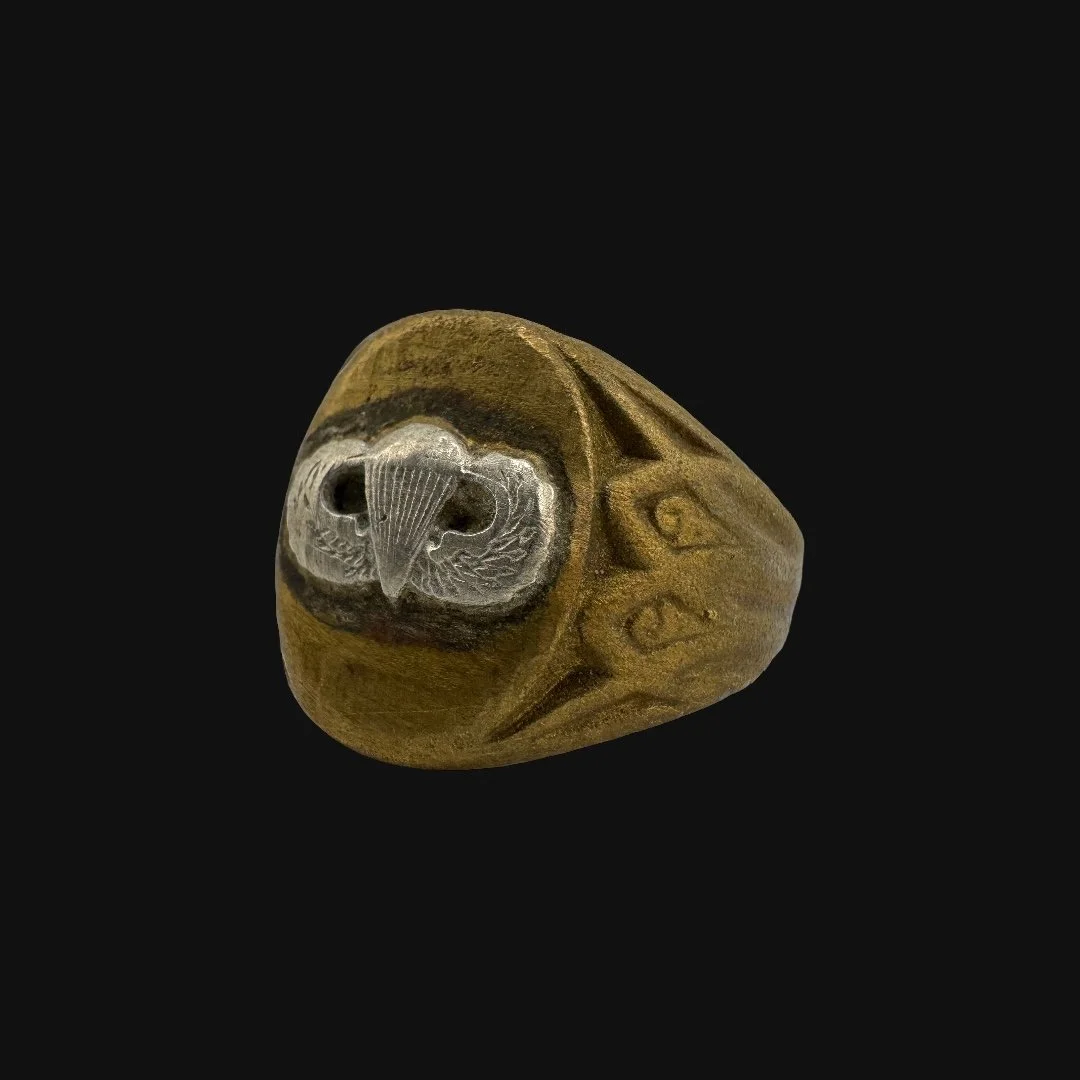 Image 13 of 14
Image 13 of 14

 Image 14 of 14
Image 14 of 14















Original WWII 1943-1945 U.S. Army “Paratrooper Jump Wings” 101st & 82nd Airborne Division Military Ring (Size 11)
Comes with a hand-signed C.O.A. and a full historical research write-up
From: World War II
Branch: U.S. Army (101st & 82nd Airborne Division)
Dated: 1943-1945
Ring Size: 11 (US)
Material: Bronze & Sterling Silver
Wearable History Collection:
This authentic 1943-1945 WWII-era ring, preserved in its original and unaltered condition, combines exceptional craftsmanship with lasting durability, making it fully suitable for modern wear today. As part of our exclusive World War II “Wearable History Ring Collection,” it offers the rare opportunity to own and wear a genuine piece of World War II. Both a timeless accessory and a tangible link to the past, this truly one-of-a-kind ring stands as a wearable tribute to the courage and sacrifice of a generation.
Historical Significance to the 101st and 82nd Airborne Divisions During WWII:
The101st and 82nd Airborne Divisionsbecame two of the most storied U.S. Army units of World War II, their reputations forged in some of the most decisive campaigns of the conflict. The82nd Airborne, reactivated as the Army’s first airborne division in 1942, pioneered large-scale parachute assaults in Sicily and at Salerno, proving that airborne operations could disrupt enemy lines and secure critical ground. OnD-Day, the division parachuted into Normandy, with men scattered across the countryside but still managing to seize Sainte-Mère-Église, block German reinforcements, and secure routes inland from Utah Beach. Later, duringOperation Market Garden, the 82nd fought hard at Nijmegen to capture bridges over the Maas and Waal, showcasing tenacity even in a failed overall operation.
The101st Airborne, known as the “Screaming Eagles,” entered combat in Normandy as well, dropping behind Utah Beach to hold causeways and capture Carentan in fierce fighting that ensured the Allies could link their beachheads. In September 1944, the 101st took part in Market Garden, holding critical roads near Eindhoven and Veghel. But it was in theBattle of the Bulgethat the division cemented its legacy. Surrounded at Bastogne in December 1944, short on food, ammunition, and winter gear, the 101st held firm against repeated German attacks. Brigadier General Anthony McAuliffe’s defiant “Nuts!” reply to a surrender demand became symbolic of American resolve. Their stand bought vital time until Patton’s relief forces arrived, helping turn the tide of the Ardennes campaign.
Together, the 82nd and 101st Airborne Divisions exemplified the value of airborne warfare. Their ability to drop behind enemy lines, seize vital terrain, and hold it under brutal conditions directly shaped Allied successes in Europe. They also embodied the grit and adaptability of American soldiers—often scattered, outnumbered, and isolated, yet able to improvise and fight effectively. By 1945, their eagle and “All American” insignias were symbols of elite fighting spirit, and their legacy remains one of courage, sacrifice, and innovation in modern warfare.
The Legacy Within This Ring:
This original World War II U.S. Army 101st and 82nd Airborne Division ring is a rare and personal artifact, privately commissioned by a paratrooper who served in America’s most storied airborne units. Bearing the proudparatrooper jump wingson its front, the ring allowed its owner to carry the symbol of his service not only on his uniform but as a constant reminder on his hand. For the men of the 101st “Screaming Eagles” and the 82nd “All American,” who leapt into the night skies over Normandy, Holland, and beyond, such rings were far more than jewelry. They stood as daily emblems of courage, sacrifice, and the unbreakable brotherhood forged in the fire of airborne combat.
Each engraved detail reflects the pride and spirit of the soldiers who carried the fight behind enemy lines, often scattered and outnumbered, yet determined to seize their objectives and hold them at all costs. This ring embodies the legacy of those who dropped into Sainte-Mère-Église, defended Bastogne, and fought through the hedgerows and forests of Europe. Today, it survives as a wearable relic of the airborne divisions’ heroic legacy. It represents not only the daring of the paratroopers who jumped into history, but also the lasting bond of the men who proved, time and again, that they were willing to give everything for their mission, their comrades, and their country.
Comes with a hand-signed C.O.A. and a full historical research write-up
From: World War II
Branch: U.S. Army (101st & 82nd Airborne Division)
Dated: 1943-1945
Ring Size: 11 (US)
Material: Bronze & Sterling Silver
Wearable History Collection:
This authentic 1943-1945 WWII-era ring, preserved in its original and unaltered condition, combines exceptional craftsmanship with lasting durability, making it fully suitable for modern wear today. As part of our exclusive World War II “Wearable History Ring Collection,” it offers the rare opportunity to own and wear a genuine piece of World War II. Both a timeless accessory and a tangible link to the past, this truly one-of-a-kind ring stands as a wearable tribute to the courage and sacrifice of a generation.
Historical Significance to the 101st and 82nd Airborne Divisions During WWII:
The101st and 82nd Airborne Divisionsbecame two of the most storied U.S. Army units of World War II, their reputations forged in some of the most decisive campaigns of the conflict. The82nd Airborne, reactivated as the Army’s first airborne division in 1942, pioneered large-scale parachute assaults in Sicily and at Salerno, proving that airborne operations could disrupt enemy lines and secure critical ground. OnD-Day, the division parachuted into Normandy, with men scattered across the countryside but still managing to seize Sainte-Mère-Église, block German reinforcements, and secure routes inland from Utah Beach. Later, duringOperation Market Garden, the 82nd fought hard at Nijmegen to capture bridges over the Maas and Waal, showcasing tenacity even in a failed overall operation.
The101st Airborne, known as the “Screaming Eagles,” entered combat in Normandy as well, dropping behind Utah Beach to hold causeways and capture Carentan in fierce fighting that ensured the Allies could link their beachheads. In September 1944, the 101st took part in Market Garden, holding critical roads near Eindhoven and Veghel. But it was in theBattle of the Bulgethat the division cemented its legacy. Surrounded at Bastogne in December 1944, short on food, ammunition, and winter gear, the 101st held firm against repeated German attacks. Brigadier General Anthony McAuliffe’s defiant “Nuts!” reply to a surrender demand became symbolic of American resolve. Their stand bought vital time until Patton’s relief forces arrived, helping turn the tide of the Ardennes campaign.
Together, the 82nd and 101st Airborne Divisions exemplified the value of airborne warfare. Their ability to drop behind enemy lines, seize vital terrain, and hold it under brutal conditions directly shaped Allied successes in Europe. They also embodied the grit and adaptability of American soldiers—often scattered, outnumbered, and isolated, yet able to improvise and fight effectively. By 1945, their eagle and “All American” insignias were symbols of elite fighting spirit, and their legacy remains one of courage, sacrifice, and innovation in modern warfare.
The Legacy Within This Ring:
This original World War II U.S. Army 101st and 82nd Airborne Division ring is a rare and personal artifact, privately commissioned by a paratrooper who served in America’s most storied airborne units. Bearing the proudparatrooper jump wingson its front, the ring allowed its owner to carry the symbol of his service not only on his uniform but as a constant reminder on his hand. For the men of the 101st “Screaming Eagles” and the 82nd “All American,” who leapt into the night skies over Normandy, Holland, and beyond, such rings were far more than jewelry. They stood as daily emblems of courage, sacrifice, and the unbreakable brotherhood forged in the fire of airborne combat.
Each engraved detail reflects the pride and spirit of the soldiers who carried the fight behind enemy lines, often scattered and outnumbered, yet determined to seize their objectives and hold them at all costs. This ring embodies the legacy of those who dropped into Sainte-Mère-Église, defended Bastogne, and fought through the hedgerows and forests of Europe. Today, it survives as a wearable relic of the airborne divisions’ heroic legacy. It represents not only the daring of the paratroopers who jumped into history, but also the lasting bond of the men who proved, time and again, that they were willing to give everything for their mission, their comrades, and their country.
